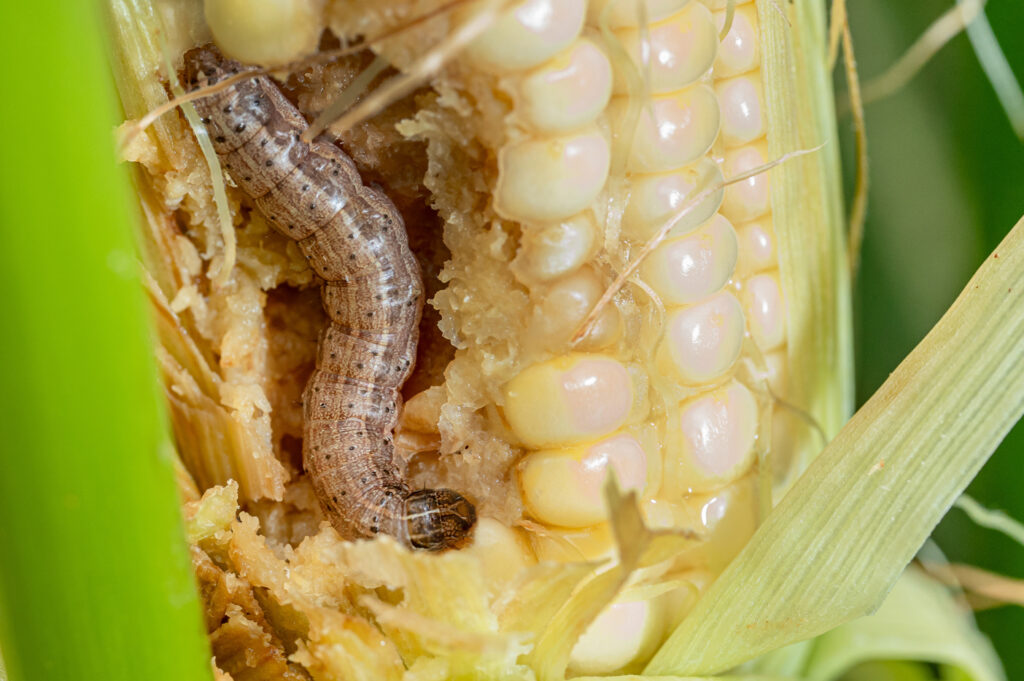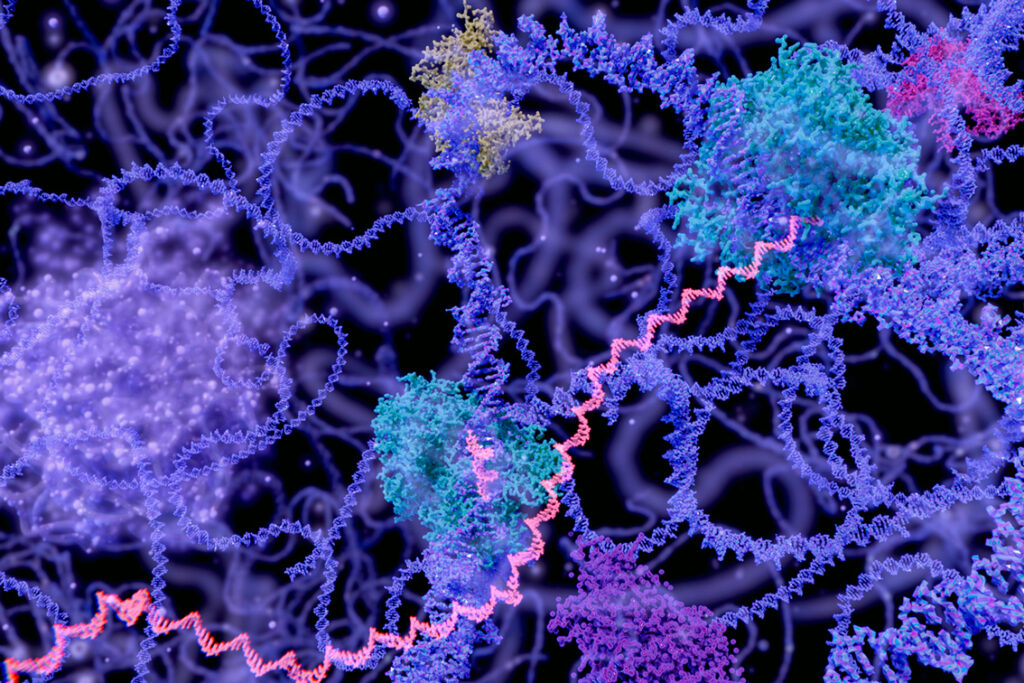Proteção de cultivos
Publicações notáveis
O impacto da plasticidade reprodutiva no manejo agronômico
A plasticidade reprodutiva é essencial para estabilizar os rendimentos no milho, em situações de densidades baixa e ultrabaixa. Este trabalho apresenta uma nova estrutura conceitual para a plasticidade vegetativa e reprodutiva no milho, com aplicações agronômicas diretas.

Milho Bt, uma ferramenta eficaz contra a lagarta-do-cartucho
A lagarta da espécie Spodoptera frugiperda é uma ameaça incrivelmente invasiva e que ataca muitas culturas básicas em todo o mundo. Assim, é importante que se faça o monitoramento de FAW para investigar o desenvolvimento de resistência às soluções de proteção de cultivos existentes para que novas gerações de produtos derivados da biotecnologia possam ser pesquisadas, desenvolvidas e utilizadas no controle eficaz da praga. Nesta pesquisa, conduzimos estudos em laboratório, casa de vegetação e campo para estudar duas proteínas específicas em um milho geneticamente modificado (GM). Descobrimos que a expressão dessas proteínas foi altamente eficaz na proteção das plantas contra os danos causados pela FAW, representando uma alternativa importante para o manejo de problemas de resistência a biotecnologias na América do Sul.

Residues of glyphosate and aminomethylphosphonic acid (AMPA) in genetically modified glyphosate tolerant soybean, corn and cotton crops
Todas as publicações
de Proteção de cultivos
8147822
767K3RFF
items
1
0
date
desc
12052
https://aclatam.cropscience.bayer.com/wp-content/plugins/zotpress/
%7B%22status%22%3A%22success%22%2C%22updateneeded%22%3Afalse%2C%22instance%22%3A%22zotpress-4c96860e504cf5aaa46b75757a9631ee%22%2C%22meta%22%3A%7B%22request_last%22%3A300%2C%22request_next%22%3A50%2C%22used_cache%22%3Atrue%7D%2C%22data%22%3A%5B%7B%22key%22%3A%22C72JMPIS%22%2C%22library%22%3A%7B%22id%22%3A8147822%7D%2C%22meta%22%3A%7B%22creatorSummary%22%3A%22Taenzler%20et%20al.%22%2C%22parsedDate%22%3A%222023%22%2C%22numChildren%22%3A0%7D%2C%22bib%22%3A%22%3Cdiv%20class%3D%5C%22csl-bib-body%5C%22%20style%3D%5C%22line-height%3A%202%3B%20padding-left%3A%201em%3B%20text-indent%3A-1em%3B%5C%22%3E%5Cn%20%20%3Cdiv%20class%3D%5C%22csl-entry%5C%22%3ETaenzler%2C%20V.%2C%20Weyers%2C%20A.%2C%20Maus%2C%20C.%2C%20Ebeling%2C%20M.%2C%20Levine%2C%20S.%2C%20Cabrera%2C%20A.%2C%20Schmehl%2C%20D.%2C%20Gao%2C%20Z.%2C%20%26amp%3B%20Rodea-Palomares%2C%20I.%20%282023%29.%20Acute%20toxicity%20of%20pesticide%20mixtures%20to%20honey%20bees%20is%20generally%20additive%2C%20and%20well%20predicted%20by%20Concentration%20Addition.%20%3Ci%3EScience%20of%20The%20Total%20Environment%3C%5C%2Fi%3E%2C%20%3Ci%3E857%3C%5C%2Fi%3E%2C%20159518.%20%3Ca%20href%3D%27https%3A%5C%2F%5C%2Fdoi.org%5C%2F10.1016%5C%2Fj.scitotenv.2022.159518%27%3Ehttps%3A%5C%2F%5C%2Fdoi.org%5C%2F10.1016%5C%2Fj.scitotenv.2022.159518%3C%5C%2Fa%3E%3C%5C%2Fdiv%3E%5Cn%3C%5C%2Fdiv%3E%22%2C%22data%22%3A%7B%22itemType%22%3A%22journalArticle%22%2C%22title%22%3A%22Acute%20toxicity%20of%20pesticide%20mixtures%20to%20honey%20bees%20is%20generally%20additive%2C%20and%20well%20predicted%20by%20Concentration%20Addition%22%2C%22creators%22%3A%5B%7B%22creatorType%22%3A%22author%22%2C%22firstName%22%3A%22Verena%22%2C%22lastName%22%3A%22Taenzler%22%7D%2C%7B%22creatorType%22%3A%22author%22%2C%22firstName%22%3A%22Arnd%22%2C%22lastName%22%3A%22Weyers%22%7D%2C%7B%22creatorType%22%3A%22author%22%2C%22firstName%22%3A%22Christian%22%2C%22lastName%22%3A%22Maus%22%7D%2C%7B%22creatorType%22%3A%22author%22%2C%22firstName%22%3A%22Markus%22%2C%22lastName%22%3A%22Ebeling%22%7D%2C%7B%22creatorType%22%3A%22author%22%2C%22firstName%22%3A%22Steven%22%2C%22lastName%22%3A%22Levine%22%7D%2C%7B%22creatorType%22%3A%22author%22%2C%22firstName%22%3A%22Ana%22%2C%22lastName%22%3A%22Cabrera%22%7D%2C%7B%22creatorType%22%3A%22author%22%2C%22firstName%22%3A%22Daniel%22%2C%22lastName%22%3A%22Schmehl%22%7D%2C%7B%22creatorType%22%3A%22author%22%2C%22firstName%22%3A%22Zhenglei%22%2C%22lastName%22%3A%22Gao%22%7D%2C%7B%22creatorType%22%3A%22author%22%2C%22firstName%22%3A%22Ismael%22%2C%22lastName%22%3A%22Rodea-Palomares%22%7D%5D%2C%22abstractNote%22%3A%22%22%2C%22date%22%3A%2201%5C%2F2023%22%2C%22language%22%3A%22en%22%2C%22DOI%22%3A%2210.1016%5C%2Fj.scitotenv.2022.159518%22%2C%22ISSN%22%3A%2200489697%22%2C%22url%22%3A%22https%3A%5C%2F%5C%2Flinkinghub.elsevier.com%5C%2Fretrieve%5C%2Fpii%5C%2FS0048969722066177%22%2C%22collections%22%3A%5B%22767K3RFF%22%5D%2C%22dateModified%22%3A%222022-11-24T16%3A46%3A13Z%22%7D%7D%2C%7B%22key%22%3A%22ANI7X98T%22%2C%22library%22%3A%7B%22id%22%3A8147822%7D%2C%22meta%22%3A%7B%22creatorSummary%22%3A%22D%5Cu00e9glin%20et%20al.%22%2C%22parsedDate%22%3A%222022-12-01%22%2C%22numChildren%22%3A0%7D%2C%22bib%22%3A%22%3Cdiv%20class%3D%5C%22csl-bib-body%5C%22%20style%3D%5C%22line-height%3A%202%3B%20padding-left%3A%201em%3B%20text-indent%3A-1em%3B%5C%22%3E%5Cn%20%20%3Cdiv%20class%3D%5C%22csl-entry%5C%22%3ED%26%23xE9%3Bglin%2C%20S.%20E.%2C%20Burstyn%2C%20I.%2C%20Chen%2C%20C.%20L.%2C%20Miller%2C%20D.%20J.%2C%20Gribble%2C%20M.%20O.%2C%20Hamade%2C%20A.%20K.%2C%20Chang%2C%20E.%20T.%2C%20Avanasi%2C%20R.%2C%20Boon%2C%20D.%2C%20%26amp%3B%20Reed%2C%20J.%20%282022%29.%20Considerations%20towards%20the%20better%20integration%20of%20epidemiology%20into%20quantitative%20risk%20assessment.%20%3Ci%3EGlobal%20Epidemiology%3C%5C%2Fi%3E%2C%20%3Ci%3E4%3C%5C%2Fi%3E%2C%20100084.%20%3Ca%20href%3D%27https%3A%5C%2F%5C%2Fdoi.org%5C%2F10.1016%5C%2Fj.gloepi.2022.100084%27%3Ehttps%3A%5C%2F%5C%2Fdoi.org%5C%2F10.1016%5C%2Fj.gloepi.2022.100084%3C%5C%2Fa%3E%3C%5C%2Fdiv%3E%5Cn%3C%5C%2Fdiv%3E%22%2C%22data%22%3A%7B%22itemType%22%3A%22journalArticle%22%2C%22title%22%3A%22Considerations%20towards%20the%20better%20integration%20of%20epidemiology%20into%20quantitative%20risk%20assessment%22%2C%22creators%22%3A%5B%7B%22creatorType%22%3A%22author%22%2C%22firstName%22%3A%22Sandrine%20E.%22%2C%22lastName%22%3A%22D%5Cu00e9glin%22%7D%2C%7B%22creatorType%22%3A%22author%22%2C%22firstName%22%3A%22Igor%22%2C%22lastName%22%3A%22Burstyn%22%7D%2C%7B%22creatorType%22%3A%22author%22%2C%22firstName%22%3A%22Connie%20L.%22%2C%22lastName%22%3A%22Chen%22%7D%2C%7B%22creatorType%22%3A%22author%22%2C%22firstName%22%3A%22David%20J.%22%2C%22lastName%22%3A%22Miller%22%7D%2C%7B%22creatorType%22%3A%22author%22%2C%22firstName%22%3A%22Matthew%20O.%22%2C%22lastName%22%3A%22Gribble%22%7D%2C%7B%22creatorType%22%3A%22author%22%2C%22firstName%22%3A%22Ali%20K.%22%2C%22lastName%22%3A%22Hamade%22%7D%2C%7B%22creatorType%22%3A%22author%22%2C%22firstName%22%3A%22Ellen%20T.%22%2C%22lastName%22%3A%22Chang%22%7D%2C%7B%22creatorType%22%3A%22author%22%2C%22firstName%22%3A%22Raghavendhran%22%2C%22lastName%22%3A%22Avanasi%22%7D%2C%7B%22creatorType%22%3A%22author%22%2C%22firstName%22%3A%22Denali%22%2C%22lastName%22%3A%22Boon%22%7D%2C%7B%22creatorType%22%3A%22author%22%2C%22firstName%22%3A%22Jennifer%22%2C%22lastName%22%3A%22Reed%22%7D%5D%2C%22abstractNote%22%3A%22Environmental%20epidemiology%20has%20proven%20critical%20to%20study%20various%20associations%20between%20environmental%20exposures%20and%20adverse%20human%20health%20effects.%20However%2C%20there%20is%20a%20perception%20that%20it%20often%20does%20not%20sufficiently%20inform%20quantitative%20risk%20assessment.%20To%20help%20address%20this%20concern%2C%20in%202017%2C%20the%20Health%20and%20Environmental%20Sciences%20Institute%20initiated%20a%20project%20engaging%20the%20epidemiology%2C%20exposure%20science%2C%20and%20risk%20assessment%20communities%20with%20tripartite%20representation%20from%20government%20agencies%2C%20industry%2C%20and%20academia%2C%20in%20a%20dialogue%20on%20the%20use%20of%20environmental%20epidemiology%20for%20quantitative%20risk%20assessment%20and%20public%20health%20decision%20making.%20As%20part%20of%20this%20project%2C%20four%20meetings%20attended%20by%20experts%20in%20epidemiology%2C%20exposure%20science%2C%20toxicology%2C%20statistics%2C%20and%20risk%20assessment%2C%20as%20well%20as%20one%20additional%20meeting%20engaging%20funding%20agencies%2C%20were%20organized%20to%20explore%20incentives%20and%20barriers%20to%20realizing%20the%20full%20potential%20of%20epidemiological%20data%20in%20quantitative%20risk%20assessment.%20A%20set%20of%20questions%20was%20shared%20with%20workshop%20participants%20prior%20to%20the%20meetings%2C%20and%20two%20case%20studies%20were%20used%20to%20support%20the%20discussion.%20Five%20key%20ideas%20emerged%20from%20these%20meetings%20as%20areas%20of%20desired%20improvement%20to%20ensure%20that%20human%20data%20can%20more%20consistently%20become%20an%20integral%20part%20of%20quantitative%20risk%20assessment%3A%201%29%20reducing%20confirmation%20and%20publication%20bias%2C%202%29%20increasing%20communication%20with%20funding%20agencies%20to%20raise%20awareness%20of%20research%20needs%2C%203%29%20developing%20alternative%20funding%20channels%20targeted%20to%20support%20quantitative%20risk%20assessment%2C%204%29%20making%20data%20available%20for%20reuse%20and%20analysis%2C%20and%205%29%20developing%20cross-disciplinary%20and%20cross-sectoral%20interactions%2C%20collaborations%2C%20and%20training.%20We%20explored%20and%20integrated%20these%20themes%20into%20a%20roadmap%20illustrating%20the%20need%20for%20a%20multi-stakeholder%20effort%20to%20ensure%20that%20epidemiological%20data%20can%20fully%20contribute%20to%20the%20quantitative%20evaluation%20of%20human%20health%20risks%2C%20and%20to%20build%20confidence%20in%20a%20reliable%20decision-making%20process%20that%20leverages%20the%20totality%20of%20scientific%20evidence.%22%2C%22date%22%3A%222022-12-01%22%2C%22language%22%3A%22%22%2C%22DOI%22%3A%2210.1016%5C%2Fj.gloepi.2022.100084%22%2C%22ISSN%22%3A%222590-1133%22%2C%22url%22%3A%22https%3A%5C%2F%5C%2Fwww.sciencedirect.com%5C%2Fscience%5C%2Farticle%5C%2Fpii%5C%2FS2590113322000141%22%2C%22collections%22%3A%5B%22767K3RFF%22%5D%2C%22dateModified%22%3A%222022-11-24T16%3A46%3A06Z%22%7D%7D%2C%7B%22key%22%3A%22YU83CNCV%22%2C%22library%22%3A%7B%22id%22%3A8147822%7D%2C%22meta%22%3A%7B%22creatorSummary%22%3A%22Rathjens%20et%20al.%22%2C%22parsedDate%22%3A%222022-10-21%22%2C%22numChildren%22%3A0%7D%2C%22bib%22%3A%22%3Cdiv%20class%3D%5C%22csl-bib-body%5C%22%20style%3D%5C%22line-height%3A%202%3B%20padding-left%3A%201em%3B%20text-indent%3A-1em%3B%5C%22%3E%5Cn%20%20%3Cdiv%20class%3D%5C%22csl-entry%5C%22%3ERathjens%2C%20H.%2C%20Miguez%2C%20M.%20B.%2C%20Winchell%2C%20M.%2C%20%26amp%3B%20Sur%2C%20R.%20%282022%29.%20Evaluation%20of%20SEAWAVE%26%23x2013%3BQEX%20in%20a%20high%20agricultural%20intensity%20catchment%20in%20Belgium.%20%3Ci%3EIntegrated%20Environmental%20Assessment%20and%20Management%3C%5C%2Fi%3E%2C%20ieam.4688.%20%3Ca%20href%3D%27https%3A%5C%2F%5C%2Fdoi.org%5C%2F10.1002%5C%2Fieam.4688%27%3Ehttps%3A%5C%2F%5C%2Fdoi.org%5C%2F10.1002%5C%2Fieam.4688%3C%5C%2Fa%3E%3C%5C%2Fdiv%3E%5Cn%3C%5C%2Fdiv%3E%22%2C%22data%22%3A%7B%22itemType%22%3A%22journalArticle%22%2C%22title%22%3A%22Evaluation%20of%20SEAWAVE%5Cu2013QEX%20in%20a%20high%20agricultural%20intensity%20catchment%20in%20Belgium%22%2C%22creators%22%3A%5B%7B%22creatorType%22%3A%22author%22%2C%22firstName%22%3A%22Hendrik%22%2C%22lastName%22%3A%22Rathjens%22%7D%2C%7B%22creatorType%22%3A%22author%22%2C%22firstName%22%3A%22Maria%20Bettina%22%2C%22lastName%22%3A%22Miguez%22%7D%2C%7B%22creatorType%22%3A%22author%22%2C%22firstName%22%3A%22Michael%22%2C%22lastName%22%3A%22Winchell%22%7D%2C%7B%22creatorType%22%3A%22author%22%2C%22firstName%22%3A%22Robin%22%2C%22lastName%22%3A%22Sur%22%7D%5D%2C%22abstractNote%22%3A%22%22%2C%22date%22%3A%222022-10-21%22%2C%22language%22%3A%22en%22%2C%22DOI%22%3A%2210.1002%5C%2Fieam.4688%22%2C%22ISSN%22%3A%221551-3777%2C%201551-3793%22%2C%22url%22%3A%22https%3A%5C%2F%5C%2Fonlinelibrary.wiley.com%5C%2Fdoi%5C%2F10.1002%5C%2Fieam.4688%22%2C%22collections%22%3A%5B%22767K3RFF%22%5D%2C%22dateModified%22%3A%222022-11-24T16%3A46%3A08Z%22%7D%7D%2C%7B%22key%22%3A%226LWDT4FY%22%2C%22library%22%3A%7B%22id%22%3A8147822%7D%2C%22meta%22%3A%7B%22creatorSummary%22%3A%22Mundt%20et%20al.%22%2C%22parsedDate%22%3A%222022-10-07%22%2C%22numChildren%22%3A0%7D%2C%22bib%22%3A%22%3Cdiv%20class%3D%5C%22csl-bib-body%5C%22%20style%3D%5C%22line-height%3A%202%3B%20padding-left%3A%201em%3B%20text-indent%3A-1em%3B%5C%22%3E%5Cn%20%20%3Cdiv%20class%3D%5C%22csl-entry%5C%22%3EMundt%2C%20T.%20T.%2C%20Carbonari%2C%20C.%20A.%2C%20Moisinho%2C%20I.%20S.%2C%20de%20Brito%2C%20I.%20P.%20F.%20S.%2C%20Picoli%20Junior%2C%20G.%20J.%2C%20Ovejero%2C%20R.%20F.%20L.%2C%20%26amp%3B%20Velini%2C%20E.%20D.%20%282022%29.%20Dynamics%20and%20weed%20control%20effectiveness%20of%20dicamba%20herbicide%20when%20applied%20directly%20on%20the%20soil%20and%20corn%20straw%20in%20Brazil.%20%3Ci%3EJournal%20of%20Environmental%20Science%20and%20Health%2C%20Part%20B%3C%5C%2Fi%3E%2C%201%26%23x2013%3B11.%20%3Ca%20href%3D%27https%3A%5C%2F%5C%2Fdoi.org%5C%2F10.1080%5C%2F03601234.2022.2128613%27%3Ehttps%3A%5C%2F%5C%2Fdoi.org%5C%2F10.1080%5C%2F03601234.2022.2128613%3C%5C%2Fa%3E%3C%5C%2Fdiv%3E%5Cn%3C%5C%2Fdiv%3E%22%2C%22data%22%3A%7B%22itemType%22%3A%22journalArticle%22%2C%22title%22%3A%22Dynamics%20and%20weed%20control%20effectiveness%20of%20dicamba%20herbicide%20when%20applied%20directly%20on%20the%20soil%20and%20corn%20straw%20in%20Brazil%22%2C%22creators%22%3A%5B%7B%22creatorType%22%3A%22author%22%2C%22firstName%22%3A%22Tamara%20Tha%5Cu00eds%22%2C%22lastName%22%3A%22Mundt%22%7D%2C%7B%22creatorType%22%3A%22author%22%2C%22firstName%22%3A%22Caio%20Antonio%22%2C%22lastName%22%3A%22Carbonari%22%7D%2C%7B%22creatorType%22%3A%22author%22%2C%22firstName%22%3A%22Ivana%20Santos%22%2C%22lastName%22%3A%22Moisinho%22%7D%2C%7B%22creatorType%22%3A%22author%22%2C%22firstName%22%3A%22Ivana%20Paula%20Ferraz%20Santos%22%2C%22lastName%22%3A%22de%20Brito%22%7D%2C%7B%22creatorType%22%3A%22author%22%2C%22firstName%22%3A%22Gilmar%20Jos%5Cu00e9%22%2C%22lastName%22%3A%22Picoli%20Junior%22%7D%2C%7B%22creatorType%22%3A%22author%22%2C%22firstName%22%3A%22Ramiro%20Fernando%20Lopez%22%2C%22lastName%22%3A%22Ovejero%22%7D%2C%7B%22creatorType%22%3A%22author%22%2C%22firstName%22%3A%22Edivaldo%20Domingues%22%2C%22lastName%22%3A%22Velini%22%7D%5D%2C%22abstractNote%22%3A%22%22%2C%22date%22%3A%222022-10-07%22%2C%22language%22%3A%22en%22%2C%22DOI%22%3A%2210.1080%5C%2F03601234.2022.2128613%22%2C%22ISSN%22%3A%220360-1234%2C%201532-4109%22%2C%22url%22%3A%22https%3A%5C%2F%5C%2Fwww.tandfonline.com%5C%2Fdoi%5C%2Ffull%5C%2F10.1080%5C%2F03601234.2022.2128613%22%2C%22collections%22%3A%5B%22767K3RFF%22%5D%2C%22dateModified%22%3A%222022-11-24T16%3A46%3A16Z%22%7D%7D%2C%7B%22key%22%3A%22EWSDR6PX%22%2C%22library%22%3A%7B%22id%22%3A8147822%7D%2C%22meta%22%3A%7B%22creatorSummary%22%3A%22Barber%22%2C%22parsedDate%22%3A%222022-09-14%22%2C%22numChildren%22%3A0%7D%2C%22bib%22%3A%22%3Cdiv%20class%3D%5C%22csl-bib-body%5C%22%20style%3D%5C%22line-height%3A%202%3B%20padding-left%3A%201em%3B%20text-indent%3A-1em%3B%5C%22%3E%5Cn%20%20%3Cdiv%20class%3D%5C%22csl-entry%5C%22%3EBarber%2C%20D.%20M.%20%282022%29.%20A%20Competitive%20Edge%3A%20Competitor%20Inspired%20Scaffold%20Hopping%20in%20Herbicide%20Lead%20Optimization.%20%3Ci%3EJournal%20of%20Agricultural%20and%20Food%20Chemistry%3C%5C%2Fi%3E%2C%20%3Ci%3E70%3C%5C%2Fi%3E%2836%29%2C%2011075%26%23x2013%3B11090.%20%3Ca%20href%3D%27https%3A%5C%2F%5C%2Fdoi.org%5C%2F10.1021%5C%2Facs.jafc.1c07910%27%3Ehttps%3A%5C%2F%5C%2Fdoi.org%5C%2F10.1021%5C%2Facs.jafc.1c07910%3C%5C%2Fa%3E%3C%5C%2Fdiv%3E%5Cn%3C%5C%2Fdiv%3E%22%2C%22data%22%3A%7B%22itemType%22%3A%22journalArticle%22%2C%22title%22%3A%22A%20Competitive%20Edge%3A%20Competitor%20Inspired%20Scaffold%20Hopping%20in%20Herbicide%20Lead%20Optimization%22%2C%22creators%22%3A%5B%7B%22creatorType%22%3A%22author%22%2C%22firstName%22%3A%22David%20M.%22%2C%22lastName%22%3A%22Barber%22%7D%5D%2C%22abstractNote%22%3A%22%22%2C%22date%22%3A%222022-09-14%22%2C%22language%22%3A%22en%22%2C%22DOI%22%3A%2210.1021%5C%2Facs.jafc.1c07910%22%2C%22ISSN%22%3A%220021-8561%2C%201520-5118%22%2C%22url%22%3A%22https%3A%5C%2F%5C%2Fpubs.acs.org%5C%2Fdoi%5C%2F10.1021%5C%2Facs.jafc.1c07910%22%2C%22collections%22%3A%5B%22767K3RFF%22%5D%2C%22dateModified%22%3A%222022-11-24T16%3A46%3A15Z%22%7D%7D%2C%7B%22key%22%3A%22ZRJ8D6RV%22%2C%22library%22%3A%7B%22id%22%3A8147822%7D%2C%22meta%22%3A%7B%22creatorSummary%22%3A%22Fouch%5Cu00e9%20et%20al.%22%2C%22parsedDate%22%3A%222022-07-25%22%2C%22numChildren%22%3A0%7D%2C%22bib%22%3A%22%3Cdiv%20class%3D%5C%22csl-bib-body%5C%22%20style%3D%5C%22line-height%3A%202%3B%20padding-left%3A%201em%3B%20text-indent%3A-1em%3B%5C%22%3E%5Cn%20%20%3Cdiv%20class%3D%5C%22csl-entry%5C%22%3EFouch%26%23xE9%3B%2C%20G.%2C%20Rosati%2C%20D.%2C%20Venet%2C%20C.%2C%20Josserand%2C%20H.%2C%20Latorse%2C%20M.-P.%2C%20Debieu%2C%20D.%2C%20%26amp%3B%20Fillinger%2C%20S.%20%282022%29.%20LC-MS%5C%2FMS-Based%20Fungicide%20Accumulation%20Assay%20to%20Demonstrate%20Efflux%20Activity%20in%20the%20Wheat%20Pathogen%20Zymoseptoria%20tritici.%20%3Ci%3EMicroorganisms%3C%5C%2Fi%3E%2C%20%3Ci%3E10%3C%5C%2Fi%3E%288%29%2C%201494.%20%3Ca%20href%3D%27https%3A%5C%2F%5C%2Fdoi.org%5C%2F10.3390%5C%2Fmicroorganisms10081494%27%3Ehttps%3A%5C%2F%5C%2Fdoi.org%5C%2F10.3390%5C%2Fmicroorganisms10081494%3C%5C%2Fa%3E%3C%5C%2Fdiv%3E%5Cn%3C%5C%2Fdiv%3E%22%2C%22data%22%3A%7B%22itemType%22%3A%22journalArticle%22%2C%22title%22%3A%22LC-MS%5C%2FMS-Based%20Fungicide%20Accumulation%20Assay%20to%20Demonstrate%20Efflux%20Activity%20in%20the%20Wheat%20Pathogen%20Zymoseptoria%20tritici%22%2C%22creators%22%3A%5B%7B%22creatorType%22%3A%22author%22%2C%22firstName%22%3A%22Guillaume%22%2C%22lastName%22%3A%22Fouch%5Cu00e9%22%7D%2C%7B%22creatorType%22%3A%22author%22%2C%22firstName%22%3A%22Dominique%22%2C%22lastName%22%3A%22Rosati%22%7D%2C%7B%22creatorType%22%3A%22author%22%2C%22firstName%22%3A%22Catherine%22%2C%22lastName%22%3A%22Venet%22%7D%2C%7B%22creatorType%22%3A%22author%22%2C%22firstName%22%3A%22Herv%5Cu00e9%22%2C%22lastName%22%3A%22Josserand%22%7D%2C%7B%22creatorType%22%3A%22author%22%2C%22firstName%22%3A%22Marie-Pascale%22%2C%22lastName%22%3A%22Latorse%22%7D%2C%7B%22creatorType%22%3A%22author%22%2C%22firstName%22%3A%22Dani%5Cu00e8le%22%2C%22lastName%22%3A%22Debieu%22%7D%2C%7B%22creatorType%22%3A%22author%22%2C%22firstName%22%3A%22Sabine%22%2C%22lastName%22%3A%22Fillinger%22%7D%5D%2C%22abstractNote%22%3A%22Increased%20drug%20efflux%20compromises%20the%20efficacy%20of%20a%20large%20panel%20of%20treatments%20in%20the%20clinic%20against%20cancer%20or%20bacterial%2C%20fungal%2C%20and%20viral%20diseases%2C%20and%20in%20agriculture%20due%20to%20the%20emergence%20of%20multidrug-resistant%20pathogenic%20fungi.%20Until%20recently%2C%20to%20demonstrate%20increased%20drug%20efflux%2C%20the%20use%20of%20labeled%20drugs%20or%20fluorescent%20dyes%20was%20necessary.%20With%20the%20increasing%20sensitivity%20of%20detection%20devices%2C%20direct%20assessment%20of%20drug%20efflux%20has%20become%20realistic.%20Here%2C%20we%20describe%20a%20medium-throughput%20method%20to%20assess%20the%20intracellular%20drug%20concentration%20in%20the%20plant%20pathogenic%20fungus%20Zymoseptoria%20tritici%20cultivated%20in%20the%20presence%20of%20a%20sublethal%20fungicide%20concentration.%20As%20a%20model%20fungicide%2C%20we%20used%20the%20succinate-dehydrogenase%20inhibitor%20boscalid.%20The%20boscalid%20concentration%20was%20assessed%20in%20the%20different%20culture%20fractions%20using%20mass%20spectrometry%20linked%20to%20liquid%20chromatography%20%28LC-MS%5C%2FMS%29.%20The%20ratio%20between%20the%20intracellular%20and%20total%20boscalid%20amount%20was%20used%20as%20an%20inversed%20proxy%20for%20the%20efflux%20activity.%20Using%20isogenic%20mutant%20strains%20known%20for%20their%20differential%20efflux%20capacities%2C%20we%20validated%20the%20negative%20correlation%20between%20the%20intracellular%20boscalid%20concentration%20and%20efflux%20activity.%20In%20addition%2C%20intra-cellular%20fungicide%20accumulation%20explains%20the%20susceptibility%20of%20the%20tested%20strains%20to%20boscalid.%20This%20assay%20may%20be%20useful%20in%20lead%20development%20when%20a%20new%20molecule%20displays%20good%20inhibitory%20activity%20against%20its%20isolated%20target%20protein%20but%20fails%20to%20control%20the%20target%20organism.%22%2C%22date%22%3A%222022-07-25%22%2C%22language%22%3A%22en%22%2C%22DOI%22%3A%2210.3390%5C%2Fmicroorganisms10081494%22%2C%22ISSN%22%3A%222076-2607%22%2C%22url%22%3A%22https%3A%5C%2F%5C%2Fwww.mdpi.com%5C%2F2076-2607%5C%2F10%5C%2F8%5C%2F1494%22%2C%22collections%22%3A%5B%22767K3RFF%22%5D%2C%22dateModified%22%3A%222022-11-24T16%3A46%3A25Z%22%7D%7D%2C%7B%22key%22%3A%22AVJREQF9%22%2C%22library%22%3A%7B%22id%22%3A8147822%7D%2C%22meta%22%3A%7B%22creatorSummary%22%3A%22Zhang%20et%20al.%22%2C%22parsedDate%22%3A%222022-07-11%22%2C%22numChildren%22%3A0%7D%2C%22bib%22%3A%22%3Cdiv%20class%3D%5C%22csl-bib-body%5C%22%20style%3D%5C%22line-height%3A%202%3B%20padding-left%3A%201em%3B%20text-indent%3A-1em%3B%5C%22%3E%5Cn%20%20%3Cdiv%20class%3D%5C%22csl-entry%5C%22%3EZhang%2C%20G.%2C%20Ma%2C%20T.%2C%20Cheng%2C%20Y.%2C%20Wang%2C%20J.%2C%20Liu%2C%20L.%2C%20%26amp%3B%20Zhang%2C%20B.%20%282022%29.%20Effects%20of%20Different%20Environment-Friendly%20Gibberellic%20Acid%20Microcapsules%20on%20Herbicide%20Injury%20of%20Wheat.%20%3Ci%3EFrontiers%20in%20Plant%20Science%3C%5C%2Fi%3E%2C%20%3Ci%3E13%3C%5C%2Fi%3E%2C%20915506.%20%3Ca%20href%3D%27https%3A%5C%2F%5C%2Fdoi.org%5C%2F10.3389%5C%2Ffpls.2022.915506%27%3Ehttps%3A%5C%2F%5C%2Fdoi.org%5C%2F10.3389%5C%2Ffpls.2022.915506%3C%5C%2Fa%3E%3C%5C%2Fdiv%3E%5Cn%3C%5C%2Fdiv%3E%22%2C%22data%22%3A%7B%22itemType%22%3A%22journalArticle%22%2C%22title%22%3A%22Effects%20of%20Different%20Environment-Friendly%20Gibberellic%20Acid%20Microcapsules%20on%20Herbicide%20Injury%20of%20Wheat%22%2C%22creators%22%3A%5B%7B%22creatorType%22%3A%22author%22%2C%22firstName%22%3A%22Guisen%22%2C%22lastName%22%3A%22Zhang%22%7D%2C%7B%22creatorType%22%3A%22author%22%2C%22firstName%22%3A%22Tao%22%2C%22lastName%22%3A%22Ma%22%7D%2C%7B%22creatorType%22%3A%22author%22%2C%22firstName%22%3A%22Yong%22%2C%22lastName%22%3A%22Cheng%22%7D%2C%7B%22creatorType%22%3A%22author%22%2C%22firstName%22%3A%22Jianing%22%2C%22lastName%22%3A%22Wang%22%7D%2C%7B%22creatorType%22%3A%22author%22%2C%22firstName%22%3A%22Lang%22%2C%22lastName%22%3A%22Liu%22%7D%2C%7B%22creatorType%22%3A%22author%22%2C%22firstName%22%3A%22Baojun%22%2C%22lastName%22%3A%22Zhang%22%7D%5D%2C%22abstractNote%22%3A%22Environmentally%20friendly%20microcapsules%20are%20becoming%20more%20and%20more%20widely%20used%20due%20to%20the%20increasing%20demand%20for%20environmental%20safety%20in%20pesticides.%20To%20compare%20the%20impact%20of%20differences%20in%20wheat%20herbicide%20phytotoxicity%20of%20different%20gibberellic%20acid%20microcapsule%20suspensions%2C%20two%20microcapsule%20suspensions%20were%20separately%20formulated%20using%20the%20phase%20transfer%20method%20and%20the%5Cn%20%20%20%20%20%20%20%20%20%20%20%20%20%20in%20situ%5Cn%20%20%20%20%20%20%20%20%20%20%20%20%20%20polymerization%20method%2C%20and%20the%20key%20performance%20indicators%20are%20the%20size%20of%20microcapsules%20and%20the%20degree%20of%20encapsulation.%20Meanwhile%2C%20through%20field%20trials%2C%20the%20pharmacological%20and%20detoxification%20effects%20of%20different%20types%20of%20microcapsule%20suspensions%20on%20the%20herbicide%20methyldisulfuron%20in%20wheat%20fields%20were%20compared.%20The%20microcapsule%20suspension%20was%20prepared%20by%20the%20phase%20transfer%20method%20and%20the%20particle%20sizes%20D%5Cn%20%20%20%20%20%20%20%20%20%20%20%20%20%2010%5Cn%20%20%20%20%20%20%20%20%20%20%20%20%20%20%2C%20D%5Cn%20%20%20%20%20%20%20%20%20%20%20%20%20%2050%5Cn%20%20%20%20%20%20%20%20%20%20%20%20%20%20%2C%20and%20D%5Cn%20%20%20%20%20%20%20%20%20%20%20%20%20%2090%5Cn%20%20%20%20%20%20%20%20%20%20%20%20%20%20are%200.990%2C%202.136%2C%20and%205.201%20%5Cu03bcm%2C%20respectively%3B%20the%20microcapsule%20suspension%20was%20prepared%20by%20the%5Cn%20%20%20%20%20%20%20%20%20%20%20%20%20%20in%20situ%5Cn%20%20%20%20%20%20%20%20%20%20%20%20%20%20polymerization%2C%20the%20particle%20sizes%20D%5Cn%20%20%20%20%20%20%20%20%20%20%20%20%20%2010%5Cn%20%20%20%20%20%20%20%20%20%20%20%20%20%20%2C%20D%5Cn%20%20%20%20%20%20%20%20%20%20%20%20%20%2050%5Cn%20%20%20%20%20%20%20%20%20%20%20%20%20%20%2C%20and%20D%5Cn%20%20%20%20%20%20%20%20%20%20%20%20%20%2090%5Cn%20%20%20%20%20%20%20%20%20%20%20%20%20%20are%204.365%2C%208.547%2C%20and%2016.782%20%5Cu03bcm%2C%20respectively.%20The%20encapsulation%20rate%20of%20the%20microcapsules%20prepared%20by%20the%20phase%20transfer%20method%20and%20the%5Cn%20%20%20%20%20%20%20%20%20%20%20%20%20%20in%20situ%5Cn%20%20%20%20%20%20%20%20%20%20%20%20%20%20polymerization%20method%20was%2086.9%25%20and%2091.2%25%2C%20being%20higher%20than%2080%25%2C%20the%20national%20standard%20for%20capsules.%20Meanwhile%2C%20the%20release%20rate%20conforms%20to%20first-order%20release%20kinetics%20in%200%5Cu20134%20days%20and%20zero-order%20release%20kinetics%20in%205%5Cu201328%20days.%20The%20plot%20trials%27%20result%20showed%20that%20the%20detoxification%20effect%20of%20the%20microcapsules%20prepared%20by%20the%5Cn%20%20%20%20%20%20%20%20%20%20%20%20%20%20in%20situ%5Cn%20%20%20%20%20%20%20%20%20%20%20%20%20%20polymerization%20method%20was%20significantly%20better%20than%20the%20detoxification%20effect%20of%20the%20microcapsules%20prepared%20by%20the%20phase%20transfer%20method%20and%20the%20control%20agent.%20The%20growth%20index%20of%20wheat%20was%20higher%20than%20that%20of%20the%20untreated%20check%20after%20using%20the%20agent.%22%2C%22date%22%3A%222022-7-11%22%2C%22language%22%3A%22%22%2C%22DOI%22%3A%2210.3389%5C%2Ffpls.2022.915506%22%2C%22ISSN%22%3A%221664-462X%22%2C%22url%22%3A%22https%3A%5C%2F%5C%2Fwww.frontiersin.org%5C%2Farticles%5C%2F10.3389%5C%2Ffpls.2022.915506%5C%2Ffull%22%2C%22collections%22%3A%5B%22767K3RFF%22%5D%2C%22dateModified%22%3A%222022-11-24T16%3A46%3A24Z%22%7D%7D%2C%7B%22key%22%3A%22MRXYLBFI%22%2C%22library%22%3A%7B%22id%22%3A8147822%7D%2C%22meta%22%3A%7B%22creatorSummary%22%3A%22Denecke%20et%20al.%22%2C%22parsedDate%22%3A%222022-05-25%22%2C%22numChildren%22%3A0%7D%2C%22bib%22%3A%22%3Cdiv%20class%3D%5C%22csl-bib-body%5C%22%20style%3D%5C%22line-height%3A%202%3B%20padding-left%3A%201em%3B%20text-indent%3A-1em%3B%5C%22%3E%5Cn%20%20%3Cdiv%20class%3D%5C%22csl-entry%5C%22%3EDenecke%2C%20S.%2C%20B%26%23x1EA3%3Bo%20L%26%23x1B0%3B%26%23x1A1%3Bng%2C%20H.%20N.%2C%20Koidou%2C%20V.%2C%20Kalogeridi%2C%20M.%2C%20Socratous%2C%20R.%2C%20Howe%2C%20S.%2C%20Vogelsang%2C%20K.%2C%20Nauen%2C%20R.%2C%20Batterham%2C%20P.%2C%20Geibel%2C%20S.%2C%20%26amp%3B%20Vontas%2C%20J.%20%282022%29.%20Characterization%20of%20a%20novel%20pesticide%20transporter%20and%20P-glycoprotein%20orthologues%20in%20%3Ci%3EDrosophila%20melanogaster%3C%5C%2Fi%3E.%20%3Ci%3EProceedings%20of%20the%20Royal%20Society%20B%3A%20Biological%20Sciences%3C%5C%2Fi%3E%2C%20%3Ci%3E289%3C%5C%2Fi%3E%281975%29%2C%2020220625.%20%3Ca%20href%3D%27https%3A%5C%2F%5C%2Fdoi.org%5C%2F10.1098%5C%2Frspb.2022.0625%27%3Ehttps%3A%5C%2F%5C%2Fdoi.org%5C%2F10.1098%5C%2Frspb.2022.0625%3C%5C%2Fa%3E%3C%5C%2Fdiv%3E%5Cn%3C%5C%2Fdiv%3E%22%2C%22data%22%3A%7B%22itemType%22%3A%22journalArticle%22%2C%22title%22%3A%22Characterization%20of%20a%20novel%20pesticide%20transporter%20and%20P-glycoprotein%20orthologues%20in%20%3Ci%3EDrosophila%20melanogaster%3C%5C%2Fi%3E%22%2C%22creators%22%3A%5B%7B%22creatorType%22%3A%22author%22%2C%22firstName%22%3A%22Shane%22%2C%22lastName%22%3A%22Denecke%22%7D%2C%7B%22creatorType%22%3A%22author%22%2C%22firstName%22%3A%22H%5Cu1eb1ng%20Ng%5Cu1ecdc%22%2C%22lastName%22%3A%22B%5Cu1ea3o%20L%5Cu01b0%5Cu01a1ng%22%7D%2C%7B%22creatorType%22%3A%22author%22%2C%22firstName%22%3A%22Venetia%22%2C%22lastName%22%3A%22Koidou%22%7D%2C%7B%22creatorType%22%3A%22author%22%2C%22firstName%22%3A%22Maria%22%2C%22lastName%22%3A%22Kalogeridi%22%7D%2C%7B%22creatorType%22%3A%22author%22%2C%22firstName%22%3A%22Rafaella%22%2C%22lastName%22%3A%22Socratous%22%7D%2C%7B%22creatorType%22%3A%22author%22%2C%22firstName%22%3A%22Steven%22%2C%22lastName%22%3A%22Howe%22%7D%2C%7B%22creatorType%22%3A%22author%22%2C%22firstName%22%3A%22Kathrin%22%2C%22lastName%22%3A%22Vogelsang%22%7D%2C%7B%22creatorType%22%3A%22author%22%2C%22firstName%22%3A%22Ralf%22%2C%22lastName%22%3A%22Nauen%22%7D%2C%7B%22creatorType%22%3A%22author%22%2C%22firstName%22%3A%22Philip%22%2C%22lastName%22%3A%22Batterham%22%7D%2C%7B%22creatorType%22%3A%22author%22%2C%22firstName%22%3A%22Sven%22%2C%22lastName%22%3A%22Geibel%22%7D%2C%7B%22creatorType%22%3A%22author%22%2C%22firstName%22%3A%22John%22%2C%22lastName%22%3A%22Vontas%22%7D%5D%2C%22abstractNote%22%3A%22Pesticides%20remain%20one%20of%20the%20most%20effective%20ways%20of%20controlling%20agricultural%20and%20public%20health%20insects%2C%20but%20much%20is%20still%20unknown%20regarding%20how%20these%20compounds%20reach%20their%20targets.%20Specifically%2C%20the%20role%20of%20ABC%20transporters%20in%20pesticide%20absorption%20and%20excretion%20is%20poorly%20understood%2C%20especially%20compared%20to%20the%20detailed%20knowledge%20about%20mammalian%20systems.%20Here%2C%20we%20present%20a%20comprehensive%20characterization%20of%20pesticide%20transporters%20in%20the%20model%20insect%5Cn%20%20%20%20%20%20%20%20%20%20%20%20%20%20Drosophila%20melanogaster%5Cn%20%20%20%20%20%20%20%20%20%20%20%20%20%20.%20An%20RNAi%20screen%20was%20performed%2C%20which%20knocked%20down%20individual%20ABCs%20in%20specific%20epithelial%20tissues%20and%20examined%20the%20subsequent%20changes%20in%20sensitivity%20to%20the%20pesticides%20spinosad%20and%20fipronil.%20This%20implicated%20a%20novel%20ABC%20drug%20transporter%2C%5Cn%20%20%20%20%20%20%20%20%20%20%20%20%20%20CG4562%2C%5Cn%20%20%20%20%20%20%20%20%20%20%20%20%20%20in%20spinosad%20transport%2C%20but%20also%20highlighted%20the%20P-glycoprotein%20orthologue%5Cn%20%20%20%20%20%20%20%20%20%20%20%20%20%20Mdr65%5Cn%20%20%20%20%20%20%20%20%20%20%20%20%20%20as%20the%20most%20impactful%20ABC%20in%20terms%20of%20chemoprotection.%20Further%20characterization%20of%20the%20P-glycoprotein%20family%20was%20performed%20via%20transgenic%20overexpression%20and%20immunolocalization%2C%20finding%20that%5Cn%20%20%20%20%20%20%20%20%20%20%20%20%20%20Mdr49%5Cn%20%20%20%20%20%20%20%20%20%20%20%20%20%20and%5Cn%20%20%20%20%20%20%20%20%20%20%20%20%20%20Mdr50%5Cn%20%20%20%20%20%20%20%20%20%20%20%20%20%20play%20enigmatic%20roles%20in%20pesticide%20toxicology%20perhaps%20determined%20by%20their%20different%20subcellular%20localizations%20within%20the%20midgut.%20Lastly%2C%20transgenic%5Cn%20%20%20%20%20%20%20%20%20%20%20%20%20%20Drosophila%5Cn%20%20%20%20%20%20%20%20%20%20%20%20%20%20lines%20expressing%20P-glycoprotein%20from%20the%20major%20malaria%20vector%5Cn%20%20%20%20%20%20%20%20%20%20%20%20%20%20Anopheles%20gambiae%5Cn%20%20%20%20%20%20%20%20%20%20%20%20%20%20were%20used%20to%20establish%20a%20system%20for%5Cn%20%20%20%20%20%20%20%20%20%20%20%20%20%20in%20vivo%5Cn%20%20%20%20%20%20%20%20%20%20%20%20%20%20characterization%20of%20this%20transporter%20in%20non-model%20insects.%20This%20study%20provides%20the%20basis%20for%20establishing%5Cn%20%20%20%20%20%20%20%20%20%20%20%20%20%20Drosophila%5Cn%20%20%20%20%20%20%20%20%20%20%20%20%20%20as%20a%20model%20for%20toxicology%20research%20on%20drug%20transporters.%22%2C%22date%22%3A%222022-05-25%22%2C%22language%22%3A%22en%22%2C%22DOI%22%3A%2210.1098%5C%2Frspb.2022.0625%22%2C%22ISSN%22%3A%220962-8452%2C%201471-2954%22%2C%22url%22%3A%22https%3A%5C%2F%5C%2Froyalsocietypublishing.org%5C%2Fdoi%5C%2F10.1098%5C%2Frspb.2022.0625%22%2C%22collections%22%3A%5B%22767K3RFF%22%5D%2C%22dateModified%22%3A%222022-11-24T16%3A46%3A18Z%22%7D%7D%2C%7B%22key%22%3A%22FYLEXL6G%22%2C%22library%22%3A%7B%22id%22%3A8147822%7D%2C%22meta%22%3A%7B%22creatorSummary%22%3A%22Santos%20et%20al.%22%2C%22parsedDate%22%3A%222022-05-03%22%2C%22numChildren%22%3A0%7D%2C%22bib%22%3A%22%3Cdiv%20class%3D%5C%22csl-bib-body%5C%22%20style%3D%5C%22line-height%3A%202%3B%20padding-left%3A%201em%3B%20text-indent%3A-1em%3B%5C%22%3E%5Cn%20%20%3Cdiv%20class%3D%5C%22csl-entry%5C%22%3ESantos%2C%20G.%20S.%2C%20Hamer%2C%20M.%2C%20Tscheschke%2C%20A.%2C%20Bruns%2C%20E.%2C%20Murakami%2C%20L.%2C%20%26amp%3B%20Dohmen%2C%20G.%20P.%20%282022%29.%20Are%20standard%20aquatic%20test%20species%20and%20methods%20adequate%20surrogates%20for%20use%20in%20environmental%20risk%20assessment%20of%20pesticides%20in%20tropical%20environments%3F%20%3Ci%3EIntegrated%20Environmental%20Assessment%20and%20Management%3C%5C%2Fi%3E%2C%20ieam.4616.%20%3Ca%20href%3D%27https%3A%5C%2F%5C%2Fdoi.org%5C%2F10.1002%5C%2Fieam.4616%27%3Ehttps%3A%5C%2F%5C%2Fdoi.org%5C%2F10.1002%5C%2Fieam.4616%3C%5C%2Fa%3E%3C%5C%2Fdiv%3E%5Cn%3C%5C%2Fdiv%3E%22%2C%22data%22%3A%7B%22itemType%22%3A%22journalArticle%22%2C%22title%22%3A%22Are%20standard%20aquatic%20test%20species%20and%20methods%20adequate%20surrogates%20for%20use%20in%20environmental%20risk%20assessment%20of%20pesticides%20in%20tropical%20environments%3F%22%2C%22creators%22%3A%5B%7B%22creatorType%22%3A%22author%22%2C%22firstName%22%3A%22Gustavo%20S.%22%2C%22lastName%22%3A%22Santos%22%7D%2C%7B%22creatorType%22%3A%22author%22%2C%22firstName%22%3A%22Mick%22%2C%22lastName%22%3A%22Hamer%22%7D%2C%7B%22creatorType%22%3A%22author%22%2C%22firstName%22%3A%22Alexandra%22%2C%22lastName%22%3A%22Tscheschke%22%7D%2C%7B%22creatorType%22%3A%22author%22%2C%22firstName%22%3A%22Eric%22%2C%22lastName%22%3A%22Bruns%22%7D%2C%7B%22creatorType%22%3A%22author%22%2C%22firstName%22%3A%22Lucilene%22%2C%22lastName%22%3A%22Murakami%22%7D%2C%7B%22creatorType%22%3A%22author%22%2C%22firstName%22%3A%22Gerhard%20P.%22%2C%22lastName%22%3A%22Dohmen%22%7D%5D%2C%22abstractNote%22%3A%22%22%2C%22date%22%3A%222022-05-03%22%2C%22language%22%3A%22en%22%2C%22DOI%22%3A%2210.1002%5C%2Fieam.4616%22%2C%22ISSN%22%3A%221551-3777%2C%201551-3793%22%2C%22url%22%3A%22https%3A%5C%2F%5C%2Fonlinelibrary.wiley.com%5C%2Fdoi%5C%2F10.1002%5C%2Fieam.4616%22%2C%22collections%22%3A%5B%22767K3RFF%22%5D%2C%22dateModified%22%3A%222022-11-24T16%3A46%3A08Z%22%7D%7D%2C%7B%22key%22%3A%22G5EP7RJA%22%2C%22library%22%3A%7B%22id%22%3A8147822%7D%2C%22meta%22%3A%7B%22creatorSummary%22%3A%22Lazarevi%5Cu0107%20et%20al.%22%2C%22parsedDate%22%3A%222022-02-17%22%2C%22numChildren%22%3A0%7D%2C%22bib%22%3A%22%3Cdiv%20class%3D%5C%22csl-bib-body%5C%22%20style%3D%5C%22line-height%3A%202%3B%20padding-left%3A%201em%3B%20text-indent%3A-1em%3B%5C%22%3E%5Cn%20%20%3Cdiv%20class%3D%5C%22csl-entry%5C%22%3ELazarevi%26%23x107%3B%2C%20J.%2C%20Jevremovi%26%23x107%3B%2C%20S.%2C%20Kosti%26%23x107%3B%2C%20I.%2C%20Vuleta%2C%20A.%2C%20Manita%26%23x161%3Bevi%26%23x107%3B%20Jovanovi%26%23x107%3B%2C%20S.%2C%20Kosti%26%23x107%3B%2C%20M.%2C%20%26amp%3B%20%26%23x160%3Be%26%23x161%3Blija%20Jovanovi%26%23x107%3B%2C%20D.%20%282022%29.%20Assessment%20of%20Sex-Specific%20Toxicity%20and%20Physiological%20Responses%20to%20Thymol%20in%20a%20Common%20Bean%20Pest%20Acanthoscelides%20obtectus%20Say.%20%3Ci%3EFrontiers%20in%20Physiology%3C%5C%2Fi%3E%2C%20%3Ci%3E13%3C%5C%2Fi%3E%2C%20842314.%20%3Ca%20href%3D%27https%3A%5C%2F%5C%2Fdoi.org%5C%2F10.3389%5C%2Ffphys.2022.842314%27%3Ehttps%3A%5C%2F%5C%2Fdoi.org%5C%2F10.3389%5C%2Ffphys.2022.842314%3C%5C%2Fa%3E%3C%5C%2Fdiv%3E%5Cn%3C%5C%2Fdiv%3E%22%2C%22data%22%3A%7B%22itemType%22%3A%22journalArticle%22%2C%22title%22%3A%22Assessment%20of%20Sex-Specific%20Toxicity%20and%20Physiological%20Responses%20to%20Thymol%20in%20a%20Common%20Bean%20Pest%20Acanthoscelides%20obtectus%20Say%22%2C%22creators%22%3A%5B%7B%22creatorType%22%3A%22author%22%2C%22firstName%22%3A%22Jelica%22%2C%22lastName%22%3A%22Lazarevi%5Cu0107%22%7D%2C%7B%22creatorType%22%3A%22author%22%2C%22firstName%22%3A%22Stojan%22%2C%22lastName%22%3A%22Jevremovi%5Cu0107%22%7D%2C%7B%22creatorType%22%3A%22author%22%2C%22firstName%22%3A%22Igor%22%2C%22lastName%22%3A%22Kosti%5Cu0107%22%7D%2C%7B%22creatorType%22%3A%22author%22%2C%22firstName%22%3A%22Ana%22%2C%22lastName%22%3A%22Vuleta%22%7D%2C%7B%22creatorType%22%3A%22author%22%2C%22firstName%22%3A%22Sanja%22%2C%22lastName%22%3A%22Manita%5Cu0161evi%5Cu0107%20Jovanovi%5Cu0107%22%7D%2C%7B%22creatorType%22%3A%22author%22%2C%22firstName%22%3A%22Miroslav%22%2C%22lastName%22%3A%22Kosti%5Cu0107%22%7D%2C%7B%22creatorType%22%3A%22author%22%2C%22firstName%22%3A%22Darka%22%2C%22lastName%22%3A%22%5Cu0160e%5Cu0161lija%20Jovanovi%5Cu0107%22%7D%5D%2C%22abstractNote%22%3A%22Acanthoscelides%20obtectus%5Cn%20%20%20%20%20%20%20%20%20%20%20%20%20%20Say%20%28Coleoptera%3A%20Chrysomelidae%3A%20Bruchinae%29%2C%20is%20one%20of%20the%20most%20important%20pests%20of%20the%20common%20bean%5Cn%20%20%20%20%20%20%20%20%20%20%20%20%20%20Phaseolus%20vulgaris%5Cn%20%20%20%20%20%20%20%20%20%20%20%20%20%20L.%20Without%20appropriate%20management%20it%20may%20cause%20significant%20seed%20loss%20in%20storages.%20In%20search%20for%20means%20of%20environmentally%20safe%20and%20effective%20protection%20of%20beans%20we%20assessed%20biological%20activity%20of%20thymol%2C%20an%20oxygenated%20monoterpene%20present%20in%20essential%20oils%20of%20many%20aromatic%20plants.%20We%20studied%20contact%20toxicity%20of%20thymol%20on%20bean%20seeds%20and%20its%20effects%20on%20adult%20longevity%20and%20emergence%20in%20F1%20generation.%20Furthermore%2C%20we%20determined%20acetylcholinesterase%20%28AChE%29%2C%20superoxide%20dismutase%20%28SOD%29%2C%20catalase%20%28CAT%29%2C%20mixed-function%20oxidase%20%28MFO%29%2C%20carboxylesterases%20%28CarE%29%20and%20glutathione%20S-transferase%20%28GST%29%20activities%20in%20response%20to%2024%20h%20exposure%20of%20beetles%20to%20sublethal%20and%20lethal%20thymol%20concentrations.%20Our%20results%20showed%20that%20thymol%20decreased%20adult%20survival%2C%20longevity%20and%20percentage%20of%20adult%20emergence.%20Higher%20median%20lethal%20concentration%20%28LC%5Cn%20%20%20%20%20%20%20%20%20%20%20%20%20%2050%5Cn%20%20%20%20%20%20%20%20%20%20%20%20%20%20%29%20was%20recorded%20in%20females%20indicating%20their%20higher%20tolerance%20comparing%20to%20males.%20Overall%2C%20activities%20of%20SOD%2C%20CAT%20and%20CarE%20increased%20at%20sublethal%20and%20MFO%20increased%20at%20both%20sublethal%20and%20lethal%20thymol%20concentrations.%20On%20the%20other%20hand%2C%20GST%20and%20AChE%20activities%20decreased%20along%20with%20the%20increase%20in%20thymol%20concentrations%20from%20sublethal%20%281%5C%2F5%20of%20LC%5Cn%20%20%20%20%20%20%20%20%20%20%20%20%20%2050%5Cn%20%20%20%20%20%20%20%20%20%20%20%20%20%20%2C%201%5C%2F2%20of%20LC%5Cn%20%20%20%20%20%20%20%20%20%20%20%20%20%2050%5Cn%20%20%20%20%20%20%20%20%20%20%20%20%20%20%29%20to%20lethal%20%28LC%5Cn%20%20%20%20%20%20%20%20%20%20%20%20%20%2050%5Cn%20%20%20%20%20%20%20%20%20%20%20%20%20%20%29.%20Enzyme%20responses%20to%20the%20presence%20of%20thymol%20on%20bean%20seed%20were%20sex-specific.%20In%20the%20control%20group%20females%20had%20lower%20CarE%20and%20higher%20SOD%2C%20CAT%20and%20GST%20activity%20than%20males.%20In%20treatment%20groups%2C%20females%20had%20much%20higher%20CAT%20activity%20and%20much%20lower%20CarE%20activity%20than%20males.%20Our%20results%20contribute%20to%20deeper%20understanding%20of%20physiological%20mechanisms%20underlying%20thymol%20toxicity%20and%20tolerance%20which%20should%20be%20taken%20into%20account%20in%20future%20formulation%20of%20a%20thymol-based%20insecticide.%22%2C%22date%22%3A%222022-2-17%22%2C%22language%22%3A%22%22%2C%22DOI%22%3A%2210.3389%5C%2Ffphys.2022.842314%22%2C%22ISSN%22%3A%221664-042X%22%2C%22url%22%3A%22https%3A%5C%2F%5C%2Fwww.frontiersin.org%5C%2Farticles%5C%2F10.3389%5C%2Ffphys.2022.842314%5C%2Ffull%22%2C%22collections%22%3A%5B%22767K3RFF%22%5D%2C%22dateModified%22%3A%222022-11-24T16%3A46%3A23Z%22%7D%7D%2C%7B%22key%22%3A%22PB3LUWTJ%22%2C%22library%22%3A%7B%22id%22%3A8147822%7D%2C%22meta%22%3A%7B%22creatorSummary%22%3A%22Denecke%20et%20al.%22%2C%22parsedDate%22%3A%222022-01-28%22%2C%22numChildren%22%3A0%7D%2C%22bib%22%3A%22%3Cdiv%20class%3D%5C%22csl-bib-body%5C%22%20style%3D%5C%22line-height%3A%202%3B%20padding-left%3A%201em%3B%20text-indent%3A-1em%3B%5C%22%3E%5Cn%20%20%3Cdiv%20class%3D%5C%22csl-entry%5C%22%3EDenecke%2C%20S.%2C%20L%26%23x1B0%3B%26%23x1A1%3Bng%2C%20H.%20N.%20B.%2C%20Koidou%2C%20V.%2C%20Kalogeridi%2C%20M.%2C%20Socratous%2C%20R.%2C%20Howe%2C%20S.%2C%20Vogelsang%2C%20K.%2C%20Nauen%2C%20R.%2C%20Batterham%2C%20P.%2C%20Geibel%2C%20S.%2C%20%26amp%3B%20Vontas%2C%20J.%20%282022%29.%20%3Ci%3EGenetic%20characterization%20of%20ABC%20pesticide%20transporters%20establishes%20%3Cspan%20style%3D%5C%22font-style%3Anormal%3B%5C%22%3EDrosophila%3C%5C%2Fspan%3E%20as%20an%20%3Cspan%20style%3D%5C%22font-style%3Anormal%3B%5C%22%3Ein%20vivo%3C%5C%2Fspan%3E%20model%20for%20toxicogenetics%3C%5C%2Fi%3E%20%5BPreprint%5D.%20Genetics.%20https%3A%5C%2F%5C%2Fdoi.org%5C%2F10.1101%5C%2F2022.01.27.477983%3C%5C%2Fdiv%3E%5Cn%3C%5C%2Fdiv%3E%22%2C%22data%22%3A%7B%22itemType%22%3A%22report%22%2C%22title%22%3A%22Genetic%20characterization%20of%20ABC%20pesticide%20transporters%20establishes%20%3Ci%3EDrosophila%3C%5C%2Fi%3E%20as%20an%20%3Ci%3Ein%20vivo%3C%5C%2Fi%3E%20model%20for%20toxicogenetics%22%2C%22creators%22%3A%5B%7B%22creatorType%22%3A%22author%22%2C%22firstName%22%3A%22Shane%22%2C%22lastName%22%3A%22Denecke%22%7D%2C%7B%22creatorType%22%3A%22author%22%2C%22firstName%22%3A%22H%5Cu1eb1ng%20Ng%5Cu1ecdc%20Bao%22%2C%22lastName%22%3A%22L%5Cu01b0%5Cu01a1ng%22%7D%2C%7B%22creatorType%22%3A%22author%22%2C%22firstName%22%3A%22Venetia%22%2C%22lastName%22%3A%22Koidou%22%7D%2C%7B%22creatorType%22%3A%22author%22%2C%22firstName%22%3A%22Maria%22%2C%22lastName%22%3A%22Kalogeridi%22%7D%2C%7B%22creatorType%22%3A%22author%22%2C%22firstName%22%3A%22Rafaella%22%2C%22lastName%22%3A%22Socratous%22%7D%2C%7B%22creatorType%22%3A%22author%22%2C%22firstName%22%3A%22Steven%22%2C%22lastName%22%3A%22Howe%22%7D%2C%7B%22creatorType%22%3A%22author%22%2C%22firstName%22%3A%22Kathrin%22%2C%22lastName%22%3A%22Vogelsang%22%7D%2C%7B%22creatorType%22%3A%22author%22%2C%22firstName%22%3A%22Ralf%22%2C%22lastName%22%3A%22Nauen%22%7D%2C%7B%22creatorType%22%3A%22author%22%2C%22firstName%22%3A%22Phil%22%2C%22lastName%22%3A%22Batterham%22%7D%2C%7B%22creatorType%22%3A%22author%22%2C%22firstName%22%3A%22Sven%22%2C%22lastName%22%3A%22Geibel%22%7D%2C%7B%22creatorType%22%3A%22author%22%2C%22firstName%22%3A%22John%22%2C%22lastName%22%3A%22Vontas%22%7D%5D%2C%22abstractNote%22%3A%22Abstract%5Cn%20%20%20%20%20%20%20%20%20%20%5Cn%20%20%20%20%20%20%20%20%20%20%20%20Pesticides%20remain%20one%20of%20the%20most%20effective%20ways%20of%20controlling%20agricultural%20and%20public%20health%20insects%2C%20but%20much%20is%20still%20unknown%20regarding%20how%20these%20compounds%20reach%20their%20targets.%20Specifically%2C%20the%20role%20of%20ABC%20transporters%20in%20pesticide%20absorption%20and%20excretion%20is%20poorly%20understood%2C%20especially%20compared%20to%20the%20detailed%20knowledge%20in%20mammalian%20systems.%20Here%2C%20we%20present%20a%20comprehensive%20characterization%20of%20pesticide%20transporters%20in%20the%20model%20insect%5Cn%20%20%20%20%20%20%20%20%20%20%20%20D.%20melanogaster%5Cn%20%20%20%20%20%20%20%20%20%20%20%20.%20An%20RNAi%20screen%20was%20performed%2C%20which%20knocked%20down%20individual%20ABCs%20in%20targeted%20epithelial%20tissue%2C%20examining%20the%20subsequent%20changes%20in%20sensitivity%20to%20the%20pesticides%20spinosad%20and%20fipronil.%20This%20simultaneously%20implicated%20a%20novel%20ABC%20drug%20transporter%5Cn%20%20%20%20%20%20%20%20%20%20%20%20CG4562%5Cn%20%20%20%20%20%20%20%20%20%20%20%20but%20also%20highlighted%20a%20predominant%20role%20for%20the%20P-glycoprotein%20orthologue%5Cn%20%20%20%20%20%20%20%20%20%20%20%20Mdr65%5Cn%20%20%20%20%20%20%20%20%20%20%20%20.%20Further%20characterization%20of%20the%20P-glycoprotein%20family%20was%20performed%20via%20transgenic%20overexpression%20and%20immunolocalization%2C%20finding%20that%5Cn%20%20%20%20%20%20%20%20%20%20%20%20Mdr49%5Cn%20%20%20%20%20%20%20%20%20%20%20%20and%5Cn%20%20%20%20%20%20%20%20%20%20%20%20Mdr50%5Cn%20%20%20%20%20%20%20%20%20%20%20%20play%20enigmatic%20roles%20in%20pesticide%20toxicology%20perhaps%20determined%20by%20their%20different%20subcellular%20localizations%20within%20the%20midgut.%20Lastly%2C%20heterologous%20expression%20of%20the%5Cn%20%20%20%20%20%20%20%20%20%20%20%20Mdr65%5Cn%20%20%20%20%20%20%20%20%20%20%20%20orthologue%20from%20the%20major%20malaria%20vector%5Cn%20%20%20%20%20%20%20%20%20%20%20%20Anopheles%20gambiae%5Cn%20%20%20%20%20%20%20%20%20%20%20%20was%20used%20to%20establish%20an%5Cn%20%20%20%20%20%20%20%20%20%20%20%20in%20vivo%5Cn%20%20%20%20%20%20%20%20%20%20%20%20characterization%20system%20for%20the%20characterization%20of%20P-glycoproteins%20from%20non-model%20insects%20in%5Cn%20%20%20%20%20%20%20%20%20%20%20%20D.%20melanogaster%5Cn%20%20%20%20%20%20%20%20%20%20%20%20.%20This%20study%20provides%20the%20basis%20for%20establishing%5Cn%20%20%20%20%20%20%20%20%20%20%20%20Drosophila%5Cn%20%20%20%20%20%20%20%20%20%20%20%20as%20a%20model%20for%20toxicology%20research%20regarding%20drug%20transporters.%22%2C%22reportNumber%22%3A%22%22%2C%22reportType%22%3A%22preprint%22%2C%22institution%22%3A%22Genetics%22%2C%22date%22%3A%222022-01-28%22%2C%22language%22%3A%22en%22%2C%22url%22%3A%22http%3A%5C%2F%5C%2Fbiorxiv.org%5C%2Flookup%5C%2Fdoi%5C%2F10.1101%5C%2F2022.01.27.477983%22%2C%22collections%22%3A%5B%22767K3RFF%22%5D%2C%22dateModified%22%3A%222022-11-24T16%3A46%3A18Z%22%7D%7D%2C%7B%22key%22%3A%22URKJQUCQ%22%2C%22library%22%3A%7B%22id%22%3A8147822%7D%2C%22meta%22%3A%7B%22creatorSummary%22%3A%22Dietrich%20et%20al.%22%2C%22parsedDate%22%3A%222022%22%2C%22numChildren%22%3A0%7D%2C%22bib%22%3A%22%3Cdiv%20class%3D%5C%22csl-bib-body%5C%22%20style%3D%5C%22line-height%3A%202%3B%20padding-left%3A%201em%3B%20text-indent%3A-1em%3B%5C%22%3E%5Cn%20%20%3Cdiv%20class%3D%5C%22csl-entry%5C%22%3EDietrich%2C%20C.%2C%20Wang%2C%20M.%2C%20Ebeling%2C%20M.%2C%20%26amp%3B%20Gladbach%2C%20A.%20%282022%29.%20An%20efficient%20and%20pragmatic%20approach%20for%20regulatory%20aquatic%20mixture%20risk%20assessment%20of%20pesticides.%20%3Ci%3EEnvironmental%20Sciences%20Europe%3C%5C%2Fi%3E%2C%20%3Ci%3E34%3C%5C%2Fi%3E%281%29%2C%2016.%20%3Ca%20href%3D%27https%3A%5C%2F%5C%2Fdoi.org%5C%2F10.1186%5C%2Fs12302-022-00594-3%27%3Ehttps%3A%5C%2F%5C%2Fdoi.org%5C%2F10.1186%5C%2Fs12302-022-00594-3%3C%5C%2Fa%3E%3C%5C%2Fdiv%3E%5Cn%3C%5C%2Fdiv%3E%22%2C%22data%22%3A%7B%22itemType%22%3A%22journalArticle%22%2C%22title%22%3A%22An%20efficient%20and%20pragmatic%20approach%20for%20regulatory%20aquatic%20mixture%20risk%20assessment%20of%20pesticides%22%2C%22creators%22%3A%5B%7B%22creatorType%22%3A%22author%22%2C%22firstName%22%3A%22Christian%22%2C%22lastName%22%3A%22Dietrich%22%7D%2C%7B%22creatorType%22%3A%22author%22%2C%22firstName%22%3A%22Magnus%22%2C%22lastName%22%3A%22Wang%22%7D%2C%7B%22creatorType%22%3A%22author%22%2C%22firstName%22%3A%22Markus%22%2C%22lastName%22%3A%22Ebeling%22%7D%2C%7B%22creatorType%22%3A%22author%22%2C%22firstName%22%3A%22Anja%22%2C%22lastName%22%3A%22Gladbach%22%7D%5D%2C%22abstractNote%22%3A%22Abstract%5Cn%20%20%20%20%20%20%20%20%20%20%20%20%5Cn%20%20%20%20%20%20%20%20%20%20%20%20%20%20The%20current%20regulatory%20approach%20to%20address%20aquatic%20mixture%20toxicity%20for%20pesticides%20in%20the%20EU%20%28EFSA%20J%2011%3A3290%2C%202013%29%20is%20rather%20complex%3A%20in%20typical%20cases%20it%20requires%20conducting%20the%20entire%20mixture%20risk%20assessment%20scheme%20for%20every%20exposure%20scenario%20separately%20%28e.g.%206%5Cu20138%20ecotoxicological%20endpoints%2C%20for%20each%20of%20the%20nine%20exposure%20scenarios%20for%20the%20European%20Central%20Zone%20with%2024%20common%20mitigation%20measure%20combinations%20result%20in%20over%201700%20sub-scenarios%20to%20be%20assessed%29.%20This%20article%20discusses%20the%20available%20concepts%20for%20a%20mixture%20toxicity%20assessment%2C%20the%20key%20questions%20raised%20and%20the%20implementation%20of%20these%20questions%20in%20existing%20risk%20assessment%20approaches.%20Based%20on%20this%2C%20an%20alternative%2C%20more%20efficient%20assessment%20scheme%20for%20aquatic%20mixture%20risk%20assessment%20%28AMiRA%29%20is%20proposed%20with%20the%20aim%20of%20facilitating%20the%20practical%20conduct%20and%20interpretation%20of%20the%20assessment%20while%20addressing%20the%20key%20questions%20and%20preserving%20the%20level%20of%20protection.%20The%20scheme%20assesses%20product%20risk%20%28including%20a%20check%20for%20non-additive%20effects%29%2C%20the%20presence%20of%20a%20risk%20driver%20and%20gains%20efficiency%20by%20the%20straightforward%20use%20of%20risk%20quotients%20%28RQ%29%20to%20calculate%20mixture%20risk%20quotients%20%28RQ%5Cn%20%20%20%20%20%20%20%20%20%20%20%20%20%20mix%5Cn%20%20%20%20%20%20%20%20%20%20%20%20%20%20%29%20that%20are%20equivalent%20to%20the%20calculation%20of%20exposure%20toxicity%20ratios%20for%20a%20mixture%20%28ETR%5Cn%20%20%20%20%20%20%20%20%20%20%20%20%20%20mix%2CCA%5Cn%20%20%20%20%20%20%20%20%20%20%20%20%20%20%5Cu2009%3D%5Cu2009Exposure-Toxicity-Ratio%20for%20mixtures%20based%20on%20concentration%20addition%29%20proposed%20by%20EFSA%20%28EFSA%20J%2011%3A3290%2C%202013%29.%20A%20case%20study%20is%20provided%20underlining%20the%20equivalence%20of%20the%20proposed%20approach%20to%20the%20EFSA%20%28EFSA%20J%2011%3A3290%2C%202013%29%20decision%20tree.%22%2C%22date%22%3A%2212%5C%2F2022%22%2C%22language%22%3A%22en%22%2C%22DOI%22%3A%2210.1186%5C%2Fs12302-022-00594-3%22%2C%22ISSN%22%3A%222190-4707%2C%202190-4715%22%2C%22url%22%3A%22https%3A%5C%2F%5C%2Fenveurope.springeropen.com%5C%2Farticles%5C%2F10.1186%5C%2Fs12302-022-00594-3%22%2C%22collections%22%3A%5B%22767K3RFF%22%5D%2C%22dateModified%22%3A%222022-11-24T16%3A46%3A21Z%22%7D%7D%2C%7B%22key%22%3A%22UEKXG7VY%22%2C%22library%22%3A%7B%22id%22%3A8147822%7D%2C%22meta%22%3A%7B%22creatorSummary%22%3A%22Baxter%20et%20al.%22%2C%22parsedDate%22%3A%222022%22%2C%22numChildren%22%3A0%7D%2C%22bib%22%3A%22%3Cdiv%20class%3D%5C%22csl-bib-body%5C%22%20style%3D%5C%22line-height%3A%202%3B%20padding-left%3A%201em%3B%20text-indent%3A-1em%3B%5C%22%3E%5Cn%20%20%3Cdiv%20class%3D%5C%22csl-entry%5C%22%3EBaxter%2C%20M.%20A.%2C%20Buckle%2C%20A.%20P.%2C%20Endepols%2C%20S.%2C%20%26amp%3B%20Prescott%2C%20C.%20V.%20%282022%29.%20Anticoagulant%20rodenticide%20blood%26%23x2010%3Bclotting%20dose%26%23x2010%3Bresponses%20and%20resistance%20factors%20for%20%3Cspan%20style%3D%5C%22font-variant%3Asmall-caps%3B%5C%22%3ETyrosine139Cysteine%3C%5C%2Fspan%3E%20%28%20%3Cspan%20style%3D%5C%22font-variant%3Asmall-caps%3B%5C%22%3EY139C%3C%5C%2Fspan%3E%20%29%20heterozygous%26%23x2010%3B%20and%20homozygous%26%23x2010%3Bresistant%20house%20mice%20%28%20%3Ci%3EMus%20musculus%3C%5C%2Fi%3E%20%29.%20%3Ci%3EPest%20Management%20Science%3C%5C%2Fi%3E%2C%20%3Ci%3E78%3C%5C%2Fi%3E%2811%29%2C%204480%26%23x2013%3B4487.%20%3Ca%20href%3D%27https%3A%5C%2F%5C%2Fdoi.org%5C%2F10.1002%5C%2Fps.7066%27%3Ehttps%3A%5C%2F%5C%2Fdoi.org%5C%2F10.1002%5C%2Fps.7066%3C%5C%2Fa%3E%3C%5C%2Fdiv%3E%5Cn%3C%5C%2Fdiv%3E%22%2C%22data%22%3A%7B%22itemType%22%3A%22journalArticle%22%2C%22title%22%3A%22Anticoagulant%20rodenticide%20blood%5Cu2010clotting%20dose%5Cu2010responses%20and%20resistance%20factors%20for%20%3Cspan%20style%3D%5C%22font-variant%3Asmall-caps%3B%5C%22%3ETyrosine139Cysteine%3C%5C%2Fspan%3E%20%28%20%3Cspan%20style%3D%5C%22font-variant%3Asmall-caps%3B%5C%22%3EY139C%3C%5C%2Fspan%3E%20%29%20heterozygous%5Cu2010%20and%20homozygous%5Cu2010resistant%20house%20mice%20%28%20%3Ci%3EMus%20musculus%3C%5C%2Fi%3E%20%29%22%2C%22creators%22%3A%5B%7B%22creatorType%22%3A%22author%22%2C%22firstName%22%3A%22Mhairi%20Alyson%22%2C%22lastName%22%3A%22Baxter%22%7D%2C%7B%22creatorType%22%3A%22author%22%2C%22firstName%22%3A%22Alan%20Peter%22%2C%22lastName%22%3A%22Buckle%22%7D%2C%7B%22creatorType%22%3A%22author%22%2C%22firstName%22%3A%22Stefan%22%2C%22lastName%22%3A%22Endepols%22%7D%2C%7B%22creatorType%22%3A%22author%22%2C%22firstName%22%3A%22Colin%20Vittorio%22%2C%22lastName%22%3A%22Prescott%22%7D%5D%2C%22abstractNote%22%3A%22%22%2C%22date%22%3A%2211%5C%2F2022%22%2C%22language%22%3A%22en%22%2C%22DOI%22%3A%2210.1002%5C%2Fps.7066%22%2C%22ISSN%22%3A%221526-498X%2C%201526-4998%22%2C%22url%22%3A%22https%3A%5C%2F%5C%2Fonlinelibrary.wiley.com%5C%2Fdoi%5C%2F10.1002%5C%2Fps.7066%22%2C%22collections%22%3A%5B%22767K3RFF%22%5D%2C%22dateModified%22%3A%222022-11-24T16%3A46%3A09Z%22%7D%7D%2C%7B%22key%22%3A%22S96IJPAP%22%2C%22library%22%3A%7B%22id%22%3A8147822%7D%2C%22meta%22%3A%7B%22creatorSummary%22%3A%22Davenport%20et%20al.%22%2C%22parsedDate%22%3A%222022%22%2C%22numChildren%22%3A0%7D%2C%22bib%22%3A%22%3Cdiv%20class%3D%5C%22csl-bib-body%5C%22%20style%3D%5C%22line-height%3A%202%3B%20padding-left%3A%201em%3B%20text-indent%3A-1em%3B%5C%22%3E%5Cn%20%20%3Cdiv%20class%3D%5C%22csl-entry%5C%22%3EDavenport%2C%20R.%2C%20Curtis%26%23x2010%3BJackson%2C%20P.%2C%20Dalkmann%2C%20P.%2C%20Davies%2C%20J.%2C%20Fenner%2C%20K.%2C%20Hand%2C%20L.%2C%20McDonough%2C%20K.%2C%20Ott%2C%20A.%2C%20Ortega%26%23x2010%3BCalvo%2C%20J.%20J.%2C%20Parsons%2C%20J.%20R.%2C%20Sch%26%23xE4%3Bffer%2C%20A.%2C%20Sweetlove%2C%20C.%2C%20Trapp%2C%20S.%2C%20Wang%2C%20N.%2C%20%26amp%3B%20Redman%2C%20A.%20%282022%29.%20Scientific%20concepts%20and%20methods%20for%20moving%20persistence%20assessments%20into%20the%2021st%20century.%20%3Ci%3EIntegrated%20Environmental%20Assessment%20and%20Management%3C%5C%2Fi%3E%2C%20%3Ci%3E18%3C%5C%2Fi%3E%286%29%2C%201454%26%23x2013%3B1487.%20%3Ca%20href%3D%27https%3A%5C%2F%5C%2Fdoi.org%5C%2F10.1002%5C%2Fieam.4575%27%3Ehttps%3A%5C%2F%5C%2Fdoi.org%5C%2F10.1002%5C%2Fieam.4575%3C%5C%2Fa%3E%3C%5C%2Fdiv%3E%5Cn%3C%5C%2Fdiv%3E%22%2C%22data%22%3A%7B%22itemType%22%3A%22journalArticle%22%2C%22title%22%3A%22Scientific%20concepts%20and%20methods%20for%20moving%20persistence%20assessments%20into%20the%2021st%20century%22%2C%22creators%22%3A%5B%7B%22creatorType%22%3A%22author%22%2C%22firstName%22%3A%22Russell%22%2C%22lastName%22%3A%22Davenport%22%7D%2C%7B%22creatorType%22%3A%22author%22%2C%22firstName%22%3A%22Pippa%22%2C%22lastName%22%3A%22Curtis%5Cu2010Jackson%22%7D%2C%7B%22creatorType%22%3A%22author%22%2C%22firstName%22%3A%22Philipp%22%2C%22lastName%22%3A%22Dalkmann%22%7D%2C%7B%22creatorType%22%3A%22author%22%2C%22firstName%22%3A%22Jordan%22%2C%22lastName%22%3A%22Davies%22%7D%2C%7B%22creatorType%22%3A%22author%22%2C%22firstName%22%3A%22Kathrin%22%2C%22lastName%22%3A%22Fenner%22%7D%2C%7B%22creatorType%22%3A%22author%22%2C%22firstName%22%3A%22Laurence%22%2C%22lastName%22%3A%22Hand%22%7D%2C%7B%22creatorType%22%3A%22author%22%2C%22firstName%22%3A%22Kathleen%22%2C%22lastName%22%3A%22McDonough%22%7D%2C%7B%22creatorType%22%3A%22author%22%2C%22firstName%22%3A%22Amelie%22%2C%22lastName%22%3A%22Ott%22%7D%2C%7B%22creatorType%22%3A%22author%22%2C%22firstName%22%3A%22Jose%20Julio%22%2C%22lastName%22%3A%22Ortega%5Cu2010Calvo%22%7D%2C%7B%22creatorType%22%3A%22author%22%2C%22firstName%22%3A%22John%20R.%22%2C%22lastName%22%3A%22Parsons%22%7D%2C%7B%22creatorType%22%3A%22author%22%2C%22firstName%22%3A%22Andreas%22%2C%22lastName%22%3A%22Sch%5Cu00e4ffer%22%7D%2C%7B%22creatorType%22%3A%22author%22%2C%22firstName%22%3A%22Cyril%22%2C%22lastName%22%3A%22Sweetlove%22%7D%2C%7B%22creatorType%22%3A%22author%22%2C%22firstName%22%3A%22Stefan%22%2C%22lastName%22%3A%22Trapp%22%7D%2C%7B%22creatorType%22%3A%22author%22%2C%22firstName%22%3A%22Neil%22%2C%22lastName%22%3A%22Wang%22%7D%2C%7B%22creatorType%22%3A%22author%22%2C%22firstName%22%3A%22Aaron%22%2C%22lastName%22%3A%22Redman%22%7D%5D%2C%22abstractNote%22%3A%22%22%2C%22date%22%3A%2211%5C%2F2022%22%2C%22language%22%3A%22en%22%2C%22DOI%22%3A%2210.1002%5C%2Fieam.4575%22%2C%22ISSN%22%3A%221551-3777%2C%201551-3793%22%2C%22url%22%3A%22https%3A%5C%2F%5C%2Fonlinelibrary.wiley.com%5C%2Fdoi%5C%2F10.1002%5C%2Fieam.4575%22%2C%22collections%22%3A%5B%22767K3RFF%22%5D%2C%22dateModified%22%3A%222022-11-24T16%3A46%3A08Z%22%7D%7D%2C%7B%22key%22%3A%22YAUP5JFK%22%2C%22library%22%3A%7B%22id%22%3A8147822%7D%2C%22meta%22%3A%7B%22creatorSummary%22%3A%22Bone%20et%20al.%22%2C%22parsedDate%22%3A%222022%22%2C%22numChildren%22%3A0%7D%2C%22bib%22%3A%22%3Cdiv%20class%3D%5C%22csl-bib-body%5C%22%20style%3D%5C%22line-height%3A%202%3B%20padding-left%3A%201em%3B%20text-indent%3A-1em%3B%5C%22%3E%5Cn%20%20%3Cdiv%20class%3D%5C%22csl-entry%5C%22%3EBone%2C%20A.%20J.%2C%20Brewer%2C%20L.%2C%20Habig%2C%20C.%2C%20Levine%2C%20S.%20L.%2C%20Moore%2C%20D.%20R.%20J.%2C%20%26amp%3B%20Plautz%2C%20S.%20%282022%29.%20Utility%20of%20the%20avian%20sub%26%23x2010%3Bacute%20dietary%20toxicity%20test%20in%20ecological%20risk%20assessment%20and%20a%20path%20forward%20to%20reduce%20animal%20use.%20%3Ci%3EIntegrated%20Environmental%20Assessment%20and%20Management%3C%5C%2Fi%3E%2C%20%3Ci%3E18%3C%5C%2Fi%3E%286%29%2C%201629%26%23x2013%3B1638.%20%3Ca%20href%3D%27https%3A%5C%2F%5C%2Fdoi.org%5C%2F10.1002%5C%2Fieam.4585%27%3Ehttps%3A%5C%2F%5C%2Fdoi.org%5C%2F10.1002%5C%2Fieam.4585%3C%5C%2Fa%3E%3C%5C%2Fdiv%3E%5Cn%3C%5C%2Fdiv%3E%22%2C%22data%22%3A%7B%22itemType%22%3A%22journalArticle%22%2C%22title%22%3A%22Utility%20of%20the%20avian%20sub%5Cu2010acute%20dietary%20toxicity%20test%20in%20ecological%20risk%20assessment%20and%20a%20path%20forward%20to%20reduce%20animal%20use%22%2C%22creators%22%3A%5B%7B%22creatorType%22%3A%22author%22%2C%22firstName%22%3A%22Audrey%20J.%22%2C%22lastName%22%3A%22Bone%22%7D%2C%7B%22creatorType%22%3A%22author%22%2C%22firstName%22%3A%22Larry%22%2C%22lastName%22%3A%22Brewer%22%7D%2C%7B%22creatorType%22%3A%22author%22%2C%22firstName%22%3A%22Cliff%22%2C%22lastName%22%3A%22Habig%22%7D%2C%7B%22creatorType%22%3A%22author%22%2C%22firstName%22%3A%22Steve%20L.%22%2C%22lastName%22%3A%22Levine%22%7D%2C%7B%22creatorType%22%3A%22author%22%2C%22firstName%22%3A%22Dwayne%20R.%20J.%22%2C%22lastName%22%3A%22Moore%22%7D%2C%7B%22creatorType%22%3A%22author%22%2C%22firstName%22%3A%22Stephanie%22%2C%22lastName%22%3A%22Plautz%22%7D%5D%2C%22abstractNote%22%3A%22%22%2C%22date%22%3A%2211%5C%2F2022%22%2C%22language%22%3A%22en%22%2C%22DOI%22%3A%2210.1002%5C%2Fieam.4585%22%2C%22ISSN%22%3A%221551-3777%2C%201551-3793%22%2C%22url%22%3A%22https%3A%5C%2F%5C%2Fonlinelibrary.wiley.com%5C%2Fdoi%5C%2F10.1002%5C%2Fieam.4585%22%2C%22collections%22%3A%5B%22767K3RFF%22%5D%2C%22dateModified%22%3A%222022-11-24T16%3A46%3A08Z%22%7D%7D%2C%7B%22key%22%3A%22ZVI5H6W3%22%2C%22library%22%3A%7B%22id%22%3A8147822%7D%2C%22meta%22%3A%7B%22creatorSummary%22%3A%22Sur%20et%20al.%22%2C%22parsedDate%22%3A%222022%22%2C%22numChildren%22%3A0%7D%2C%22bib%22%3A%22%3Cdiv%20class%3D%5C%22csl-bib-body%5C%22%20style%3D%5C%22line-height%3A%202%3B%20padding-left%3A%201em%3B%20text-indent%3A-1em%3B%5C%22%3E%5Cn%20%20%3Cdiv%20class%3D%5C%22csl-entry%5C%22%3ESur%2C%20R.%2C%20Kley%2C%20C.%2C%20%26amp%3B%20Sittig%2C%20S.%20%282022%29.%20Field%20leaching%20study%20-%20Inverse%20estimation%20of%20degradation%20and%20sorption%20parameters%20for%20a%20mobile%20soil%20metabolite%20and%20its%20pesticide%20parent.%20%3Ci%3EEnvironmental%20Pollution%3C%5C%2Fi%3E%2C%20%3Ci%3E310%3C%5C%2Fi%3E%2C%20119794.%20%3Ca%20href%3D%27https%3A%5C%2F%5C%2Fdoi.org%5C%2F10.1016%5C%2Fj.envpol.2022.119794%27%3Ehttps%3A%5C%2F%5C%2Fdoi.org%5C%2F10.1016%5C%2Fj.envpol.2022.119794%3C%5C%2Fa%3E%3C%5C%2Fdiv%3E%5Cn%3C%5C%2Fdiv%3E%22%2C%22data%22%3A%7B%22itemType%22%3A%22journalArticle%22%2C%22title%22%3A%22Field%20leaching%20study%20-%20Inverse%20estimation%20of%20degradation%20and%20sorption%20parameters%20for%20a%20mobile%20soil%20metabolite%20and%20its%20pesticide%20parent%22%2C%22creators%22%3A%5B%7B%22creatorType%22%3A%22author%22%2C%22firstName%22%3A%22Robin%22%2C%22lastName%22%3A%22Sur%22%7D%2C%7B%22creatorType%22%3A%22author%22%2C%22firstName%22%3A%22Carolin%22%2C%22lastName%22%3A%22Kley%22%7D%2C%7B%22creatorType%22%3A%22author%22%2C%22firstName%22%3A%22Stephan%22%2C%22lastName%22%3A%22Sittig%22%7D%5D%2C%22abstractNote%22%3A%22%22%2C%22date%22%3A%2210%5C%2F2022%22%2C%22language%22%3A%22en%22%2C%22DOI%22%3A%2210.1016%5C%2Fj.envpol.2022.119794%22%2C%22ISSN%22%3A%2202697491%22%2C%22url%22%3A%22https%3A%5C%2F%5C%2Flinkinghub.elsevier.com%5C%2Fretrieve%5C%2Fpii%5C%2FS0269749122010089%22%2C%22collections%22%3A%5B%22767K3RFF%22%5D%2C%22dateModified%22%3A%222022-11-24T16%3A46%3A12Z%22%7D%7D%2C%7B%22key%22%3A%229LN47XJQ%22%2C%22library%22%3A%7B%22id%22%3A8147822%7D%2C%22meta%22%3A%7B%22creatorSummary%22%3A%22Brooks%20et%20al.%22%2C%22parsedDate%22%3A%222022%22%2C%22numChildren%22%3A0%7D%2C%22bib%22%3A%22%3Cdiv%20class%3D%5C%22csl-bib-body%5C%22%20style%3D%5C%22line-height%3A%202%3B%20padding-left%3A%201em%3B%20text-indent%3A-1em%3B%5C%22%3E%5Cn%20%20%3Cdiv%20class%3D%5C%22csl-entry%5C%22%3EBrooks%2C%20A.%20C.%2C%20Nopper%2C%20J.%20H.%2C%20Blakey%2C%20A.%2C%20Ebeling%2C%20M.%2C%20Foudoulakis%2C%20M.%2C%20%26amp%3B%20Weyers%2C%20A.%20%282022%29.%20Predicted%20Dermal%20and%20Dietary%20Exposure%20of%20Bats%20to%20Pesticides.%20%3Ci%3EEnvironmental%20Toxicology%20and%20Chemistry%3C%5C%2Fi%3E%2C%20%3Ci%3E41%3C%5C%2Fi%3E%2810%29%2C%202595%26%23x2013%3B2602.%20%3Ca%20href%3D%27https%3A%5C%2F%5C%2Fdoi.org%5C%2F10.1002%5C%2Fetc.5438%27%3Ehttps%3A%5C%2F%5C%2Fdoi.org%5C%2F10.1002%5C%2Fetc.5438%3C%5C%2Fa%3E%3C%5C%2Fdiv%3E%5Cn%3C%5C%2Fdiv%3E%22%2C%22data%22%3A%7B%22itemType%22%3A%22journalArticle%22%2C%22title%22%3A%22Predicted%20Dermal%20and%20Dietary%20Exposure%20of%20Bats%20to%20Pesticides%22%2C%22creators%22%3A%5B%7B%22creatorType%22%3A%22author%22%2C%22firstName%22%3A%22Amy%20C.%22%2C%22lastName%22%3A%22Brooks%22%7D%2C%7B%22creatorType%22%3A%22author%22%2C%22firstName%22%3A%22Joachim%20H.%22%2C%22lastName%22%3A%22Nopper%22%7D%2C%7B%22creatorType%22%3A%22author%22%2C%22firstName%22%3A%22Alex%22%2C%22lastName%22%3A%22Blakey%22%7D%2C%7B%22creatorType%22%3A%22author%22%2C%22firstName%22%3A%22Markus%22%2C%22lastName%22%3A%22Ebeling%22%7D%2C%7B%22creatorType%22%3A%22author%22%2C%22firstName%22%3A%22Manousos%22%2C%22lastName%22%3A%22Foudoulakis%22%7D%2C%7B%22creatorType%22%3A%22author%22%2C%22firstName%22%3A%22Arnd%22%2C%22lastName%22%3A%22Weyers%22%7D%5D%2C%22abstractNote%22%3A%22%22%2C%22date%22%3A%2210%5C%2F2022%22%2C%22language%22%3A%22en%22%2C%22DOI%22%3A%2210.1002%5C%2Fetc.5438%22%2C%22ISSN%22%3A%220730-7268%2C%201552-8618%22%2C%22url%22%3A%22https%3A%5C%2F%5C%2Fonlinelibrary.wiley.com%5C%2Fdoi%5C%2F10.1002%5C%2Fetc.5438%22%2C%22collections%22%3A%5B%22767K3RFF%22%5D%2C%22dateModified%22%3A%222022-11-24T16%3A46%3A08Z%22%7D%7D%2C%7B%22key%22%3A%22U9WBF9B5%22%2C%22library%22%3A%7B%22id%22%3A8147822%7D%2C%22meta%22%3A%7B%22creatorSummary%22%3A%22Klein%20et%20al.%22%2C%22parsedDate%22%3A%222022%22%2C%22numChildren%22%3A0%7D%2C%22bib%22%3A%22%3Cdiv%20class%3D%5C%22csl-bib-body%5C%22%20style%3D%5C%22line-height%3A%202%3B%20padding-left%3A%201em%3B%20text-indent%3A-1em%3B%5C%22%3E%5Cn%20%20%3Cdiv%20class%3D%5C%22csl-entry%5C%22%3EKlein%2C%20O.%2C%20Roessink%2C%20I.%2C%20Elston%2C%20C.%2C%20Franke%2C%20L.%2C%20J%26%23xFC%3Btte%2C%20T.%2C%20Kn%26%23xE4%3Bbe%2C%20S.%2C%20L%26%23xFC%3Bckmann%2C%20J.%2C%20van%20der%20Steen%2C%20J.%2C%20Allan%2C%20M.%20J.%2C%20Alscher%2C%20A.%2C%20Amsel%2C%20K.%2C%20Cornement%2C%20M.%2C%20Exeler%2C%20N.%2C%20Guerola%2C%20J.%20S.%2C%20Hodapp%2C%20B.%2C%20Jenkins%2C%20C.%2C%20Kimmel%2C%20S.%2C%20%26amp%3B%20T%26%23xE4%3Bnzler%2C%20V.%20%282022%29.%20Results%20of%20Ring%26%23x2010%3BTesting%20of%20a%20Semifield%20Study%20Design%20to%20Investigate%20Potential%20Impacts%20of%20Crop%20Protection%20Products%20on%20Bumblebees%20%28Hymenoptera%2C%20Apidae%29%20and%20a%20Proposal%20of%20a%20Potential%20Test%20Design.%20%3Ci%3EEnvironmental%20Toxicology%20and%20Chemistry%3C%5C%2Fi%3E%2C%20%3Ci%3E41%3C%5C%2Fi%3E%2810%29%2C%202548%26%23x2013%3B2564.%20%3Ca%20href%3D%27https%3A%5C%2F%5C%2Fdoi.org%5C%2F10.1002%5C%2Fetc.5430%27%3Ehttps%3A%5C%2F%5C%2Fdoi.org%5C%2F10.1002%5C%2Fetc.5430%3C%5C%2Fa%3E%3C%5C%2Fdiv%3E%5Cn%3C%5C%2Fdiv%3E%22%2C%22data%22%3A%7B%22itemType%22%3A%22journalArticle%22%2C%22title%22%3A%22Results%20of%20Ring%5Cu2010Testing%20of%20a%20Semifield%20Study%20Design%20to%20Investigate%20Potential%20Impacts%20of%20Crop%20Protection%20Products%20on%20Bumblebees%20%28Hymenoptera%2C%20Apidae%29%20and%20a%20Proposal%20of%20a%20Potential%20Test%20Design%22%2C%22creators%22%3A%5B%7B%22creatorType%22%3A%22author%22%2C%22firstName%22%3A%22Olaf%22%2C%22lastName%22%3A%22Klein%22%7D%2C%7B%22creatorType%22%3A%22author%22%2C%22firstName%22%3A%22Ivo%22%2C%22lastName%22%3A%22Roessink%22%7D%2C%7B%22creatorType%22%3A%22author%22%2C%22firstName%22%3A%22Charlotte%22%2C%22lastName%22%3A%22Elston%22%7D%2C%7B%22creatorType%22%3A%22author%22%2C%22firstName%22%3A%22Lea%22%2C%22lastName%22%3A%22Franke%22%7D%2C%7B%22creatorType%22%3A%22author%22%2C%22firstName%22%3A%22Tobias%22%2C%22lastName%22%3A%22J%5Cu00fctte%22%7D%2C%7B%22creatorType%22%3A%22author%22%2C%22firstName%22%3A%22Silvio%22%2C%22lastName%22%3A%22Kn%5Cu00e4be%22%7D%2C%7B%22creatorType%22%3A%22author%22%2C%22firstName%22%3A%22Johannes%22%2C%22lastName%22%3A%22L%5Cu00fcckmann%22%7D%2C%7B%22creatorType%22%3A%22author%22%2C%22firstName%22%3A%22Jozef%22%2C%22lastName%22%3A%22van%20der%20Steen%22%7D%2C%7B%22creatorType%22%3A%22author%22%2C%22firstName%22%3A%22Matthew%20J.%22%2C%22lastName%22%3A%22Allan%22%7D%2C%7B%22creatorType%22%3A%22author%22%2C%22firstName%22%3A%22Annika%22%2C%22lastName%22%3A%22Alscher%22%7D%2C%7B%22creatorType%22%3A%22author%22%2C%22firstName%22%3A%22Kristin%22%2C%22lastName%22%3A%22Amsel%22%7D%2C%7B%22creatorType%22%3A%22author%22%2C%22firstName%22%3A%22Magdal%5Cu00e9na%22%2C%22lastName%22%3A%22Cornement%22%7D%2C%7B%22creatorType%22%3A%22author%22%2C%22firstName%22%3A%22Nina%22%2C%22lastName%22%3A%22Exeler%22%7D%2C%7B%22creatorType%22%3A%22author%22%2C%22firstName%22%3A%22Juan%20Sorl%5Cu00ed%22%2C%22lastName%22%3A%22Guerola%22%7D%2C%7B%22creatorType%22%3A%22author%22%2C%22firstName%22%3A%22Bettina%22%2C%22lastName%22%3A%22Hodapp%22%7D%2C%7B%22creatorType%22%3A%22author%22%2C%22firstName%22%3A%22Carole%22%2C%22lastName%22%3A%22Jenkins%22%7D%2C%7B%22creatorType%22%3A%22author%22%2C%22firstName%22%3A%22Stefan%22%2C%22lastName%22%3A%22Kimmel%22%7D%2C%7B%22creatorType%22%3A%22author%22%2C%22firstName%22%3A%22Verena%22%2C%22lastName%22%3A%22T%5Cu00e4nzler%22%7D%5D%2C%22abstractNote%22%3A%22%22%2C%22date%22%3A%2210%5C%2F2022%22%2C%22language%22%3A%22en%22%2C%22DOI%22%3A%2210.1002%5C%2Fetc.5430%22%2C%22ISSN%22%3A%220730-7268%2C%201552-8618%22%2C%22url%22%3A%22https%3A%5C%2F%5C%2Fonlinelibrary.wiley.com%5C%2Fdoi%5C%2F10.1002%5C%2Fetc.5430%22%2C%22collections%22%3A%5B%22767K3RFF%22%5D%2C%22dateModified%22%3A%222022-11-24T16%3A46%3A08Z%22%7D%7D%2C%7B%22key%22%3A%22KQ2ZLSDD%22%2C%22library%22%3A%7B%22id%22%3A8147822%7D%2C%22meta%22%3A%7B%22creatorSummary%22%3A%22Kluxen%20et%20al.%22%2C%22parsedDate%22%3A%222022%22%2C%22numChildren%22%3A0%7D%2C%22bib%22%3A%22%3Cdiv%20class%3D%5C%22csl-bib-body%5C%22%20style%3D%5C%22line-height%3A%202%3B%20padding-left%3A%201em%3B%20text-indent%3A-1em%3B%5C%22%3E%5Cn%20%20%3Cdiv%20class%3D%5C%22csl-entry%5C%22%3EKluxen%2C%20F.%20M.%2C%20Felkers%2C%20E.%2C%20McEuen%2C%20S.%2C%20Fisher%2C%20P.%2C%20Strupp%2C%20C.%2C%20Lorez%2C%20C.%2C%20Domoradzki%2C%20J.%20Y.%2C%20%26amp%3B%20Wiemann%2C%20C.%20%282022%29.%20A%20new%20conceptional%20model%20for%20deriving%20average%20dermal%20absorption%20estimates%20from%20studies%20with%20multiple%20tested%20concentrations%20for%20non-dietary%20risk%20assessment%20of%20pesticides.%20%3Ci%3EArchives%20of%20Toxicology%3C%5C%2Fi%3E%2C%20%3Ci%3E96%3C%5C%2Fi%3E%289%29%2C%202429%26%23x2013%3B2445.%20%3Ca%20href%3D%27https%3A%5C%2F%5C%2Fdoi.org%5C%2F10.1007%5C%2Fs00204-022-03320-3%27%3Ehttps%3A%5C%2F%5C%2Fdoi.org%5C%2F10.1007%5C%2Fs00204-022-03320-3%3C%5C%2Fa%3E%3C%5C%2Fdiv%3E%5Cn%3C%5C%2Fdiv%3E%22%2C%22data%22%3A%7B%22itemType%22%3A%22journalArticle%22%2C%22title%22%3A%22A%20new%20conceptional%20model%20for%20deriving%20average%20dermal%20absorption%20estimates%20from%20studies%20with%20multiple%20tested%20concentrations%20for%20non-dietary%20risk%20assessment%20of%20pesticides%22%2C%22creators%22%3A%5B%7B%22creatorType%22%3A%22author%22%2C%22firstName%22%3A%22Felix%20M.%22%2C%22lastName%22%3A%22Kluxen%22%7D%2C%7B%22creatorType%22%3A%22author%22%2C%22firstName%22%3A%22Edgars%22%2C%22lastName%22%3A%22Felkers%22%7D%2C%7B%22creatorType%22%3A%22author%22%2C%22firstName%22%3A%22Steve%22%2C%22lastName%22%3A%22McEuen%22%7D%2C%7B%22creatorType%22%3A%22author%22%2C%22firstName%22%3A%22Philip%22%2C%22lastName%22%3A%22Fisher%22%7D%2C%7B%22creatorType%22%3A%22author%22%2C%22firstName%22%3A%22Christian%22%2C%22lastName%22%3A%22Strupp%22%7D%2C%7B%22creatorType%22%3A%22author%22%2C%22firstName%22%3A%22Christine%22%2C%22lastName%22%3A%22Lorez%22%7D%2C%7B%22creatorType%22%3A%22author%22%2C%22firstName%22%3A%22Jeanne%20Y.%22%2C%22lastName%22%3A%22Domoradzki%22%7D%2C%7B%22creatorType%22%3A%22author%22%2C%22firstName%22%3A%22Christiane%22%2C%22lastName%22%3A%22Wiemann%22%7D%5D%2C%22abstractNote%22%3A%22Abstract%5Cn%20%20%20%20%20%20%20%20%20%20%20%20Dermal%20absorption%20values%20are%20used%20to%20translate%20external%20dermal%20exposure%20into%20potential%20systemic%20exposure%20for%20non-dietary%20risk%20assessment%20of%20pesticides.%20While%20the%20Environmental%20Protection%20Agency%20of%20the%20United%20States%20of%20America%20%28US%20EPA%29%5Cu00a0derives%20a%20common%20dermal%20absorption%20factor%20for%20active%20substances%20covering%20all%20related%20products%2C%20the%20European%20Food%20Safety%20Authority%20%28EFSA%29%20requests%20specific%20product-based%20estimates%20for%20individual%20concentrations%20covering%20the%20intended%20use%20rates.%20The%20latter%20poses%20challenges%2C%20because%20it%20disconnects%20exposure%20dose%20from%20applied%20dose%20in%20absorption%20studies%2C%20which%20may%20not%20be%20suitable%20in%20scenarios%20where%20concentration%20is%20not%20relevant.%20We%20analyzed%20the%20EFSA%20dermal%20absorption%20database%2C%20collected%2033%20human%20in%20vitro%20studies%20from%20CropLife%20Europe%20%28CLE%29%5Cu00a0companies%2C%20where%5Cu2009%5Cu22653%20in-use%20dilution%20concentrations%20were%20tested%2C%20and%2015%20dermal%20absorption%20triple%20pack%20datasets.%20This%20shows%20that%20absolute%20dermal%20absorption%20correlates%20with%20absolute%20applied%20dose%20on%20a%20decadic%20logarithm-scale%2C%20which%20is%20concordant%20with%20the%20toxicological%20axiom%20that%20risk%20is%20driven%20by%20exposure%20dose.%20This%20method%20is%20radically%20different%20from%20the%20current%20European%5Cu00a0approach%20focused%20on%20concentrations%20and%20offers%20new%20insights%20into%20the%20relationship%20of%20internal%20and%20external%20exposure%20doses%20when%20utilizing%20data%20from%20in%20vitro%20studies.%20A%20single%20average%20dermal%20absorption%20value%20can%20be%20simply%20derived%20from%20studies%20with%20multiple%20tested%20concentrations%2C%20by%20calculating%20the%20y-intercept%20of%20a%20linear%20model%20on%20a%20decadic%20logarithm%20scale%20while%20assuming%20a%20slope%20of%201.%20This%20simplifies%20risk%20assessment%20and%20frees%20resources%20to%20explore%20exposure%20refinements.%20It%20also%20serves%20as%20a%20basis%20to%20harmonize%20dermal%20absorption%20estimation%20globally%20for%20use%20in%20exposure-driven%20risk%20assessments.%22%2C%22date%22%3A%2209%5C%2F2022%22%2C%22language%22%3A%22en%22%2C%22DOI%22%3A%2210.1007%5C%2Fs00204-022-03320-3%22%2C%22ISSN%22%3A%220340-5761%2C%201432-0738%22%2C%22url%22%3A%22https%3A%5C%2F%5C%2Flink.springer.com%5C%2F10.1007%5C%2Fs00204-022-03320-3%22%2C%22collections%22%3A%5B%22767K3RFF%22%5D%2C%22dateModified%22%3A%222022-11-24T16%3A46%3A10Z%22%7D%7D%2C%7B%22key%22%3A%223VRTX4GU%22%2C%22library%22%3A%7B%22id%22%3A8147822%7D%2C%22meta%22%3A%7B%22creatorSummary%22%3A%22Sweeney%20et%20al.%22%2C%22parsedDate%22%3A%222022%22%2C%22numChildren%22%3A1%7D%2C%22bib%22%3A%22%3Cdiv%20class%3D%5C%22csl-bib-body%5C%22%20style%3D%5C%22line-height%3A%202%3B%20padding-left%3A%201em%3B%20text-indent%3A-1em%3B%5C%22%3E%5Cn%20%20%3Cdiv%20class%3D%5C%22csl-entry%5C%22%3ESweeney%2C%20C.%20J.%2C%20Bottoms%2C%20M.%2C%20Ellis%2C%20S.%2C%20Ernst%2C%20G.%2C%20Kimmel%2C%20S.%2C%20Loutseti%2C%20S.%2C%20Schimera%2C%20A.%2C%20Carniel%2C%20L.%20S.%20C.%2C%20Sharples%2C%20A.%2C%20Staab%2C%20F.%2C%20%26amp%3B%20Marx%2C%20M.%20T.%20%282022%29.%20Arbuscular%20Mycorrhizal%20Fungi%20and%20the%20Need%20for%20a%20Meaningful%20Regulatory%20Plant%20Protection%20Product%20Testing%20Strategy.%20%3Ci%3EEnvironmental%20Toxicology%20and%20Chemistry%3C%5C%2Fi%3E%2C%20%3Ci%3E41%3C%5C%2Fi%3E%288%29%2C%201808%26%23x2013%3B1823.%20%3Ca%20href%3D%27https%3A%5C%2F%5C%2Fdoi.org%5C%2F10.1002%5C%2Fetc.5400%27%3Ehttps%3A%5C%2F%5C%2Fdoi.org%5C%2F10.1002%5C%2Fetc.5400%3C%5C%2Fa%3E%3C%5C%2Fdiv%3E%5Cn%3C%5C%2Fdiv%3E%22%2C%22data%22%3A%7B%22itemType%22%3A%22journalArticle%22%2C%22title%22%3A%22Arbuscular%20Mycorrhizal%20Fungi%20and%20the%20Need%20for%20a%20Meaningful%20Regulatory%20Plant%20Protection%20Product%20Testing%20Strategy%22%2C%22creators%22%3A%5B%7B%22creatorType%22%3A%22author%22%2C%22firstName%22%3A%22Christopher%20J.%22%2C%22lastName%22%3A%22Sweeney%22%7D%2C%7B%22creatorType%22%3A%22author%22%2C%22firstName%22%3A%22Melanie%22%2C%22lastName%22%3A%22Bottoms%22%7D%2C%7B%22creatorType%22%3A%22author%22%2C%22firstName%22%3A%22Sian%22%2C%22lastName%22%3A%22Ellis%22%7D%2C%7B%22creatorType%22%3A%22author%22%2C%22firstName%22%3A%22Gregor%22%2C%22lastName%22%3A%22Ernst%22%7D%2C%7B%22creatorType%22%3A%22author%22%2C%22firstName%22%3A%22Stefan%22%2C%22lastName%22%3A%22Kimmel%22%7D%2C%7B%22creatorType%22%3A%22author%22%2C%22firstName%22%3A%22Stefania%22%2C%22lastName%22%3A%22Loutseti%22%7D%2C%7B%22creatorType%22%3A%22author%22%2C%22firstName%22%3A%22Agnes%22%2C%22lastName%22%3A%22Schimera%22%7D%2C%7B%22creatorType%22%3A%22author%22%2C%22firstName%22%3A%22Leticia%20Scopel%20Camargo%22%2C%22lastName%22%3A%22Carniel%22%7D%2C%7B%22creatorType%22%3A%22author%22%2C%22firstName%22%3A%22Amanda%22%2C%22lastName%22%3A%22Sharples%22%7D%2C%7B%22creatorType%22%3A%22author%22%2C%22firstName%22%3A%22Frank%22%2C%22lastName%22%3A%22Staab%22%7D%2C%7B%22creatorType%22%3A%22author%22%2C%22firstName%22%3A%22Michael%20T.%22%2C%22lastName%22%3A%22Marx%22%7D%5D%2C%22abstractNote%22%3A%22%22%2C%22date%22%3A%2208%5C%2F2022%22%2C%22language%22%3A%22en%22%2C%22DOI%22%3A%2210.1002%5C%2Fetc.5400%22%2C%22ISSN%22%3A%220730-7268%2C%201552-8618%22%2C%22url%22%3A%22https%3A%5C%2F%5C%2Fonlinelibrary.wiley.com%5C%2Fdoi%5C%2F10.1002%5C%2Fetc.5400%22%2C%22collections%22%3A%5B%22767K3RFF%22%5D%2C%22dateModified%22%3A%222023-09-26T19%3A19%3A09Z%22%7D%7D%2C%7B%22key%22%3A%22RTUY4I8G%22%2C%22library%22%3A%7B%22id%22%3A8147822%7D%2C%22meta%22%3A%7B%22creatorSummary%22%3A%22Kluxen%20et%20al.%22%2C%22parsedDate%22%3A%222022%22%2C%22numChildren%22%3A0%7D%2C%22bib%22%3A%22%3Cdiv%20class%3D%5C%22csl-bib-body%5C%22%20style%3D%5C%22line-height%3A%202%3B%20padding-left%3A%201em%3B%20text-indent%3A-1em%3B%5C%22%3E%5Cn%20%20%3Cdiv%20class%3D%5C%22csl-entry%5C%22%3EKluxen%2C%20F.%20M.%2C%20Totti%2C%20S.%2C%20Maas%2C%20W.%2C%20Toner%2C%20F.%2C%20Page%2C%20L.%2C%20Webbley%2C%20K.%2C%20Nagane%2C%20R.%2C%20Mingoia%2C%20R.%2C%20Whitfield%2C%20C.%2C%20Kendrick%2C%20J.%2C%20Valentine%2C%20C.%2C%20Dorange%2C%20J.%20B.%2C%20Egron%2C%20C.%2C%20Imart%2C%20C.%2C%20Domoradzki%2C%20J.%20Y.%2C%20Fisher%2C%20P.%2C%20Lorez%2C%20C.%2C%20McEuen%2C%20S.%2C%20Felkers%2C%20E.%2C%20%26%23x2026%3B%20Wiemann%2C%20C.%20%282022%29.%20Corrigendum%20to%20%26%23x201C%3BAn%20OECD%20TG%20428%20study%20ring%20trial%20with%2014C-Caffeine%20demonstrating%20repeatability%20and%20robustness%20of%20the%20dermal%20absorption%20in%20vitro%20method%26%23x201D%3B%20%5BRegul.%20Toxicol.%20Pharmacol.%20132%20%282022%29%20105184%5D.%20%3Ci%3ERegulatory%20Toxicology%20and%20Pharmacology%3C%5C%2Fi%3E%2C%20%3Ci%3E133%3C%5C%2Fi%3E%2C%20105213.%20%3Ca%20href%3D%27https%3A%5C%2F%5C%2Fdoi.org%5C%2F10.1016%5C%2Fj.yrtph.2022.105213%27%3Ehttps%3A%5C%2F%5C%2Fdoi.org%5C%2F10.1016%5C%2Fj.yrtph.2022.105213%3C%5C%2Fa%3E%3C%5C%2Fdiv%3E%5Cn%3C%5C%2Fdiv%3E%22%2C%22data%22%3A%7B%22itemType%22%3A%22journalArticle%22%2C%22title%22%3A%22Corrigendum%20to%20%5Cu201cAn%20OECD%20TG%20428%20study%20ring%20trial%20with%2014C-Caffeine%20demonstrating%20repeatability%20and%20robustness%20of%20the%20dermal%20absorption%20in%20vitro%20method%5Cu201d%20%5BRegul.%20Toxicol.%20Pharmacol.%20132%20%282022%29%20105184%5D%22%2C%22creators%22%3A%5B%7B%22creatorType%22%3A%22author%22%2C%22firstName%22%3A%22Felix%20M.%22%2C%22lastName%22%3A%22Kluxen%22%7D%2C%7B%22creatorType%22%3A%22author%22%2C%22firstName%22%3A%22Styliani%22%2C%22lastName%22%3A%22Totti%22%7D%2C%7B%22creatorType%22%3A%22author%22%2C%22firstName%22%3A%22Wilfred%22%2C%22lastName%22%3A%22Maas%22%7D%2C%7B%22creatorType%22%3A%22author%22%2C%22firstName%22%3A%22Frank%22%2C%22lastName%22%3A%22Toner%22%7D%2C%7B%22creatorType%22%3A%22author%22%2C%22firstName%22%3A%22Leanne%22%2C%22lastName%22%3A%22Page%22%7D%2C%7B%22creatorType%22%3A%22author%22%2C%22firstName%22%3A%22Kathryn%22%2C%22lastName%22%3A%22Webbley%22%7D%2C%7B%22creatorType%22%3A%22author%22%2C%22firstName%22%3A%22Rajendra%22%2C%22lastName%22%3A%22Nagane%22%7D%2C%7B%22creatorType%22%3A%22author%22%2C%22firstName%22%3A%22Robert%22%2C%22lastName%22%3A%22Mingoia%22%7D%2C%7B%22creatorType%22%3A%22author%22%2C%22firstName%22%3A%22Christine%22%2C%22lastName%22%3A%22Whitfield%22%7D%2C%7B%22creatorType%22%3A%22author%22%2C%22firstName%22%3A%22John%22%2C%22lastName%22%3A%22Kendrick%22%7D%2C%7B%22creatorType%22%3A%22author%22%2C%22firstName%22%3A%22Claire%22%2C%22lastName%22%3A%22Valentine%22%7D%2C%7B%22creatorType%22%3A%22author%22%2C%22firstName%22%3A%22Jeanne%20Bernal%22%2C%22lastName%22%3A%22Dorange%22%7D%2C%7B%22creatorType%22%3A%22author%22%2C%22firstName%22%3A%22Camille%22%2C%22lastName%22%3A%22Egron%22%7D%2C%7B%22creatorType%22%3A%22author%22%2C%22firstName%22%3A%22Camille%22%2C%22lastName%22%3A%22Imart%22%7D%2C%7B%22creatorType%22%3A%22author%22%2C%22firstName%22%3A%22Jeanne%20Y.%22%2C%22lastName%22%3A%22Domoradzki%22%7D%2C%7B%22creatorType%22%3A%22author%22%2C%22firstName%22%3A%22Philip%22%2C%22lastName%22%3A%22Fisher%22%7D%2C%7B%22creatorType%22%3A%22author%22%2C%22firstName%22%3A%22Christine%22%2C%22lastName%22%3A%22Lorez%22%7D%2C%7B%22creatorType%22%3A%22author%22%2C%22firstName%22%3A%22Steve%22%2C%22lastName%22%3A%22McEuen%22%7D%2C%7B%22creatorType%22%3A%22author%22%2C%22firstName%22%3A%22Edgars%22%2C%22lastName%22%3A%22Felkers%22%7D%2C%7B%22creatorType%22%3A%22author%22%2C%22firstName%22%3A%22Tao%22%2C%22lastName%22%3A%22Chen%22%7D%2C%7B%22creatorType%22%3A%22author%22%2C%22firstName%22%3A%22Christiane%22%2C%22lastName%22%3A%22Wiemann%22%7D%5D%2C%22abstractNote%22%3A%22%22%2C%22date%22%3A%2208%5C%2F2022%22%2C%22language%22%3A%22en%22%2C%22DOI%22%3A%2210.1016%5C%2Fj.yrtph.2022.105213%22%2C%22ISSN%22%3A%2202732300%22%2C%22url%22%3A%22https%3A%5C%2F%5C%2Flinkinghub.elsevier.com%5C%2Fretrieve%5C%2Fpii%5C%2FS0273230022001003%22%2C%22collections%22%3A%5B%22767K3RFF%22%5D%2C%22dateModified%22%3A%222022-11-24T16%3A46%3A14Z%22%7D%7D%2C%7B%22key%22%3A%22XRSUMX6P%22%2C%22library%22%3A%7B%22id%22%3A8147822%7D%2C%22meta%22%3A%7B%22creatorSummary%22%3A%22Felkers%20et%20al.%22%2C%22parsedDate%22%3A%222022%22%2C%22numChildren%22%3A0%7D%2C%22bib%22%3A%22%3Cdiv%20class%3D%5C%22csl-bib-body%5C%22%20style%3D%5C%22line-height%3A%202%3B%20padding-left%3A%201em%3B%20text-indent%3A-1em%3B%5C%22%3E%5Cn%20%20%3Cdiv%20class%3D%5C%22csl-entry%5C%22%3EFelkers%2C%20E.%2C%20Kluxen%2C%20F.%20M.%2C%20Adham%2C%20S.%2C%20Vinck%2C%20A.-K.%2C%20%26amp%3B%20Morgan%2C%20N.%20%282022%29.%20Review%20of%20air%20concentrations%20of%20pesticides%20for%20estimating%20exposure%20to%20vapour%20in%20European%20risk%20assessments.%20%3Ci%3ERegulatory%20Toxicology%20and%20Pharmacology%3C%5C%2Fi%3E%2C%20%3Ci%3E132%3C%5C%2Fi%3E%2C%20105172.%20%3Ca%20href%3D%27https%3A%5C%2F%5C%2Fdoi.org%5C%2F10.1016%5C%2Fj.yrtph.2022.105172%27%3Ehttps%3A%5C%2F%5C%2Fdoi.org%5C%2F10.1016%5C%2Fj.yrtph.2022.105172%3C%5C%2Fa%3E%3C%5C%2Fdiv%3E%5Cn%3C%5C%2Fdiv%3E%22%2C%22data%22%3A%7B%22itemType%22%3A%22journalArticle%22%2C%22title%22%3A%22Review%20of%20air%20concentrations%20of%20pesticides%20for%20estimating%20exposure%20to%20vapour%20in%20European%20risk%20assessments%22%2C%22creators%22%3A%5B%7B%22creatorType%22%3A%22author%22%2C%22firstName%22%3A%22Edgars%22%2C%22lastName%22%3A%22Felkers%22%7D%2C%7B%22creatorType%22%3A%22author%22%2C%22firstName%22%3A%22Felix%20M.%22%2C%22lastName%22%3A%22Kluxen%22%7D%2C%7B%22creatorType%22%3A%22author%22%2C%22firstName%22%3A%22Sarah%22%2C%22lastName%22%3A%22Adham%22%7D%2C%7B%22creatorType%22%3A%22author%22%2C%22firstName%22%3A%22Anne-Kim%22%2C%22lastName%22%3A%22Vinck%22%7D%2C%7B%22creatorType%22%3A%22author%22%2C%22firstName%22%3A%22Neil%22%2C%22lastName%22%3A%22Morgan%22%7D%5D%2C%22abstractNote%22%3A%22%22%2C%22date%22%3A%2207%5C%2F2022%22%2C%22language%22%3A%22en%22%2C%22DOI%22%3A%2210.1016%5C%2Fj.yrtph.2022.105172%22%2C%22ISSN%22%3A%2202732300%22%2C%22url%22%3A%22https%3A%5C%2F%5C%2Flinkinghub.elsevier.com%5C%2Fretrieve%5C%2Fpii%5C%2FS0273230022000599%22%2C%22collections%22%3A%5B%22767K3RFF%22%5D%2C%22dateModified%22%3A%222022-11-24T16%3A46%3A14Z%22%7D%7D%2C%7B%22key%22%3A%22SXABTU5K%22%2C%22library%22%3A%7B%22id%22%3A8147822%7D%2C%22meta%22%3A%7B%22creatorSummary%22%3A%22Kluxen%20et%20al.%22%2C%22parsedDate%22%3A%222022%22%2C%22numChildren%22%3A0%7D%2C%22bib%22%3A%22%3Cdiv%20class%3D%5C%22csl-bib-body%5C%22%20style%3D%5C%22line-height%3A%202%3B%20padding-left%3A%201em%3B%20text-indent%3A-1em%3B%5C%22%3E%5Cn%20%20%3Cdiv%20class%3D%5C%22csl-entry%5C%22%3EKluxen%2C%20F.%20M.%2C%20Totti%2C%20S.%2C%20Maas%2C%20W.%2C%20Toner%2C%20F.%2C%20Page%2C%20L.%2C%20Webbley%2C%20K.%2C%20Nagane%2C%20R.%2C%20Mingoia%2C%20R.%2C%20Whitfield%2C%20C.%2C%20Kendrick%2C%20J.%2C%20Valentine%2C%20C.%2C%20Dorange%2C%20J.%20B.%2C%20Egron%2C%20C.%2C%20Imart%2C%20C.%2C%20Domoradzki%2C%20J.%20Y.%2C%20Fisher%2C%20P.%2C%20Lorez%2C%20C.%2C%20McEuen%2C%20S.%2C%20Felkers%2C%20E.%2C%20%26%23x2026%3B%20Wiemann%2C%20C.%20%282022%29.%20An%20OECD%20TG%20428%20study%20ring%20trial%20with%2014C-Caffeine%20demonstrating%20repeatability%20and%20robustness%20of%20the%20dermal%20absorption%20in%20vitro%20method.%20%3Ci%3ERegulatory%20Toxicology%20and%20Pharmacology%3C%5C%2Fi%3E%2C%20%3Ci%3E132%3C%5C%2Fi%3E%2C%20105184.%20%3Ca%20href%3D%27https%3A%5C%2F%5C%2Fdoi.org%5C%2F10.1016%5C%2Fj.yrtph.2022.105184%27%3Ehttps%3A%5C%2F%5C%2Fdoi.org%5C%2F10.1016%5C%2Fj.yrtph.2022.105184%3C%5C%2Fa%3E%3C%5C%2Fdiv%3E%5Cn%3C%5C%2Fdiv%3E%22%2C%22data%22%3A%7B%22itemType%22%3A%22journalArticle%22%2C%22title%22%3A%22An%20OECD%20TG%20428%20study%20ring%20trial%20with%2014C-Caffeine%20demonstrating%20repeatability%20and%20robustness%20of%20the%20dermal%20absorption%20in%20vitro%20method%22%2C%22creators%22%3A%5B%7B%22creatorType%22%3A%22author%22%2C%22firstName%22%3A%22Felix%20M.%22%2C%22lastName%22%3A%22Kluxen%22%7D%2C%7B%22creatorType%22%3A%22author%22%2C%22firstName%22%3A%22Styliani%22%2C%22lastName%22%3A%22Totti%22%7D%2C%7B%22creatorType%22%3A%22author%22%2C%22firstName%22%3A%22Wilfred%22%2C%22lastName%22%3A%22Maas%22%7D%2C%7B%22creatorType%22%3A%22author%22%2C%22firstName%22%3A%22Frank%22%2C%22lastName%22%3A%22Toner%22%7D%2C%7B%22creatorType%22%3A%22author%22%2C%22firstName%22%3A%22Leanne%22%2C%22lastName%22%3A%22Page%22%7D%2C%7B%22creatorType%22%3A%22author%22%2C%22firstName%22%3A%22Kathryn%22%2C%22lastName%22%3A%22Webbley%22%7D%2C%7B%22creatorType%22%3A%22author%22%2C%22firstName%22%3A%22Rajendra%22%2C%22lastName%22%3A%22Nagane%22%7D%2C%7B%22creatorType%22%3A%22author%22%2C%22firstName%22%3A%22Robert%22%2C%22lastName%22%3A%22Mingoia%22%7D%2C%7B%22creatorType%22%3A%22author%22%2C%22firstName%22%3A%22Christine%22%2C%22lastName%22%3A%22Whitfield%22%7D%2C%7B%22creatorType%22%3A%22author%22%2C%22firstName%22%3A%22John%22%2C%22lastName%22%3A%22Kendrick%22%7D%2C%7B%22creatorType%22%3A%22author%22%2C%22firstName%22%3A%22Claire%22%2C%22lastName%22%3A%22Valentine%22%7D%2C%7B%22creatorType%22%3A%22author%22%2C%22firstName%22%3A%22Jeanne%20Bernal%22%2C%22lastName%22%3A%22Dorange%22%7D%2C%7B%22creatorType%22%3A%22author%22%2C%22firstName%22%3A%22Camille%22%2C%22lastName%22%3A%22Egron%22%7D%2C%7B%22creatorType%22%3A%22author%22%2C%22firstName%22%3A%22Camille%22%2C%22lastName%22%3A%22Imart%22%7D%2C%7B%22creatorType%22%3A%22author%22%2C%22firstName%22%3A%22Jeanne%20Y.%22%2C%22lastName%22%3A%22Domoradzki%22%7D%2C%7B%22creatorType%22%3A%22author%22%2C%22firstName%22%3A%22Philip%22%2C%22lastName%22%3A%22Fisher%22%7D%2C%7B%22creatorType%22%3A%22author%22%2C%22firstName%22%3A%22Christine%22%2C%22lastName%22%3A%22Lorez%22%7D%2C%7B%22creatorType%22%3A%22author%22%2C%22firstName%22%3A%22Steve%22%2C%22lastName%22%3A%22McEuen%22%7D%2C%7B%22creatorType%22%3A%22author%22%2C%22firstName%22%3A%22Edgars%22%2C%22lastName%22%3A%22Felkers%22%7D%2C%7B%22creatorType%22%3A%22author%22%2C%22firstName%22%3A%22Tao%22%2C%22lastName%22%3A%22Chen%22%7D%2C%7B%22creatorType%22%3A%22author%22%2C%22firstName%22%3A%22Christiane%22%2C%22lastName%22%3A%22Wiemann%22%7D%5D%2C%22abstractNote%22%3A%22%22%2C%22date%22%3A%2207%5C%2F2022%22%2C%22language%22%3A%22en%22%2C%22DOI%22%3A%2210.1016%5C%2Fj.yrtph.2022.105184%22%2C%22ISSN%22%3A%2202732300%22%2C%22url%22%3A%22https%3A%5C%2F%5C%2Flinkinghub.elsevier.com%5C%2Fretrieve%5C%2Fpii%5C%2FS027323002200071X%22%2C%22collections%22%3A%5B%22767K3RFF%22%5D%2C%22dateModified%22%3A%222022-11-24T16%3A46%3A14Z%22%7D%7D%2C%7B%22key%22%3A%22NWAKV63S%22%2C%22library%22%3A%7B%22id%22%3A8147822%7D%2C%22meta%22%3A%7B%22creatorSummary%22%3A%22Yoon%20et%20al.%22%2C%22parsedDate%22%3A%222022%22%2C%22numChildren%22%3A0%7D%2C%22bib%22%3A%22%3Cdiv%20class%3D%5C%22csl-bib-body%5C%22%20style%3D%5C%22line-height%3A%202%3B%20padding-left%3A%201em%3B%20text-indent%3A-1em%3B%5C%22%3E%5Cn%20%20%3Cdiv%20class%3D%5C%22csl-entry%5C%22%3EYoon%2C%20K.%20A.%2C%20Kim%2C%20J.%20H.%2C%20Nauen%2C%20R.%2C%20Alyokhin%2C%20A.%2C%20Clark%2C%20J.%20M.%2C%20%26amp%3B%20Lee%2C%20S.%20H.%20%282022%29.%20Characterization%20of%20molecular%20and%20kinetic%20properties%20of%20two%20acetylcholinesterases%20from%20the%20Colorado%20potato%20beetle%2C%20Leptinotarsa%20decemlineata.%20%3Ci%3EPesticide%20Biochemistry%20and%20Physiology%3C%5C%2Fi%3E%2C%20%3Ci%3E185%3C%5C%2Fi%3E%2C%20105137.%20%3Ca%20href%3D%27https%3A%5C%2F%5C%2Fdoi.org%5C%2F10.1016%5C%2Fj.pestbp.2022.105137%27%3Ehttps%3A%5C%2F%5C%2Fdoi.org%5C%2F10.1016%5C%2Fj.pestbp.2022.105137%3C%5C%2Fa%3E%3C%5C%2Fdiv%3E%5Cn%3C%5C%2Fdiv%3E%22%2C%22data%22%3A%7B%22itemType%22%3A%22journalArticle%22%2C%22title%22%3A%22Characterization%20of%20molecular%20and%20kinetic%20properties%20of%20two%20acetylcholinesterases%20from%20the%20Colorado%20potato%20beetle%2C%20Leptinotarsa%20decemlineata%22%2C%22creators%22%3A%5B%7B%22creatorType%22%3A%22author%22%2C%22firstName%22%3A%22Kyungjae%20Andrew%22%2C%22lastName%22%3A%22Yoon%22%7D%2C%7B%22creatorType%22%3A%22author%22%2C%22firstName%22%3A%22Ju%20Hyeon%22%2C%22lastName%22%3A%22Kim%22%7D%2C%7B%22creatorType%22%3A%22author%22%2C%22firstName%22%3A%22Ralf%22%2C%22lastName%22%3A%22Nauen%22%7D%2C%7B%22creatorType%22%3A%22author%22%2C%22firstName%22%3A%22Andrei%22%2C%22lastName%22%3A%22Alyokhin%22%7D%2C%7B%22creatorType%22%3A%22author%22%2C%22firstName%22%3A%22John%20Marshall%22%2C%22lastName%22%3A%22Clark%22%7D%2C%7B%22creatorType%22%3A%22author%22%2C%22firstName%22%3A%22Si%20Hyeock%22%2C%22lastName%22%3A%22Lee%22%7D%5D%2C%22abstractNote%22%3A%22%22%2C%22date%22%3A%2207%5C%2F2022%22%2C%22language%22%3A%22en%22%2C%22DOI%22%3A%2210.1016%5C%2Fj.pestbp.2022.105137%22%2C%22ISSN%22%3A%2200483575%22%2C%22url%22%3A%22https%3A%5C%2F%5C%2Flinkinghub.elsevier.com%5C%2Fretrieve%5C%2Fpii%5C%2FS0048357522001043%22%2C%22collections%22%3A%5B%22767K3RFF%22%5D%2C%22dateModified%22%3A%222022-11-24T16%3A46%3A13Z%22%7D%7D%2C%7B%22key%22%3A%225AQ6Y4GP%22%2C%22library%22%3A%7B%22id%22%3A8147822%7D%2C%22meta%22%3A%7B%22creatorSummary%22%3A%22Tinwell%20and%20Bars%22%2C%22parsedDate%22%3A%222022%22%2C%22numChildren%22%3A0%7D%2C%22bib%22%3A%22%3Cdiv%20class%3D%5C%22csl-bib-body%5C%22%20style%3D%5C%22line-height%3A%202%3B%20padding-left%3A%201em%3B%20text-indent%3A-1em%3B%5C%22%3E%5Cn%20%20%3Cdiv%20class%3D%5C%22csl-entry%5C%22%3ETinwell%2C%20H.%2C%20%26amp%3B%20Bars%2C%20R.%20%282022%29.%20Isoflucypram%3A%20Combining%20in%20vivo%20and%20NAMs%20data%20in%20a%20weight%20of%20evidence%20approach%20to%20demonstrate%20the%20human%20non-relevance%20of%20the%20mode%20of%20action%20leading%20to%20the%20subtle%20thyroid%20effects%20observed%20in%20the%20rat.%20%3Ci%3ERegulatory%20Toxicology%20and%20Pharmacology%3C%5C%2Fi%3E%2C%20%3Ci%3E131%3C%5C%2Fi%3E%2C%20105154.%20%3Ca%20href%3D%27https%3A%5C%2F%5C%2Fdoi.org%5C%2F10.1016%5C%2Fj.yrtph.2022.105154%27%3Ehttps%3A%5C%2F%5C%2Fdoi.org%5C%2F10.1016%5C%2Fj.yrtph.2022.105154%3C%5C%2Fa%3E%3C%5C%2Fdiv%3E%5Cn%3C%5C%2Fdiv%3E%22%2C%22data%22%3A%7B%22itemType%22%3A%22journalArticle%22%2C%22title%22%3A%22Isoflucypram%3A%20Combining%20in%20vivo%20and%20NAMs%20data%20in%20a%20weight%20of%20evidence%20approach%20to%20demonstrate%20the%20human%20non-relevance%20of%20the%20mode%20of%20action%20leading%20to%20the%20subtle%20thyroid%20effects%20observed%20in%20the%20rat%22%2C%22creators%22%3A%5B%7B%22creatorType%22%3A%22author%22%2C%22firstName%22%3A%22H.%22%2C%22lastName%22%3A%22Tinwell%22%7D%2C%7B%22creatorType%22%3A%22author%22%2C%22firstName%22%3A%22R.%22%2C%22lastName%22%3A%22Bars%22%7D%5D%2C%22abstractNote%22%3A%22%22%2C%22date%22%3A%2206%5C%2F2022%22%2C%22language%22%3A%22en%22%2C%22DOI%22%3A%2210.1016%5C%2Fj.yrtph.2022.105154%22%2C%22ISSN%22%3A%2202732300%22%2C%22url%22%3A%22https%3A%5C%2F%5C%2Flinkinghub.elsevier.com%5C%2Fretrieve%5C%2Fpii%5C%2FS0273230022000411%22%2C%22collections%22%3A%5B%22767K3RFF%22%5D%2C%22dateModified%22%3A%222022-11-24T16%3A46%3A14Z%22%7D%7D%2C%7B%22key%22%3A%22EB6HN44K%22%2C%22library%22%3A%7B%22id%22%3A8147822%7D%2C%22meta%22%3A%7B%22creatorSummary%22%3A%22Reeves%20et%20al.%22%2C%22parsedDate%22%3A%222022%22%2C%22numChildren%22%3A0%7D%2C%22bib%22%3A%22%3Cdiv%20class%3D%5C%22csl-bib-body%5C%22%20style%3D%5C%22line-height%3A%202%3B%20padding-left%3A%201em%3B%20text-indent%3A-1em%3B%5C%22%3E%5Cn%20%20%3Cdiv%20class%3D%5C%22csl-entry%5C%22%3EReeves%2C%20W.%2C%20Vicini%2C%20J.%20L.%2C%20Swarthout%2C%20J.%20T.%2C%20Young%2C%20B.%20M.%2C%20%26amp%3B%20Jensen%2C%20P.%20K.%20%282022%29.%20Comments%20on%20%26%23x201C%3BQuantifiable%20urine%20glyphosate%20levels%20detected%20in%2099%25%20of%20the%20French%20population%2C%20with%20higher%20values%20in%20men%2C%20in%20younger%20people%2C%20and%20in%20farmers.%26%23x201D%3B%20%3Ci%3EEnvironmental%20Science%20and%20Pollution%20Research%3C%5C%2Fi%3E%2C%20%3Ci%3E29%3C%5C%2Fi%3E%2830%29%2C%2046375%26%23x2013%3B46376.%20%3Ca%20href%3D%27https%3A%5C%2F%5C%2Fdoi.org%5C%2F10.1007%5C%2Fs11356-022-20860-4%27%3Ehttps%3A%5C%2F%5C%2Fdoi.org%5C%2F10.1007%5C%2Fs11356-022-20860-4%3C%5C%2Fa%3E%3C%5C%2Fdiv%3E%5Cn%3C%5C%2Fdiv%3E%22%2C%22data%22%3A%7B%22itemType%22%3A%22journalArticle%22%2C%22title%22%3A%22Comments%20on%20%5Cu201cQuantifiable%20urine%20glyphosate%20levels%20detected%20in%2099%25%20of%20the%20French%20population%2C%20with%20higher%20values%20in%20men%2C%20in%20younger%20people%2C%20and%20in%20farmers%5Cu201d%22%2C%22creators%22%3A%5B%7B%22creatorType%22%3A%22author%22%2C%22firstName%22%3A%22William%22%2C%22lastName%22%3A%22Reeves%22%7D%2C%7B%22creatorType%22%3A%22author%22%2C%22firstName%22%3A%22John%20L.%22%2C%22lastName%22%3A%22Vicini%22%7D%2C%7B%22creatorType%22%3A%22author%22%2C%22firstName%22%3A%22John%20T.%22%2C%22lastName%22%3A%22Swarthout%22%7D%2C%7B%22creatorType%22%3A%22author%22%2C%22firstName%22%3A%22Bruce%20M.%22%2C%22lastName%22%3A%22Young%22%7D%2C%7B%22creatorType%22%3A%22author%22%2C%22firstName%22%3A%22Pamela%20K.%22%2C%22lastName%22%3A%22Jensen%22%7D%5D%2C%22abstractNote%22%3A%22%22%2C%22date%22%3A%2206%5C%2F2022%22%2C%22language%22%3A%22en%22%2C%22DOI%22%3A%2210.1007%5C%2Fs11356-022-20860-4%22%2C%22ISSN%22%3A%220944-1344%2C%201614-7499%22%2C%22url%22%3A%22https%3A%5C%2F%5C%2Flink.springer.com%5C%2F10.1007%5C%2Fs11356-022-20860-4%22%2C%22collections%22%3A%5B%22767K3RFF%22%5D%2C%22dateModified%22%3A%222022-11-24T16%3A46%3A10Z%22%7D%7D%2C%7B%22key%22%3A%22HF4IG2Q6%22%2C%22library%22%3A%7B%22id%22%3A8147822%7D%2C%22meta%22%3A%7B%22creatorSummary%22%3A%22Njiru%20et%20al.%22%2C%22parsedDate%22%3A%222022%22%2C%22numChildren%22%3A0%7D%2C%22bib%22%3A%22%3Cdiv%20class%3D%5C%22csl-bib-body%5C%22%20style%3D%5C%22line-height%3A%202%3B%20padding-left%3A%201em%3B%20text-indent%3A-1em%3B%5C%22%3E%5Cn%20%20%3Cdiv%20class%3D%5C%22csl-entry%5C%22%3ENjiru%2C%20C.%2C%20Saalwaechter%2C%20C.%2C%20Gutbrod%2C%20O.%2C%20Geibel%2C%20S.%2C%20Wybouw%2C%20N.%2C%20%26amp%3B%20Van%20Leeuwen%2C%20T.%20%282022%29.%20A%20H258Y%20mutation%20in%20subunit%20B%20of%20the%20succinate%20dehydrogenase%20complex%20of%20the%20spider%20mite%20Tetranychus%20urticae%20confers%20resistance%20to%20cyenopyrafen%20and%20pyflubumide%2C%20but%20likely%20reinforces%20cyflumetofen%20binding%20and%20toxicity.%20%3Ci%3EInsect%20Biochemistry%20and%20Molecular%20Biology%3C%5C%2Fi%3E%2C%20%3Ci%3E144%3C%5C%2Fi%3E%2C%20103761.%20%3Ca%20href%3D%27https%3A%5C%2F%5C%2Fdoi.org%5C%2F10.1016%5C%2Fj.ibmb.2022.103761%27%3Ehttps%3A%5C%2F%5C%2Fdoi.org%5C%2F10.1016%5C%2Fj.ibmb.2022.103761%3C%5C%2Fa%3E%3C%5C%2Fdiv%3E%5Cn%3C%5C%2Fdiv%3E%22%2C%22data%22%3A%7B%22itemType%22%3A%22journalArticle%22%2C%22title%22%3A%22A%20H258Y%20mutation%20in%20subunit%20B%20of%20the%20succinate%20dehydrogenase%20complex%20of%20the%20spider%20mite%20Tetranychus%20urticae%20confers%20resistance%20to%20cyenopyrafen%20and%20pyflubumide%2C%20but%20likely%20reinforces%20cyflumetofen%20binding%20and%20toxicity%22%2C%22creators%22%3A%5B%7B%22creatorType%22%3A%22author%22%2C%22firstName%22%3A%22Christine%22%2C%22lastName%22%3A%22Njiru%22%7D%2C%7B%22creatorType%22%3A%22author%22%2C%22firstName%22%3A%22Corinna%22%2C%22lastName%22%3A%22Saalwaechter%22%7D%2C%7B%22creatorType%22%3A%22author%22%2C%22firstName%22%3A%22Oliver%22%2C%22lastName%22%3A%22Gutbrod%22%7D%2C%7B%22creatorType%22%3A%22author%22%2C%22firstName%22%3A%22Sven%22%2C%22lastName%22%3A%22Geibel%22%7D%2C%7B%22creatorType%22%3A%22author%22%2C%22firstName%22%3A%22Nicky%22%2C%22lastName%22%3A%22Wybouw%22%7D%2C%7B%22creatorType%22%3A%22author%22%2C%22firstName%22%3A%22Thomas%22%2C%22lastName%22%3A%22Van%20Leeuwen%22%7D%5D%2C%22abstractNote%22%3A%22%22%2C%22date%22%3A%2205%5C%2F2022%22%2C%22language%22%3A%22en%22%2C%22DOI%22%3A%2210.1016%5C%2Fj.ibmb.2022.103761%22%2C%22ISSN%22%3A%2209651748%22%2C%22url%22%3A%22https%3A%5C%2F%5C%2Flinkinghub.elsevier.com%5C%2Fretrieve%5C%2Fpii%5C%2FS0965174822000431%22%2C%22collections%22%3A%5B%22767K3RFF%22%5D%2C%22dateModified%22%3A%222022-11-24T16%3A46%3A12Z%22%7D%7D%2C%7B%22key%22%3A%22TVMF3L8J%22%2C%22library%22%3A%7B%22id%22%3A8147822%7D%2C%22meta%22%3A%7B%22creatorSummary%22%3A%22Ernst%20et%20al.%22%2C%22parsedDate%22%3A%222022%22%2C%22numChildren%22%3A0%7D%2C%22bib%22%3A%22%3Cdiv%20class%3D%5C%22csl-bib-body%5C%22%20style%3D%5C%22line-height%3A%202%3B%20padding-left%3A%201em%3B%20text-indent%3A-1em%3B%5C%22%3E%5Cn%20%20%3Cdiv%20class%3D%5C%22csl-entry%5C%22%3EErnst%2C%20G.%2C%20Agert%2C%20J.%2C%20Heinemann%2C%20O.%2C%20Hellpointner%2C%20E.%2C%20%26amp%3B%20Gladbach%2C%20A.%20%282022%29.%20Realistic%20exposure%20of%20the%20fungicide%20bixafen%20in%20soil%20and%20its%20toxicity%20and%20risk%20to%20natural%20earthworm%20populations%20after%20multiyear%20use%20in%20cereal.%20%3Ci%3EIntegrated%20Environmental%20Assessment%20and%20Management%3C%5C%2Fi%3E%2C%20%3Ci%3E18%3C%5C%2Fi%3E%283%29%2C%20734%26%23x2013%3B747.%20%3Ca%20href%3D%27https%3A%5C%2F%5C%2Fdoi.org%5C%2F10.1002%5C%2Fieam.4510%27%3Ehttps%3A%5C%2F%5C%2Fdoi.org%5C%2F10.1002%5C%2Fieam.4510%3C%5C%2Fa%3E%3C%5C%2Fdiv%3E%5Cn%3C%5C%2Fdiv%3E%22%2C%22data%22%3A%7B%22itemType%22%3A%22journalArticle%22%2C%22title%22%3A%22Realistic%20exposure%20of%20the%20fungicide%20bixafen%20in%20soil%20and%20its%20toxicity%20and%20risk%20to%20natural%20earthworm%20populations%20after%20multiyear%20use%20in%20cereal%22%2C%22creators%22%3A%5B%7B%22creatorType%22%3A%22author%22%2C%22firstName%22%3A%22Gregor%22%2C%22lastName%22%3A%22Ernst%22%7D%2C%7B%22creatorType%22%3A%22author%22%2C%22firstName%22%3A%22Jutta%22%2C%22lastName%22%3A%22Agert%22%7D%2C%7B%22creatorType%22%3A%22author%22%2C%22firstName%22%3A%22Oliver%22%2C%22lastName%22%3A%22Heinemann%22%7D%2C%7B%22creatorType%22%3A%22author%22%2C%22firstName%22%3A%22Eduard%22%2C%22lastName%22%3A%22Hellpointner%22%7D%2C%7B%22creatorType%22%3A%22author%22%2C%22firstName%22%3A%22Anja%22%2C%22lastName%22%3A%22Gladbach%22%7D%5D%2C%22abstractNote%22%3A%22%22%2C%22date%22%3A%2205%5C%2F2022%22%2C%22language%22%3A%22en%22%2C%22DOI%22%3A%2210.1002%5C%2Fieam.4510%22%2C%22ISSN%22%3A%221551-3777%2C%201551-3793%22%2C%22url%22%3A%22https%3A%5C%2F%5C%2Fonlinelibrary.wiley.com%5C%2Fdoi%5C%2F10.1002%5C%2Fieam.4510%22%2C%22collections%22%3A%5B%22767K3RFF%22%5D%2C%22dateModified%22%3A%222022-11-24T16%3A46%3A08Z%22%7D%7D%2C%7B%22key%22%3A%226MA2TX3P%22%2C%22library%22%3A%7B%22id%22%3A8147822%7D%2C%22meta%22%3A%7B%22creatorSummary%22%3A%22Moore%20et%20al.%22%2C%22parsedDate%22%3A%222022%22%2C%22numChildren%22%3A0%7D%2C%22bib%22%3A%22%3Cdiv%20class%3D%5C%22csl-bib-body%5C%22%20style%3D%5C%22line-height%3A%202%3B%20padding-left%3A%201em%3B%20text-indent%3A-1em%3B%5C%22%3E%5Cn%20%20%3Cdiv%20class%3D%5C%22csl-entry%5C%22%3EMoore%2C%20D.%20R.%20J.%2C%20Priest%2C%20C.%20D.%2C%20Brayden%2C%20B.%20H.%2C%20Hanzas%2C%20J.%20P.%2C%20Arpino%2C%20M.%20R.%2C%20Richardson%2C%20L.%2C%20Stryker%2C%20J.%2C%20Banman%2C%20C.%2C%20Rodney%2C%20S.%20I.%2C%20Chapple%2C%20A.%2C%20Hall%2C%20T.%2C%20Isemer%2C%20R.%2C%20Ortego%2C%20L.%2C%20Rodea%26%23x2010%3BPalomares%2C%20I.%2C%20Tang%2C%20J.%2C%20Wang%2C%20M.%2C%20Xu%2C%20T.%2C%20%26amp%3B%20Yang%2C%20Y.%20%282022%29.%20A%20field%20spray%20drift%20study%20to%20determine%20the%20downwind%20effects%20of%20isoxaflutole%20herbicide%20to%20nontarget%20plants.%20%3Ci%3EIntegrated%20Environmental%20Assessment%20and%20Management%3C%5C%2Fi%3E%2C%20%3Ci%3E18%3C%5C%2Fi%3E%283%29%2C%20757%26%23x2013%3B769.%20%3Ca%20href%3D%27https%3A%5C%2F%5C%2Fdoi.org%5C%2F10.1002%5C%2Fieam.4508%27%3Ehttps%3A%5C%2F%5C%2Fdoi.org%5C%2F10.1002%5C%2Fieam.4508%3C%5C%2Fa%3E%3C%5C%2Fdiv%3E%5Cn%3C%5C%2Fdiv%3E%22%2C%22data%22%3A%7B%22itemType%22%3A%22journalArticle%22%2C%22title%22%3A%22A%20field%20spray%20drift%20study%20to%20determine%20the%20downwind%20effects%20of%20isoxaflutole%20herbicide%20to%20nontarget%20plants%22%2C%22creators%22%3A%5B%7B%22creatorType%22%3A%22author%22%2C%22firstName%22%3A%22Dwayne%20R.%20J.%22%2C%22lastName%22%3A%22Moore%22%7D%2C%7B%22creatorType%22%3A%22author%22%2C%22firstName%22%3A%22Colleen%20D.%22%2C%22lastName%22%3A%22Priest%22%7D%2C%7B%22creatorType%22%3A%22author%22%2C%22firstName%22%3A%22Ben%20H.%22%2C%22lastName%22%3A%22Brayden%22%7D%2C%7B%22creatorType%22%3A%22author%22%2C%22firstName%22%3A%22John%20P.%22%2C%22lastName%22%3A%22Hanzas%22%7D%2C%7B%22creatorType%22%3A%22author%22%2C%22firstName%22%3A%22Meghan%20R.%22%2C%22lastName%22%3A%22Arpino%22%7D%2C%7B%22creatorType%22%3A%22author%22%2C%22firstName%22%3A%22Leif%22%2C%22lastName%22%3A%22Richardson%22%7D%2C%7B%22creatorType%22%3A%22author%22%2C%22firstName%22%3A%22Jody%22%2C%22lastName%22%3A%22Stryker%22%7D%2C%7B%22creatorType%22%3A%22author%22%2C%22firstName%22%3A%22Chris%22%2C%22lastName%22%3A%22Banman%22%7D%2C%7B%22creatorType%22%3A%22author%22%2C%22firstName%22%3A%22Sara%20I.%22%2C%22lastName%22%3A%22Rodney%22%7D%2C%7B%22creatorType%22%3A%22author%22%2C%22firstName%22%3A%22Andrew%22%2C%22lastName%22%3A%22Chapple%22%7D%2C%7B%22creatorType%22%3A%22author%22%2C%22firstName%22%3A%22Tilghman%22%2C%22lastName%22%3A%22Hall%22%7D%2C%7B%22creatorType%22%3A%22author%22%2C%22firstName%22%3A%22Rena%22%2C%22lastName%22%3A%22Isemer%22%7D%2C%7B%22creatorType%22%3A%22author%22%2C%22firstName%22%3A%22Lisa%22%2C%22lastName%22%3A%22Ortego%22%7D%2C%7B%22creatorType%22%3A%22author%22%2C%22firstName%22%3A%22Ismael%22%2C%22lastName%22%3A%22Rodea%5Cu2010Palomares%22%7D%2C%7B%22creatorType%22%3A%22author%22%2C%22firstName%22%3A%22Jane%22%2C%22lastName%22%3A%22Tang%22%7D%2C%7B%22creatorType%22%3A%22author%22%2C%22firstName%22%3A%22Mengyuan%22%2C%22lastName%22%3A%22Wang%22%7D%2C%7B%22creatorType%22%3A%22author%22%2C%22firstName%22%3A%22Tianbo%22%2C%22lastName%22%3A%22Xu%22%7D%2C%7B%22creatorType%22%3A%22author%22%2C%22firstName%22%3A%22Yaning%22%2C%22lastName%22%3A%22Yang%22%7D%5D%2C%22abstractNote%22%3A%22%22%2C%22date%22%3A%2205%5C%2F2022%22%2C%22language%22%3A%22en%22%2C%22DOI%22%3A%2210.1002%5C%2Fieam.4508%22%2C%22ISSN%22%3A%221551-3777%2C%201551-3793%22%2C%22url%22%3A%22https%3A%5C%2F%5C%2Fonlinelibrary.wiley.com%5C%2Fdoi%5C%2F10.1002%5C%2Fieam.4508%22%2C%22collections%22%3A%5B%22767K3RFF%22%5D%2C%22dateModified%22%3A%222022-11-24T16%3A46%3A07Z%22%7D%7D%2C%7B%22key%22%3A%22E8YC3BSK%22%2C%22library%22%3A%7B%22id%22%3A8147822%7D%2C%22meta%22%3A%7B%22creatorSummary%22%3A%22D%5Cu00e9mares%20et%20al.%22%2C%22parsedDate%22%3A%222022%22%2C%22numChildren%22%3A0%7D%2C%22bib%22%3A%22%3Cdiv%20class%3D%5C%22csl-bib-body%5C%22%20style%3D%5C%22line-height%3A%202%3B%20padding-left%3A%201em%3B%20text-indent%3A-1em%3B%5C%22%3E%5Cn%20%20%3Cdiv%20class%3D%5C%22csl-entry%5C%22%3ED%26%23xE9%3Bmares%2C%20F.%20J.%2C%20Schmehl%2C%20D.%2C%20Bloomquist%2C%20J.%20R.%2C%20Cabrera%2C%20A.%20R.%2C%20Huang%2C%20Z.%20Y.%2C%20Lau%2C%20P.%2C%20Rangel%2C%20J.%2C%20Sullivan%2C%20J.%2C%20Xie%2C%20X.%2C%20%26amp%3B%20Ellis%2C%20J.%20D.%20%282022%29.%20Honey%20Bee%20%28%20%3Ci%3EApis%20mellifera%3C%5C%2Fi%3E%20%29%20Exposure%20to%20Pesticide%20Residues%20in%20Nectar%20and%20Pollen%20in%20Urban%20and%20Suburban%20Environments%20from%20Four%20Regions%20of%20the%20United%20States.%20%3Ci%3EEnvironmental%20Toxicology%20and%20Chemistry%3C%5C%2Fi%3E%2C%20%3Ci%3E41%3C%5C%2Fi%3E%284%29%2C%20991%26%23x2013%3B1003.%20%3Ca%20href%3D%27https%3A%5C%2F%5C%2Fdoi.org%5C%2F10.1002%5C%2Fetc.5298%27%3Ehttps%3A%5C%2F%5C%2Fdoi.org%5C%2F10.1002%5C%2Fetc.5298%3C%5C%2Fa%3E%3C%5C%2Fdiv%3E%5Cn%3C%5C%2Fdiv%3E%22%2C%22data%22%3A%7B%22itemType%22%3A%22journalArticle%22%2C%22title%22%3A%22Honey%20Bee%20%28%20%3Ci%3EApis%20mellifera%3C%5C%2Fi%3E%20%29%20Exposure%20to%20Pesticide%20Residues%20in%20Nectar%20and%20Pollen%20in%20Urban%20and%20Suburban%20Environments%20from%20Four%20Regions%20of%20the%20United%20States%22%2C%22creators%22%3A%5B%7B%22creatorType%22%3A%22author%22%2C%22firstName%22%3A%22Fabien%20J.%22%2C%22lastName%22%3A%22D%5Cu00e9mares%22%7D%2C%7B%22creatorType%22%3A%22author%22%2C%22firstName%22%3A%22Daniel%22%2C%22lastName%22%3A%22Schmehl%22%7D%2C%7B%22creatorType%22%3A%22author%22%2C%22firstName%22%3A%22Jeffrey%20R.%22%2C%22lastName%22%3A%22Bloomquist%22%7D%2C%7B%22creatorType%22%3A%22author%22%2C%22firstName%22%3A%22Ana%20R.%22%2C%22lastName%22%3A%22Cabrera%22%7D%2C%7B%22creatorType%22%3A%22author%22%2C%22firstName%22%3A%22Zachary%20Y.%22%2C%22lastName%22%3A%22Huang%22%7D%2C%7B%22creatorType%22%3A%22author%22%2C%22firstName%22%3A%22Pierre%22%2C%22lastName%22%3A%22Lau%22%7D%2C%7B%22creatorType%22%3A%22author%22%2C%22firstName%22%3A%22Juliana%22%2C%22lastName%22%3A%22Rangel%22%7D%2C%7B%22creatorType%22%3A%22author%22%2C%22firstName%22%3A%22Joseph%22%2C%22lastName%22%3A%22Sullivan%22%7D%2C%7B%22creatorType%22%3A%22author%22%2C%22firstName%22%3A%22Xianbing%22%2C%22lastName%22%3A%22Xie%22%7D%2C%7B%22creatorType%22%3A%22author%22%2C%22firstName%22%3A%22James%20D.%22%2C%22lastName%22%3A%22Ellis%22%7D%5D%2C%22abstractNote%22%3A%22%22%2C%22date%22%3A%2204%5C%2F2022%22%2C%22language%22%3A%22en%22%2C%22DOI%22%3A%2210.1002%5C%2Fetc.5298%22%2C%22ISSN%22%3A%220730-7268%2C%201552-8618%22%2C%22url%22%3A%22https%3A%5C%2F%5C%2Fonlinelibrary.wiley.com%5C%2Fdoi%5C%2F10.1002%5C%2Fetc.5298%22%2C%22collections%22%3A%5B%22767K3RFF%22%5D%2C%22dateModified%22%3A%222022-11-24T16%3A46%3A07Z%22%7D%7D%2C%7B%22key%22%3A%22Q5N735X5%22%2C%22library%22%3A%7B%22id%22%3A8147822%7D%2C%22meta%22%3A%7B%22creatorSummary%22%3A%22Figueiredo%20et%20al.%22%2C%22parsedDate%22%3A%222022%22%2C%22numChildren%22%3A0%7D%2C%22bib%22%3A%22%3Cdiv%20class%3D%5C%22csl-bib-body%5C%22%20style%3D%5C%22line-height%3A%202%3B%20padding-left%3A%201em%3B%20text-indent%3A-1em%3B%5C%22%3E%5Cn%20%20%3Cdiv%20class%3D%5C%22csl-entry%5C%22%3EFigueiredo%2C%20M.%20R.%20A.%20de%2C%20K%26%23xFC%3Bpper%2C%20A.%2C%20Malone%2C%20J.%20M.%2C%20Petrovic%2C%20T.%2C%20Figueiredo%2C%20A.%20B.%20T.%20B.%20de%2C%20Campagnola%2C%20G.%2C%20Peersen%2C%20O.%20B.%2C%20Prasad%2C%20K.%20V.%20S.%20K.%2C%20Patterson%2C%20E.%20L.%2C%20Reddy%2C%20A.%20S.%20N.%2C%20Kube%26%23x161%3B%2C%20M.%20F.%2C%20Napier%2C%20R.%2C%20Dayan%2C%20F.%20E.%2C%20Preston%2C%20C.%2C%20%26amp%3B%20Gaines%2C%20T.%20A.%20%282022%29.%20An%20in-frame%20deletion%20mutation%20in%20the%20degron%20tail%20of%20auxin%20coreceptor%20%3Ci%3EIAA2%3C%5C%2Fi%3E%20confers%20resistance%20to%20the%20herbicide%202%2C4-D%20in%20%3Ci%3ESisymbrium%20orientale%3C%5C%2Fi%3E.%20%3Ci%3EProceedings%20of%20the%20National%20Academy%20of%20Sciences%3C%5C%2Fi%3E%2C%20%3Ci%3E119%3C%5C%2Fi%3E%289%29%2C%20e2105819119.%20%3Ca%20href%3D%27https%3A%5C%2F%5C%2Fdoi.org%5C%2F10.1073%5C%2Fpnas.2105819119%27%3Ehttps%3A%5C%2F%5C%2Fdoi.org%5C%2F10.1073%5C%2Fpnas.2105819119%3C%5C%2Fa%3E%3C%5C%2Fdiv%3E%5Cn%3C%5C%2Fdiv%3E%22%2C%22data%22%3A%7B%22itemType%22%3A%22journalArticle%22%2C%22title%22%3A%22An%20in-frame%20deletion%20mutation%20in%20the%20degron%20tail%20of%20auxin%20coreceptor%20%3Ci%3EIAA2%3C%5C%2Fi%3E%20confers%20resistance%20to%20the%20herbicide%202%2C4-D%20in%20%3Ci%3ESisymbrium%20orientale%3C%5C%2Fi%3E%22%2C%22creators%22%3A%5B%7B%22creatorType%22%3A%22author%22%2C%22firstName%22%3A%22Marcelo%20R.%20A.%20de%22%2C%22lastName%22%3A%22Figueiredo%22%7D%2C%7B%22creatorType%22%3A%22author%22%2C%22firstName%22%3A%22Anita%22%2C%22lastName%22%3A%22K%5Cu00fcpper%22%7D%2C%7B%22creatorType%22%3A%22author%22%2C%22firstName%22%3A%22Jenna%20M.%22%2C%22lastName%22%3A%22Malone%22%7D%2C%7B%22creatorType%22%3A%22author%22%2C%22firstName%22%3A%22Tijana%22%2C%22lastName%22%3A%22Petrovic%22%7D%2C%7B%22creatorType%22%3A%22author%22%2C%22firstName%22%3A%22Ana%20Beatriz%20T.%20B.%20de%22%2C%22lastName%22%3A%22Figueiredo%22%7D%2C%7B%22creatorType%22%3A%22author%22%2C%22firstName%22%3A%22Grace%22%2C%22lastName%22%3A%22Campagnola%22%7D%2C%7B%22creatorType%22%3A%22author%22%2C%22firstName%22%3A%22Olve%20B.%22%2C%22lastName%22%3A%22Peersen%22%7D%2C%7B%22creatorType%22%3A%22author%22%2C%22firstName%22%3A%22Kasavajhala%20V.%20S.%20K.%22%2C%22lastName%22%3A%22Prasad%22%7D%2C%7B%22creatorType%22%3A%22author%22%2C%22firstName%22%3A%22Eric%20L.%22%2C%22lastName%22%3A%22Patterson%22%7D%2C%7B%22creatorType%22%3A%22author%22%2C%22firstName%22%3A%22Anireddy%20S.%20N.%22%2C%22lastName%22%3A%22Reddy%22%7D%2C%7B%22creatorType%22%3A%22author%22%2C%22firstName%22%3A%22Martin%20F.%22%2C%22lastName%22%3A%22Kube%5Cu0161%22%7D%2C%7B%22creatorType%22%3A%22author%22%2C%22firstName%22%3A%22Richard%22%2C%22lastName%22%3A%22Napier%22%7D%2C%7B%22creatorType%22%3A%22author%22%2C%22firstName%22%3A%22Franck%20E.%22%2C%22lastName%22%3A%22Dayan%22%7D%2C%7B%22creatorType%22%3A%22author%22%2C%22firstName%22%3A%22Christopher%22%2C%22lastName%22%3A%22Preston%22%7D%2C%7B%22creatorType%22%3A%22author%22%2C%22firstName%22%3A%22Todd%20A.%22%2C%22lastName%22%3A%22Gaines%22%7D%5D%2C%22abstractNote%22%3A%22Significance%5Cn%20%20%20%20%20%20%20%20%20%20%20%20%5Cn%20%20%20%20%20%20%20%20%20%20%20%20%20%20Synthetic%20auxin%20herbicides%20intersect%20basic%20plant%20developmental%20biology%20and%20applied%20weed%20management.%20We%20investigated%20resistance%20to%202%2C4-D%20in%20the%20Australian%20weed%5Cn%20%20%20%20%20%20%20%20%20%20%20%20%20%20Sisymbrium%20orientale%5Cn%20%20%20%20%20%20%20%20%20%20%20%20%20%20%28Indian%20hedge%20mustard%29.%20We%20identified%20a%20mechanism%20involving%20an%20in-frame%2027-bp%20deletion%20in%20the%20degron%20tail%20of%20auxin%20coreceptor%20IAA2%2C%20one%20member%20of%20the%20gene%20family%20of%20Aux%5C%2FIAA%20auxin%20co-receptors.%20We%20show%20that%20this%20deletion%20in%20IAA2%20is%20a%20gain-of-function%20mutation%20that%20confers%20synthetic%20auxin%20resistance.%20This%20field-evolved%20mechanism%20of%20resistance%20to%20synthetic%20auxin%20herbicides%20confirms%20previous%20biochemical%20studies%20showing%20the%20role%20of%20the%20Aux%5C%2FIAA%20degron%20tail%20in%20regulating%20Aux%5C%2FIAA%20protein%20degradation%20upon%20auxin%20perception.%20The%20deletion%20mutation%20could%20be%20generated%20in%20crops%20using%20gene-editing%20approaches%20for%20cross-resistance%20to%20multiple%20synthetic%20auxin%20herbicides.%5Cn%20%20%20%20%20%20%20%20%20%20%20%20%5Cn%20%20%20%20%20%20%20%20%20%20%2C%20%5Cn%20%20%20%20%20%20%20%20%20%20%20%20%5Cn%20%20%20%20%20%20%20%20%20%20%20%20%20%20The%20natural%20auxin%20indole-3-acetic%20acid%20%28IAA%29%20is%20a%20key%20regulator%20of%20many%20aspects%20of%20plant%20growth%20and%20development.%20Synthetic%20auxin%20herbicides%20such%20as%202%2C4-D%20mimic%20the%20effects%20of%20IAA%20by%20inducing%20strong%20auxinic-signaling%20responses%20in%20plants.%20To%20determine%20the%20mechanism%20of%202%2C4-D%20resistance%20in%20a%5Cn%20%20%20%20%20%20%20%20%20%20%20%20%20%20Sisymbrium%20orientale%5Cn%20%20%20%20%20%20%20%20%20%20%20%20%20%20%28Indian%20hedge%20mustard%29%20weed%20population%2C%20we%20performed%20a%20transcriptome%20analysis%20of%202%2C4-D-resistant%20%28R%29%20and%20-susceptible%20%28S%29%20genotypes%20that%20revealed%20an%20in-frame%2027-nucleotide%20deletion%20removing%20nine%20amino%20acids%20in%20the%20degron%20tail%20%28DT%29%20of%20the%20auxin%20coreceptor%20Aux%5C%2FIAA2%20%28%5Cn%20%20%20%20%20%20%20%20%20%20%20%20%20%20SoIAA2%5Cn%20%20%20%20%20%20%20%20%20%20%20%20%20%20%29.%20The%20deletion%20allele%20cosegregated%20with%202%2C4-D%20resistance%20in%20recombinant%20inbred%20lines.%20Further%2C%20this%20deletion%20was%20also%20detected%20in%20several%202%2C4-D-resistant%20field%20populations%20of%20this%20species.%5Cn%20%20%20%20%20%20%20%20%20%20%20%20%20%20Arabidopsis%5Cn%20%20%20%20%20%20%20%20%20%20%20%20%20%20transgenic%20lines%20expressing%20the%5Cn%20%20%20%20%20%20%20%20%20%20%20%20%20%20SoIAA2%5Cn%20%20%20%20%20%20%20%20%20%20%20%20%20%20mutant%20allele%20were%20resistant%20to%202%2C4-D%20and%20dicamba.%20The%20IAA2-DT%20deletion%20reduced%20binding%20to%20TIR1%20in%5Cu00a0vitro%20with%20both%20natural%20and%20synthetic%20auxins%2C%20causing%20reduced%20association%20and%20increased%20dissociation%20rates.%20This%20mechanism%20of%20synthetic%20auxin%20herbicide%20resistance%20assigns%20an%20in%20planta%20function%20to%20the%20DT%20region%20of%20this%20Aux%5C%2FIAA%20coreceptor%20for%20its%20role%20in%20synthetic%20auxin%20binding%20kinetics%20and%20reveals%20a%20potential%20biotechnological%20approach%20to%20produce%20synthetic%20auxin-resistant%20crops%20using%20gene-editing.%22%2C%22date%22%3A%2203%5C%2F2022%22%2C%22language%22%3A%22en%22%2C%22DOI%22%3A%2210.1073%5C%2Fpnas.2105819119%22%2C%22ISSN%22%3A%220027-8424%2C%201091-6490%22%2C%22url%22%3A%22https%3A%5C%2F%5C%2Fpnas.org%5C%2Fdoi%5C%2Ffull%5C%2F10.1073%5C%2Fpnas.2105819119%22%2C%22collections%22%3A%5B%22767K3RFF%22%5D%2C%22dateModified%22%3A%222022-11-24T16%3A46%3A16Z%22%7D%7D%2C%7B%22key%22%3A%22JJBB8KE7%22%2C%22library%22%3A%7B%22id%22%3A8147822%7D%2C%22meta%22%3A%7B%22creatorSummary%22%3A%22Wheeler%20et%20al.%22%2C%22parsedDate%22%3A%222022%22%2C%22numChildren%22%3A0%7D%2C%22bib%22%3A%22%3Cdiv%20class%3D%5C%22csl-bib-body%5C%22%20style%3D%5C%22line-height%3A%202%3B%20padding-left%3A%201em%3B%20text-indent%3A-1em%3B%5C%22%3E%5Cn%20%20%3Cdiv%20class%3D%5C%22csl-entry%5C%22%3EWheeler%2C%20J.%20R.%2C%20Weltje%2C%20L.%2C%20Lagadic%2C%20L.%2C%20%26amp%3B%20Coady%2C%20K.%20%282022%29.%20Response%20to%20%26%23x201C%3BA%20comprehensive%20review%20on%20environmental%20toxicity%20of%20azole%20compounds%20to%20fish.%26%23x201D%3B%20%3Ci%3EChemosphere%3C%5C%2Fi%3E%2C%20%3Ci%3E291%3C%5C%2Fi%3E%2C%20133023.%20%3Ca%20href%3D%27https%3A%5C%2F%5C%2Fdoi.org%5C%2F10.1016%5C%2Fj.chemosphere.2021.133023%27%3Ehttps%3A%5C%2F%5C%2Fdoi.org%5C%2F10.1016%5C%2Fj.chemosphere.2021.133023%3C%5C%2Fa%3E%3C%5C%2Fdiv%3E%5Cn%3C%5C%2Fdiv%3E%22%2C%22data%22%3A%7B%22itemType%22%3A%22journalArticle%22%2C%22title%22%3A%22Response%20to%20%5Cu201cA%20comprehensive%20review%20on%20environmental%20toxicity%20of%20azole%20compounds%20to%20fish%5Cu201d%22%2C%22creators%22%3A%5B%7B%22creatorType%22%3A%22author%22%2C%22firstName%22%3A%22James%20R.%22%2C%22lastName%22%3A%22Wheeler%22%7D%2C%7B%22creatorType%22%3A%22author%22%2C%22firstName%22%3A%22Lennart%22%2C%22lastName%22%3A%22Weltje%22%7D%2C%7B%22creatorType%22%3A%22author%22%2C%22firstName%22%3A%22Laurent%22%2C%22lastName%22%3A%22Lagadic%22%7D%2C%7B%22creatorType%22%3A%22author%22%2C%22firstName%22%3A%22Katherine%22%2C%22lastName%22%3A%22Coady%22%7D%5D%2C%22abstractNote%22%3A%22%22%2C%22date%22%3A%2203%5C%2F2022%22%2C%22language%22%3A%22en%22%2C%22DOI%22%3A%2210.1016%5C%2Fj.chemosphere.2021.133023%22%2C%22ISSN%22%3A%2200456535%22%2C%22url%22%3A%22https%3A%5C%2F%5C%2Flinkinghub.elsevier.com%5C%2Fretrieve%5C%2Fpii%5C%2FS0045653521034950%22%2C%22collections%22%3A%5B%22767K3RFF%22%5D%2C%22dateModified%22%3A%222022-11-24T16%3A46%3A11Z%22%7D%7D%2C%7B%22key%22%3A%22SHNZVYU8%22%2C%22library%22%3A%7B%22id%22%3A8147822%7D%2C%22meta%22%3A%7B%22creatorSummary%22%3A%22Ball%20et%20al.%22%2C%22parsedDate%22%3A%222022%22%2C%22numChildren%22%3A0%7D%2C%22bib%22%3A%22%3Cdiv%20class%3D%5C%22csl-bib-body%5C%22%20style%3D%5C%22line-height%3A%202%3B%20padding-left%3A%201em%3B%20text-indent%3A-1em%3B%5C%22%3E%5Cn%20%20%3Cdiv%20class%3D%5C%22csl-entry%5C%22%3EBall%2C%20N.%2C%20Bars%2C%20R.%2C%20Botham%2C%20P.%20A.%2C%20Cuciureanu%2C%20A.%2C%20Cronin%2C%20M.%20T.%20D.%2C%20Doe%2C%20J.%20E.%2C%20Dudzina%2C%20T.%2C%20Gant%2C%20T.%20W.%2C%20Leist%2C%20M.%2C%20%26amp%3B%20van%20Ravenzwaay%2C%20B.%20%282022%29.%20A%20framework%20for%20chemical%20safety%20assessment%20incorporating%20new%20approach%20methodologies%20within%20REACH.%20%3Ci%3EArchives%20of%20Toxicology%3C%5C%2Fi%3E%2C%20%3Ci%3E96%3C%5C%2Fi%3E%283%29%2C%20743%26%23x2013%3B766.%20%3Ca%20href%3D%27https%3A%5C%2F%5C%2Fdoi.org%5C%2F10.1007%5C%2Fs00204-021-03215-9%27%3Ehttps%3A%5C%2F%5C%2Fdoi.org%5C%2F10.1007%5C%2Fs00204-021-03215-9%3C%5C%2Fa%3E%3C%5C%2Fdiv%3E%5Cn%3C%5C%2Fdiv%3E%22%2C%22data%22%3A%7B%22itemType%22%3A%22journalArticle%22%2C%22title%22%3A%22A%20framework%20for%20chemical%20safety%20assessment%20incorporating%20new%20approach%20methodologies%20within%20REACH%22%2C%22creators%22%3A%5B%7B%22creatorType%22%3A%22author%22%2C%22firstName%22%3A%22Nicholas%22%2C%22lastName%22%3A%22Ball%22%7D%2C%7B%22creatorType%22%3A%22author%22%2C%22firstName%22%3A%22Remi%22%2C%22lastName%22%3A%22Bars%22%7D%2C%7B%22creatorType%22%3A%22author%22%2C%22firstName%22%3A%22Philip%20A.%22%2C%22lastName%22%3A%22Botham%22%7D%2C%7B%22creatorType%22%3A%22author%22%2C%22firstName%22%3A%22Andreea%22%2C%22lastName%22%3A%22Cuciureanu%22%7D%2C%7B%22creatorType%22%3A%22author%22%2C%22firstName%22%3A%22Mark%20T.%20D.%22%2C%22lastName%22%3A%22Cronin%22%7D%2C%7B%22creatorType%22%3A%22author%22%2C%22firstName%22%3A%22John%20E.%22%2C%22lastName%22%3A%22Doe%22%7D%2C%7B%22creatorType%22%3A%22author%22%2C%22firstName%22%3A%22Tatsiana%22%2C%22lastName%22%3A%22Dudzina%22%7D%2C%7B%22creatorType%22%3A%22author%22%2C%22firstName%22%3A%22Timothy%20W.%22%2C%22lastName%22%3A%22Gant%22%7D%2C%7B%22creatorType%22%3A%22author%22%2C%22firstName%22%3A%22Marcel%22%2C%22lastName%22%3A%22Leist%22%7D%2C%7B%22creatorType%22%3A%22author%22%2C%22firstName%22%3A%22Bennard%22%2C%22lastName%22%3A%22van%20Ravenzwaay%22%7D%5D%2C%22abstractNote%22%3A%22Abstract%5Cn%20%20%20%20%20%20%20%20%20%20%20%20%5Cn%20%20%20%20%20%20%20%20%20%20%20%20%20%20The%20long-term%20investment%20in%20new%20approach%20methodologies%20%28NAMs%29%20within%20the%20EU%20and%20other%20parts%20of%20the%20world%20is%20beginning%20to%20result%20in%20an%20emerging%20consensus%20of%20how%20to%20use%20information%20from%20in%20silico%2C%20in%20vitro%20and%20targeted%20in%20vivo%20sources%20to%20assess%20the%20safety%20of%20chemicals.%20However%2C%20this%20methodology%20is%20being%20adopted%20very%20slowly%20for%20regulatory%20purposes.%20Here%2C%20we%20have%20developed%20a%20framework%20incorporating%20in%20silico%5Cn%20%20%20%20%20%20%20%20%20%20%20%20%20%20%2C%5Cn%20%20%20%20%20%20%20%20%20%20%20%20%20%20in%20vitro%20and%20in%20vivo%20methods%20designed%20to%20meet%20the%20requirements%20of%20REACH%20in%20which%20both%20hazard%20and%20exposure%20can%20be%20assessed%20using%20a%20tiered%20approach.%20The%20outputs%20from%20each%20tier%20are%20classification%20categories%2C%20safe%20doses%2C%20and%20risk%20assessments%2C%20and%20progress%20through%20the%20tiers%20depends%20on%20the%20output%20from%20previous%20tiers.%20We%20have%20exemplified%20the%20use%20of%20the%20framework%20with%20three%20examples.%20The%20outputs%20were%20the%20same%20or%20more%20conservative%20than%20parallel%20assessments%20based%20on%20conventional%20studies.%20The%20framework%20allows%20a%20transparent%20and%20phased%20introduction%20of%20NAMs%20in%20chemical%20safety%20assessment%20and%20enables%20science-based%20safety%20decisions%20which%20provide%20the%20same%20level%20of%20public%20health%20protection%20using%20fewer%20animals%2C%20taking%20less%20time%2C%20and%20using%20less%20financial%20and%20expert%20resource.%20Furthermore%2C%20it%20would%20also%20allow%20new%20methods%20to%20be%20incorporated%20as%20they%20develop%20through%20continuous%20selective%20evolution%20rather%20than%20periodic%20revolution.%22%2C%22date%22%3A%2203%5C%2F2022%22%2C%22language%22%3A%22en%22%2C%22DOI%22%3A%2210.1007%5C%2Fs00204-021-03215-9%22%2C%22ISSN%22%3A%220340-5761%2C%201432-0738%22%2C%22url%22%3A%22https%3A%5C%2F%5C%2Flink.springer.com%5C%2F10.1007%5C%2Fs00204-021-03215-9%22%2C%22collections%22%3A%5B%22767K3RFF%22%5D%2C%22dateModified%22%3A%222022-11-24T16%3A46%3A10Z%22%7D%7D%2C%7B%22key%22%3A%224HHMXGBB%22%2C%22library%22%3A%7B%22id%22%3A8147822%7D%2C%22meta%22%3A%7B%22creatorSummary%22%3A%22Haas%20et%20al.%22%2C%22parsedDate%22%3A%222022%22%2C%22numChildren%22%3A0%7D%2C%22bib%22%3A%22%3Cdiv%20class%3D%5C%22csl-bib-body%5C%22%20style%3D%5C%22line-height%3A%202%3B%20padding-left%3A%201em%3B%20text-indent%3A-1em%3B%5C%22%3E%5Cn%20%20%3Cdiv%20class%3D%5C%22csl-entry%5C%22%3EHaas%2C%20J.%2C%20Glaubitz%2C%20J.%2C%20Koenig%2C%20U.%2C%20%26amp%3B%20Nauen%2C%20R.%20%282022%29.%20A%20mechanism%26%23x2010%3Bbased%20approach%20unveils%20metabolic%20routes%20potentially%20mediating%20chlorantraniliprole%20synergism%20in%20honey%20bees%2C%20%3Ci%3EApis%20mellifera%3C%5C%2Fi%3E%20%3Cspan%20style%3D%5C%22font-variant%3Asmall-caps%3B%5C%22%3EL.%3C%5C%2Fspan%3E%20%2C%20by%20azole%20fungicides.%20%3Ci%3EPest%20Management%20Science%3C%5C%2Fi%3E%2C%20%3Ci%3E78%3C%5C%2Fi%3E%283%29%2C%20965%26%23x2013%3B973.%20%3Ca%20href%3D%27https%3A%5C%2F%5C%2Fdoi.org%5C%2F10.1002%5C%2Fps.6706%27%3Ehttps%3A%5C%2F%5C%2Fdoi.org%5C%2F10.1002%5C%2Fps.6706%3C%5C%2Fa%3E%3C%5C%2Fdiv%3E%5Cn%3C%5C%2Fdiv%3E%22%2C%22data%22%3A%7B%22itemType%22%3A%22journalArticle%22%2C%22title%22%3A%22A%20mechanism%5Cu2010based%20approach%20unveils%20metabolic%20routes%20potentially%20mediating%20chlorantraniliprole%20synergism%20in%20honey%20bees%2C%20%3Ci%3EApis%20mellifera%3C%5C%2Fi%3E%20%3Cspan%20style%3D%5C%22font-variant%3Asmall-caps%3B%5C%22%3EL.%3C%5C%2Fspan%3E%20%2C%20by%20azole%20fungicides%22%2C%22creators%22%3A%5B%7B%22creatorType%22%3A%22author%22%2C%22firstName%22%3A%22Julian%22%2C%22lastName%22%3A%22Haas%22%7D%2C%7B%22creatorType%22%3A%22author%22%2C%22firstName%22%3A%22Johannes%22%2C%22lastName%22%3A%22Glaubitz%22%7D%2C%7B%22creatorType%22%3A%22author%22%2C%22firstName%22%3A%22Udo%22%2C%22lastName%22%3A%22Koenig%22%7D%2C%7B%22creatorType%22%3A%22author%22%2C%22firstName%22%3A%22Ralf%22%2C%22lastName%22%3A%22Nauen%22%7D%5D%2C%22abstractNote%22%3A%22%22%2C%22date%22%3A%2203%5C%2F2022%22%2C%22language%22%3A%22en%22%2C%22DOI%22%3A%2210.1002%5C%2Fps.6706%22%2C%22ISSN%22%3A%221526-498X%2C%201526-4998%22%2C%22url%22%3A%22https%3A%5C%2F%5C%2Fonlinelibrary.wiley.com%5C%2Fdoi%5C%2F10.1002%5C%2Fps.6706%22%2C%22collections%22%3A%5B%22767K3RFF%22%5D%2C%22dateModified%22%3A%222022-11-24T16%3A46%3A08Z%22%7D%7D%2C%7B%22key%22%3A%22BEJD7M35%22%2C%22library%22%3A%7B%22id%22%3A8147822%7D%2C%22meta%22%3A%7B%22creatorSummary%22%3A%22Karwelat%22%2C%22parsedDate%22%3A%222022%22%2C%22numChildren%22%3A0%7D%2C%22bib%22%3A%22%3Cdiv%20class%3D%5C%22csl-bib-body%5C%22%20style%3D%5C%22line-height%3A%202%3B%20padding-left%3A%201em%3B%20text-indent%3A-1em%3B%5C%22%3E%5Cn%20%20%3Cdiv%20class%3D%5C%22csl-entry%5C%22%3EKarwelat%2C%20D.%20%282022%29.%20A%20rodent%20thyroid-liver%20chip%20to%20capture%20thyroid%20toxicity%20on%20organ%20functional%20level.%20%3Ci%3EALTEX%3C%5C%2Fi%3E.%20%3Ca%20href%3D%27https%3A%5C%2F%5C%2Fdoi.org%5C%2F10.14573%5C%2Faltex.2108262%27%3Ehttps%3A%5C%2F%5C%2Fdoi.org%5C%2F10.14573%5C%2Faltex.2108262%3C%5C%2Fa%3E%3C%5C%2Fdiv%3E%5Cn%3C%5C%2Fdiv%3E%22%2C%22data%22%3A%7B%22itemType%22%3A%22journalArticle%22%2C%22title%22%3A%22A%20rodent%20thyroid-liver%20chip%20to%20capture%20thyroid%20toxicity%20on%20organ%20functional%20level%22%2C%22creators%22%3A%5B%7B%22creatorType%22%3A%22author%22%2C%22firstName%22%3A%22Diana%22%2C%22lastName%22%3A%22Karwelat%22%7D%5D%2C%22abstractNote%22%3A%22%22%2C%22date%22%3A%222022%22%2C%22language%22%3A%22%22%2C%22DOI%22%3A%2210.14573%5C%2Faltex.2108262%22%2C%22ISSN%22%3A%221868596X%22%2C%22url%22%3A%22https%3A%5C%2F%5C%2Fwww.altex.org%5C%2Findex.php%5C%2Faltex%5C%2Farticle%5C%2Fview%5C%2F2337%22%2C%22collections%22%3A%5B%22767K3RFF%22%5D%2C%22dateModified%22%3A%222022-11-24T16%3A46%3A24Z%22%7D%7D%2C%7B%22key%22%3A%22AJ2VQJC7%22%2C%22library%22%3A%7B%22id%22%3A8147822%7D%2C%22meta%22%3A%7B%22creatorSummary%22%3A%22K%5Cu00fchnlenz%22%2C%22parsedDate%22%3A%222022%22%2C%22numChildren%22%3A0%7D%2C%22bib%22%3A%22%3Cdiv%20class%3D%5C%22csl-bib-body%5C%22%20style%3D%5C%22line-height%3A%202%3B%20padding-left%3A%201em%3B%20text-indent%3A-1em%3B%5C%22%3E%5Cn%20%20%3Cdiv%20class%3D%5C%22csl-entry%5C%22%3EK%26%23xFC%3Bhnlenz%2C%20J.%20%282022%29.%20A%20microfluidic%20thyroid-liver%20platform%20to%20assess%20chemical%20safety%20in%20humans.%20%3Ci%3EALTEX%3C%5C%2Fi%3E.%20%3Ca%20href%3D%27https%3A%5C%2F%5C%2Fdoi.org%5C%2F10.14573%5C%2Faltex.2108261%27%3Ehttps%3A%5C%2F%5C%2Fdoi.org%5C%2F10.14573%5C%2Faltex.2108261%3C%5C%2Fa%3E%3C%5C%2Fdiv%3E%5Cn%3C%5C%2Fdiv%3E%22%2C%22data%22%3A%7B%22itemType%22%3A%22journalArticle%22%2C%22title%22%3A%22A%20microfluidic%20thyroid-liver%20platform%20to%20assess%20chemical%20safety%20in%20humans%22%2C%22creators%22%3A%5B%7B%22creatorType%22%3A%22author%22%2C%22firstName%22%3A%22Julia%22%2C%22lastName%22%3A%22K%5Cu00fchnlenz%22%7D%5D%2C%22abstractNote%22%3A%22%22%2C%22date%22%3A%222022%22%2C%22language%22%3A%22%22%2C%22DOI%22%3A%2210.14573%5C%2Faltex.2108261%22%2C%22ISSN%22%3A%221868596X%22%2C%22url%22%3A%22https%3A%5C%2F%5C%2Fwww.altex.org%5C%2Findex.php%5C%2Faltex%5C%2Farticle%5C%2Fview%5C%2F2349%5C%2Fversion%5C%2F2411%22%2C%22collections%22%3A%5B%22767K3RFF%22%5D%2C%22dateModified%22%3A%222022-11-24T16%3A46%3A24Z%22%7D%7D%2C%7B%22key%22%3A%2236IKH4FE%22%2C%22library%22%3A%7B%22id%22%3A8147822%7D%2C%22meta%22%3A%7B%22creatorSummary%22%3A%22Amezian%20et%20al.%22%2C%22parsedDate%22%3A%222022%22%2C%22numChildren%22%3A0%7D%2C%22bib%22%3A%22%3Cdiv%20class%3D%5C%22csl-bib-body%5C%22%20style%3D%5C%22line-height%3A%202%3B%20padding-left%3A%201em%3B%20text-indent%3A-1em%3B%5C%22%3E%5Cn%20%20%3Cdiv%20class%3D%5C%22csl-entry%5C%22%3EAmezian%2C%20D.%2C%20Mehlhorn%2C%20S.%2C%20Vacher-Chicane%2C%20C.%2C%20Nauen%2C%20R.%2C%20%26amp%3B%20Le%20Goff%2C%20G.%20%282022%29.%20Spodoptera%20frugiperda%20Sf9%20cells%20as%20a%20model%20system%20to%20investigate%20the%20role%20of%20detoxification%20gene%20expression%20in%20response%20to%20xenobiotics.%20%3Ci%3ECurrent%20Research%20in%20Insect%20Science%3C%5C%2Fi%3E%2C%20%3Ci%3E2%3C%5C%2Fi%3E%2C%20100037.%20%3Ca%20href%3D%27https%3A%5C%2F%5C%2Fdoi.org%5C%2F10.1016%5C%2Fj.cris.2022.100037%27%3Ehttps%3A%5C%2F%5C%2Fdoi.org%5C%2F10.1016%5C%2Fj.cris.2022.100037%3C%5C%2Fa%3E%3C%5C%2Fdiv%3E%5Cn%3C%5C%2Fdiv%3E%22%2C%22data%22%3A%7B%22itemType%22%3A%22journalArticle%22%2C%22title%22%3A%22Spodoptera%20frugiperda%20Sf9%20cells%20as%20a%20model%20system%20to%20investigate%20the%20role%20of%20detoxification%20gene%20expression%20in%20response%20to%20xenobiotics%22%2C%22creators%22%3A%5B%7B%22creatorType%22%3A%22author%22%2C%22firstName%22%3A%22Dries%22%2C%22lastName%22%3A%22Amezian%22%7D%2C%7B%22creatorType%22%3A%22author%22%2C%22firstName%22%3A%22Sonja%22%2C%22lastName%22%3A%22Mehlhorn%22%7D%2C%7B%22creatorType%22%3A%22author%22%2C%22firstName%22%3A%22Calypso%22%2C%22lastName%22%3A%22Vacher-Chicane%22%7D%2C%7B%22creatorType%22%3A%22author%22%2C%22firstName%22%3A%22Ralf%22%2C%22lastName%22%3A%22Nauen%22%7D%2C%7B%22creatorType%22%3A%22author%22%2C%22firstName%22%3A%22Ga%5Cu00eblle%22%2C%22lastName%22%3A%22Le%20Goff%22%7D%5D%2C%22abstractNote%22%3A%22%22%2C%22date%22%3A%222022%22%2C%22language%22%3A%22en%22%2C%22DOI%22%3A%2210.1016%5C%2Fj.cris.2022.100037%22%2C%22ISSN%22%3A%2226665158%22%2C%22url%22%3A%22https%3A%5C%2F%5C%2Flinkinghub.elsevier.com%5C%2Fretrieve%5C%2Fpii%5C%2FS2666515822000099%22%2C%22collections%22%3A%5B%22767K3RFF%22%5D%2C%22dateModified%22%3A%222022-11-24T16%3A46%3A12Z%22%7D%7D%2C%7B%22key%22%3A%22W6JTH94R%22%2C%22library%22%3A%7B%22id%22%3A8147822%7D%2C%22meta%22%3A%7B%22creatorSummary%22%3A%22Cai%20et%20al.%22%2C%22parsedDate%22%3A%222021-12-15%22%2C%22numChildren%22%3A0%7D%2C%22bib%22%3A%22%3Cdiv%20class%3D%5C%22csl-bib-body%5C%22%20style%3D%5C%22line-height%3A%202%3B%20padding-left%3A%201em%3B%20text-indent%3A-1em%3B%5C%22%3E%5Cn%20%20%3Cdiv%20class%3D%5C%22csl-entry%5C%22%3ECai%2C%20L.%2C%20Comont%2C%20D.%2C%20MacGregor%2C%20D.%2C%20Lowe%2C%20C.%2C%20Beffa%2C%20R.%2C%20Saski%2C%20C.%2C%20%26amp%3B%20Neve%2C%20P.%20%282021%29.%20%3Ci%3EThe%20blackgrass%20genome%20reveals%20patterns%20of%20divergent%20evolution%20of%20non-target%20site%20resistance%20to%20herbicides%3C%5C%2Fi%3E%20%5BPreprint%5D.%20Genomics.%20https%3A%5C%2F%5C%2Fdoi.org%5C%2F10.1101%5C%2F2021.12.14.472569%3C%5C%2Fdiv%3E%5Cn%3C%5C%2Fdiv%3E%22%2C%22data%22%3A%7B%22itemType%22%3A%22report%22%2C%22title%22%3A%22The%20blackgrass%20genome%20reveals%20patterns%20of%20divergent%20evolution%20of%20non-target%20site%20resistance%20to%20herbicides%22%2C%22creators%22%3A%5B%7B%22creatorType%22%3A%22author%22%2C%22firstName%22%3A%22Lichun%22%2C%22lastName%22%3A%22Cai%22%7D%2C%7B%22creatorType%22%3A%22author%22%2C%22firstName%22%3A%22David%22%2C%22lastName%22%3A%22Comont%22%7D%2C%7B%22creatorType%22%3A%22author%22%2C%22firstName%22%3A%22Dana%22%2C%22lastName%22%3A%22MacGregor%22%7D%2C%7B%22creatorType%22%3A%22author%22%2C%22firstName%22%3A%22Claudia%22%2C%22lastName%22%3A%22Lowe%22%7D%2C%7B%22creatorType%22%3A%22author%22%2C%22firstName%22%3A%22Roland%22%2C%22lastName%22%3A%22Beffa%22%7D%2C%7B%22creatorType%22%3A%22author%22%2C%22firstName%22%3A%22Christopher%22%2C%22lastName%22%3A%22Saski%22%7D%2C%7B%22creatorType%22%3A%22author%22%2C%22firstName%22%3A%22Paul%22%2C%22lastName%22%3A%22Neve%22%7D%5D%2C%22abstractNote%22%3A%22Summary%5Cn%20%20%20%20%20%20%20%20%20%20%5Cn%20%20%20%20%20%20%20%20%20%20%20%20Globally%2C%20weedy%20plants%20result%20in%20more%20crop%20yield%20loss%20than%20plant%20pathogens%20and%20insect%20pests%20combined.%20Much%20of%20the%20success%20of%20weeds%20rests%20with%20their%20ability%20to%20rapidly%20adapt%20in%20the%20face%20of%20human-mediated%20environmental%20management%20and%20change.%20The%20evolution%20of%20resistance%20to%20herbicides%20is%20an%20emblematic%20example%20of%20this%20rapid%20adaptation.%20Here%2C%20we%20focus%20on%5Cn%20%20%20%20%20%20%20%20%20%20%20%20Alopecurus%20myosuroides%5Cn%20%20%20%20%20%20%20%20%20%20%20%20%28blackgrass%29%2C%20the%20most%20impactful%20agricultural%20weed%20in%20Europe.%20To%20gain%20insights%20into%20the%20evolutionary%20history%20and%20genomic%20mechanisms%20underlying%20adaptation%20in%20blackgrass%2C%20we%20assembled%20and%20annotated%20its%20large%2C%20complex%20genome.%20We%20show%20that%20non-target%20site%20herbicide%20resistance%20is%20oligogenic%20and%20likely%20evolves%20from%20standing%20genetic%20variation.%20We%20present%20evidence%20for%20divergent%20selection%20of%20resistance%20at%20the%20level%20of%20the%20genome%20in%20wild%2C%20evolved%20populations%2C%20though%20at%20the%20transcriptional%20level%2C%20resistance%20mechanisms%20are%20underpinned%20by%20similar%20patterns%20of%20up-regulation%20of%20stress-%20and%20defence-responsive%20gene%20families.%20These%20gene%20families%20are%20expanded%20in%20the%20blackgrass%20genome%2C%20suggesting%20that%20the%20large%2C%20duplicated%2C%20and%20dynamic%20genome%20plays%20a%20role%20in%20enabling%20rapid%20adaptation%20in%20blackgrass.%20These%20observations%20have%20wide%20significance%20for%20understanding%20rapid%20plant%20adaptation%20in%20novel%20stressful%20environments.%22%2C%22reportNumber%22%3A%22%22%2C%22reportType%22%3A%22preprint%22%2C%22institution%22%3A%22Genomics%22%2C%22date%22%3A%222021-12-15%22%2C%22language%22%3A%22en%22%2C%22url%22%3A%22http%3A%5C%2F%5C%2Fbiorxiv.org%5C%2Flookup%5C%2Fdoi%5C%2F10.1101%5C%2F2021.12.14.472569%22%2C%22collections%22%3A%5B%22767K3RFF%22%5D%2C%22dateModified%22%3A%222022-11-24T16%3A46%3A19Z%22%7D%7D%2C%7B%22key%22%3A%22JKWGK4RC%22%2C%22library%22%3A%7B%22id%22%3A8147822%7D%2C%22meta%22%3A%7B%22creatorSummary%22%3A%22Doughty%20et%20al.%22%2C%22parsedDate%22%3A%222021-11-26%22%2C%22numChildren%22%3A0%7D%2C%22bib%22%3A%22%3Cdiv%20class%3D%5C%22csl-bib-body%5C%22%20style%3D%5C%22line-height%3A%202%3B%20padding-left%3A%201em%3B%20text-indent%3A-1em%3B%5C%22%3E%5Cn%20%20%3Cdiv%20class%3D%5C%22csl-entry%5C%22%3EDoughty%2C%20K.%20J.%2C%20Sierotzki%2C%20H.%2C%20Semar%2C%20M.%2C%20%26amp%3B%20Goertz%2C%20A.%20%282021%29.%20Selection%20and%20Amplification%20of%20Fungicide%20Resistance%20in%20Aspergillus%20fumigatus%20in%20Relation%20to%20DMI%20Fungicide%20Use%20in%20Agronomic%20Settings%3A%20Hotspots%20versus%20Coldspots.%20%3Ci%3EMicroorganisms%3C%5C%2Fi%3E%2C%20%3Ci%3E9%3C%5C%2Fi%3E%2812%29%2C%202439.%20%3Ca%20href%3D%27https%3A%5C%2F%5C%2Fdoi.org%5C%2F10.3390%5C%2Fmicroorganisms9122439%27%3Ehttps%3A%5C%2F%5C%2Fdoi.org%5C%2F10.3390%5C%2Fmicroorganisms9122439%3C%5C%2Fa%3E%3C%5C%2Fdiv%3E%5Cn%3C%5C%2Fdiv%3E%22%2C%22data%22%3A%7B%22itemType%22%3A%22journalArticle%22%2C%22title%22%3A%22Selection%20and%20Amplification%20of%20Fungicide%20Resistance%20in%20Aspergillus%20fumigatus%20in%20Relation%20to%20DMI%20Fungicide%20Use%20in%20Agronomic%20Settings%3A%20Hotspots%20versus%20Coldspots%22%2C%22creators%22%3A%5B%7B%22creatorType%22%3A%22author%22%2C%22firstName%22%3A%22Kevin%20J.%22%2C%22lastName%22%3A%22Doughty%22%7D%2C%7B%22creatorType%22%3A%22author%22%2C%22firstName%22%3A%22Helge%22%2C%22lastName%22%3A%22Sierotzki%22%7D%2C%7B%22creatorType%22%3A%22author%22%2C%22firstName%22%3A%22Martin%22%2C%22lastName%22%3A%22Semar%22%7D%2C%7B%22creatorType%22%3A%22author%22%2C%22firstName%22%3A%22Andreas%22%2C%22lastName%22%3A%22Goertz%22%7D%5D%2C%22abstractNote%22%3A%22Aspergillus%20fumigatus%20is%20a%20ubiquitous%20saprophytic%20fungus.%20Inhalation%20of%20A.%20fumigatus%20spores%20can%20lead%20to%20Invasive%20Aspergillosis%20%28IA%29%20in%20people%20with%20weakened%20immune%20systems.%20The%20use%20of%20triazole%20antifungals%20with%20the%20demethylation%20inhibitor%20%28DMI%29%20mode%20of%20action%20to%20treat%20IA%20is%20being%20hampered%20by%20the%20spread%20of%20DMI-resistant%20%5Cu201cARAf%5Cu201d%20%28azole-resistant%20Aspergillus%20fumigatus%29%20genotypes.%20DMIs%20are%20also%20used%20in%20the%20environment%2C%20for%20example%2C%20as%20fungicides%20to%20protect%20yield%20and%20quality%20in%20agronomic%20settings%2C%20which%20may%20lead%20to%20exposure%20of%20A.%20fumigatus%20to%20DMI%20residues.%20An%20agronomic%20setting%20can%20be%20a%20%5Cu201chotspot%5Cu201d%20for%20ARAf%20if%20it%20provides%20a%20suitable%20substrate%20and%20favourable%20conditions%20for%20the%20growth%20of%20A.%20fumigatus%20in%20the%20presence%20of%20DMI%20fungicides%20at%20concentrations%20capable%20of%20selecting%20ARAf%20genotypes%20at%20the%20expense%20of%20the%20susceptible%20wild-type%2C%20followed%20by%20the%20release%20of%20predominantly%20resistant%20spores.%20Agronomic%20settings%20that%20do%20not%20provide%20these%20conditions%20are%20considered%20%5Cu201ccoldspots%5C%22.%20Identifying%20and%20mitigating%20hotspots%20will%20be%20key%20to%20securing%20the%20agronomic%20use%20of%20DMIs%20without%20compromising%20their%20use%20in%20medicine.%20We%20provide%20a%20review%20of%20studies%20of%20the%20prevalence%20of%20ARAf%20in%20various%20agronomic%20settings%20and%20discuss%20the%20mitigation%20options%20for%20confirmed%20hotspots%2C%20particularly%20those%20relating%20to%20the%20management%20of%20crop%20waste.%22%2C%22date%22%3A%222021-11-26%22%2C%22language%22%3A%22en%22%2C%22DOI%22%3A%2210.3390%5C%2Fmicroorganisms9122439%22%2C%22ISSN%22%3A%222076-2607%22%2C%22url%22%3A%22https%3A%5C%2F%5C%2Fwww.mdpi.com%5C%2F2076-2607%5C%2F9%5C%2F12%5C%2F2439%22%2C%22collections%22%3A%5B%22767K3RFF%22%5D%2C%22dateModified%22%3A%222022-11-24T16%3A46%3A25Z%22%7D%7D%2C%7B%22key%22%3A%22YV7LW6R4%22%2C%22library%22%3A%7B%22id%22%3A8147822%7D%2C%22meta%22%3A%7B%22creatorSummary%22%3A%22Culbreath%20et%20al.%22%2C%22parsedDate%22%3A%222021-09-01%22%2C%22numChildren%22%3A0%7D%2C%22bib%22%3A%22%3Cdiv%20class%3D%5C%22csl-bib-body%5C%22%20style%3D%5C%22line-height%3A%202%3B%20padding-left%3A%201em%3B%20text-indent%3A-1em%3B%5C%22%3E%5Cn%20%20%3Cdiv%20class%3D%5C%22csl-entry%5C%22%3ECulbreath%2C%20A.%20K.%2C%20Kemerait%2C%20R.%20C.%2C%20Brenneman%2C%20T.%20B.%2C%20Cantonwine%2C%20E.%20G.%2C%20%26amp%3B%20Rucker%2C%20K.%20S.%20%282021%29.%20Effect%20of%20In-Furrow%20Application%20of%20Fluopyram%20on%20Leaf%20Spot%20Diseases%20of%20Peanut.%20%3Ci%3EPlant%20Disease%3C%5C%2Fi%3E%2C%20%3Ci%3E105%3C%5C%2Fi%3E%289%29%2C%202374%26%23x2013%3B2379.%20%3Ca%20href%3D%27https%3A%5C%2F%5C%2Fdoi.org%5C%2F10.1094%5C%2FPDIS-01-21-0052-RE%27%3Ehttps%3A%5C%2F%5C%2Fdoi.org%5C%2F10.1094%5C%2FPDIS-01-21-0052-RE%3C%5C%2Fa%3E%3C%5C%2Fdiv%3E%5Cn%3C%5C%2Fdiv%3E%22%2C%22data%22%3A%7B%22itemType%22%3A%22journalArticle%22%2C%22title%22%3A%22Effect%20of%20In-Furrow%20Application%20of%20Fluopyram%20on%20Leaf%20Spot%20Diseases%20of%20Peanut%22%2C%22creators%22%3A%5B%7B%22creatorType%22%3A%22author%22%2C%22firstName%22%3A%22Albert%20K.%22%2C%22lastName%22%3A%22Culbreath%22%7D%2C%7B%22creatorType%22%3A%22author%22%2C%22firstName%22%3A%22Robert%20C.%22%2C%22lastName%22%3A%22Kemerait%22%7D%2C%7B%22creatorType%22%3A%22author%22%2C%22firstName%22%3A%22Timothy%20B.%22%2C%22lastName%22%3A%22Brenneman%22%7D%2C%7B%22creatorType%22%3A%22author%22%2C%22firstName%22%3A%22Emily%20G.%22%2C%22lastName%22%3A%22Cantonwine%22%7D%2C%7B%22creatorType%22%3A%22author%22%2C%22firstName%22%3A%22Keith%20S.%22%2C%22lastName%22%3A%22Rucker%22%7D%5D%2C%22abstractNote%22%3A%22In%20peanut%20%28Arachis%20hypogaea%29%20production%2C%20in-furrow%20applications%20of%20the%20premix%20combination%20of%20the%20succinate-dehydrogenase-inhibitor%20%28SDHI%29%20fungicide%20and%20nematicide%20fluopyram%20and%20the%20insecticide%20imidacloprid%20are%20used%20primarily%20for%20management%20of%20nematode%20pests%20and%20for%20preventing%20feeding%20damage%20on%20foliage%20caused%20by%20tobacco%20thrips%20%28Frankliniella%20fusca%29.%20Fluopyram%20is%20also%20active%20against%20many%20fungal%20pathogens.%20However%2C%20the%20effect%20of%20in-furrow%20applications%20of%20fluopyram%20on%20early%20leaf%20spot%20%28Passalora%20arachidicola%29%20or%20late%20leaf%20spot%20%28Nothopassalora%20personata%29%20has%20not%20been%20characterized.%20The%20purpose%20of%20this%20study%20was%20to%20determine%20the%20effects%20of%20in-furrow%20applications%20of%20fluopyram%20%2B%20imidacloprid%20or%20fluopyram%20alone%20on%20leaf%20spot%20epidemics.%20Field%20experiments%20were%20conducted%20in%20Tifton%2C%20GA%20in%202015%2C%202016%2C%20and%202018%20to%202020.%20In%20all%20experiments%2C%20in-furrow%20applications%20of%20fluopyram%20%2B%20imidacloprid%20provided%20extended%20suppression%20of%20early%20leaf%20spot%20and%20late%20leaf%20spot%20epidemics%20compared%20with%20the%20nontreated%20control.%20In%202020%2C%20there%20was%20no%20difference%20between%20the%20effects%20of%20fluopyram%20%2B%20imidacloprid%20and%20fluopyram%20alone%20on%20leaf%20spot%20epidemics.%20Results%20indicated%20that%20fluopyram%20could%20complement%20early-season%20leaf%20spot%20management%20programs.%20Use%20of%20in-furrow%20applications%20of%20fluopyram%20should%20be%20considered%20as%20an%20SDHI%20fungicide%20application%20for%20resistance%20management%20purposes.%22%2C%22date%22%3A%222021-09-01%22%2C%22language%22%3A%22en%22%2C%22DOI%22%3A%2210.1094%5C%2FPDIS-01-21-0052-RE%22%2C%22ISSN%22%3A%220191-2917%2C%201943-7692%22%2C%22url%22%3A%22https%3A%5C%2F%5C%2Fapsjournals.apsnet.org%5C%2Fdoi%5C%2F10.1094%5C%2FPDIS-01-21-0052-RE%22%2C%22collections%22%3A%5B%22767K3RFF%22%5D%2C%22dateModified%22%3A%222022-11-24T16%3A46%3A17Z%22%7D%7D%2C%7B%22key%22%3A%22WJVFRC9D%22%2C%22library%22%3A%7B%22id%22%3A8147822%7D%2C%22meta%22%3A%7B%22creatorSummary%22%3A%22Kulye%20et%20al.%22%2C%22parsedDate%22%3A%222021-08-23%22%2C%22numChildren%22%3A0%7D%2C%22bib%22%3A%22%3Cdiv%20class%3D%5C%22csl-bib-body%5C%22%20style%3D%5C%22line-height%3A%202%3B%20padding-left%3A%201em%3B%20text-indent%3A-1em%3B%5C%22%3E%5Cn%20%20%3Cdiv%20class%3D%5C%22csl-entry%5C%22%3EKulye%2C%20M.%2C%20Mehlhorn%2C%20S.%2C%20Boaventura%2C%20D.%2C%20Godley%2C%20N.%2C%20Venkatesh%2C%20S.%2C%20Rudrappa%2C%20T.%2C%20Charan%2C%20T.%2C%20Rathi%2C%20D.%2C%20%26amp%3B%20Nauen%2C%20R.%20%282021%29.%20Baseline%20Susceptibility%20of%20Spodoptera%20frugiperda%20Populations%20Collected%20in%20India%20towards%20Different%20Chemical%20Classes%20of%20Insecticides.%20%3Ci%3EInsects%3C%5C%2Fi%3E%2C%20%3Ci%3E12%3C%5C%2Fi%3E%288%29%2C%20758.%20%3Ca%20href%3D%27https%3A%5C%2F%5C%2Fdoi.org%5C%2F10.3390%5C%2Finsects12080758%27%3Ehttps%3A%5C%2F%5C%2Fdoi.org%5C%2F10.3390%5C%2Finsects12080758%3C%5C%2Fa%3E%3C%5C%2Fdiv%3E%5Cn%3C%5C%2Fdiv%3E%22%2C%22data%22%3A%7B%22itemType%22%3A%22journalArticle%22%2C%22title%22%3A%22Baseline%20Susceptibility%20of%20Spodoptera%20frugiperda%20Populations%20Collected%20in%20India%20towards%20Different%20Chemical%20Classes%20of%20Insecticides%22%2C%22creators%22%3A%5B%7B%22creatorType%22%3A%22author%22%2C%22firstName%22%3A%22Mahesh%22%2C%22lastName%22%3A%22Kulye%22%7D%2C%7B%22creatorType%22%3A%22author%22%2C%22firstName%22%3A%22Sonja%22%2C%22lastName%22%3A%22Mehlhorn%22%7D%2C%7B%22creatorType%22%3A%22author%22%2C%22firstName%22%3A%22Debora%22%2C%22lastName%22%3A%22Boaventura%22%7D%2C%7B%22creatorType%22%3A%22author%22%2C%22firstName%22%3A%22Nigel%22%2C%22lastName%22%3A%22Godley%22%7D%2C%7B%22creatorType%22%3A%22author%22%2C%22firstName%22%3A%22Sreedevi%22%2C%22lastName%22%3A%22Venkatesh%22%7D%2C%7B%22creatorType%22%3A%22author%22%2C%22firstName%22%3A%22Thimmaraju%22%2C%22lastName%22%3A%22Rudrappa%22%7D%2C%7B%22creatorType%22%3A%22author%22%2C%22firstName%22%3A%22Tara%22%2C%22lastName%22%3A%22Charan%22%7D%2C%7B%22creatorType%22%3A%22author%22%2C%22firstName%22%3A%22Dinesh%22%2C%22lastName%22%3A%22Rathi%22%7D%2C%7B%22creatorType%22%3A%22author%22%2C%22firstName%22%3A%22Ralf%22%2C%22lastName%22%3A%22Nauen%22%7D%5D%2C%22abstractNote%22%3A%22Fall%20armyworm%20%28FAW%29%2C%20Spodoptera%20frugiperda%2C%20is%20a%20major%20pest%20of%20maize%20in%20the%20Americas%20and%20recently%20invaded%20the%20Eastern%20hemisphere.%20It%20was%20first%20detected%20in%20India%20in%202018%20and%20is%20considered%20a%20major%20threat%20to%20maize%20production.%20FAW%20control%20largely%20relies%20on%20the%20application%20of%20chemical%20insecticides%20and%20transgenic%20crops%20expressing%20Bacillus%20thuringiensis%20insecticidal%20proteins.%20Assessing%20FAW%20resistance%20and%20insecticide%20susceptibility%20is%20a%20cornerstone%20to%20develop%20sustainable%20resistance%20management%20strategies.%20In%20this%20study%2C%20we%20conducted%20more%20than%20400%20bioassays%20to%20assess%20the%20efficacy%20of%20nine%20insecticides%20from%20seven%20mode-of-action%20classes%20against%2047%20FAW%20populations%20collected%20in%202019%20and%202020%20across%20various%20geographical%20areas%20in%20India.%20The%20resistance%20status%20of%20the%20field-collected%20populations%20was%20compared%20to%20an%20Indian%20population%20sampled%20in%202018%2C%20and%20an%20insecticide%20susceptible%20reference%20population%20collected%20in%202005%20in%20Brazil.%20Low%20to%20moderate%20resistance%20levels%20were%20observed%20for%20thiodicarb%2C%20chlorpyriphos%2C%20deltamethrin%2C%20chlorantraniliprole%20and%20flubendiamide%20in%20several%20populations%20%28including%20the%20reference%20population%20collected%20in%202018%29.%20The%20highest%20resistance%20ratios%20were%20observed%20for%20deltamethrin%20which%20likely%20compromises%20recommended%20label%20rates%20for%20pyrethroid%20insecticides%20in%20general.%20Our%20data%20provide%20a%20useful%20baseline%20for%20future%20FAW%20resistance%20monitoring%20initiatives%20and%20highlight%20the%20need%20to%20implement%20insecticide%20resistance%20management%20strategies.%22%2C%22date%22%3A%222021-08-23%22%2C%22language%22%3A%22en%22%2C%22DOI%22%3A%2210.3390%5C%2Finsects12080758%22%2C%22ISSN%22%3A%222075-4450%22%2C%22url%22%3A%22https%3A%5C%2F%5C%2Fwww.mdpi.com%5C%2F2075-4450%5C%2F12%5C%2F8%5C%2F758%22%2C%22collections%22%3A%5B%22767K3RFF%22%5D%2C%22dateModified%22%3A%222022-11-24T16%3A46%3A25Z%22%7D%7D%2C%7B%22key%22%3A%22UQ52SHPS%22%2C%22library%22%3A%7B%22id%22%3A8147822%7D%2C%22meta%22%3A%7B%22creatorSummary%22%3A%22Vicini%20et%20al.%22%2C%22parsedDate%22%3A%222021-08-16%22%2C%22numChildren%22%3A0%7D%2C%22bib%22%3A%22%3Cdiv%20class%3D%5C%22csl-bib-body%5C%22%20style%3D%5C%22line-height%3A%202%3B%20padding-left%3A%201em%3B%20text-indent%3A-1em%3B%5C%22%3E%5Cn%20%20%3Cdiv%20class%3D%5C%22csl-entry%5C%22%3EVicini%2C%20J.%20L.%2C%20Jensen%2C%20P.%20K.%2C%20Young%2C%20B.%20M.%2C%20%26amp%3B%20Swarthout%2C%20J.%20T.%20%282021%29.%20Residues%20of%20glyphosate%20in%20food%20and%20dietary%20exposure.%20%3Ci%3EComprehensive%20Reviews%20in%20Food%20Science%20and%20Food%20Safety%3C%5C%2Fi%3E%2C%201541-4337.12822.%20%3Ca%20href%3D%27https%3A%5C%2F%5C%2Fdoi.org%5C%2F10.1111%5C%2F1541-4337.12822%27%3Ehttps%3A%5C%2F%5C%2Fdoi.org%5C%2F10.1111%5C%2F1541-4337.12822%3C%5C%2Fa%3E%3C%5C%2Fdiv%3E%5Cn%3C%5C%2Fdiv%3E%22%2C%22data%22%3A%7B%22itemType%22%3A%22journalArticle%22%2C%22title%22%3A%22Residues%20of%20glyphosate%20in%20food%20and%20dietary%20exposure%22%2C%22creators%22%3A%5B%7B%22creatorType%22%3A%22author%22%2C%22firstName%22%3A%22John%20L.%22%2C%22lastName%22%3A%22Vicini%22%7D%2C%7B%22creatorType%22%3A%22author%22%2C%22firstName%22%3A%22Pamela%20K.%22%2C%22lastName%22%3A%22Jensen%22%7D%2C%7B%22creatorType%22%3A%22author%22%2C%22firstName%22%3A%22Bruce%20M.%22%2C%22lastName%22%3A%22Young%22%7D%2C%7B%22creatorType%22%3A%22author%22%2C%22firstName%22%3A%22John%20T.%22%2C%22lastName%22%3A%22Swarthout%22%7D%5D%2C%22abstractNote%22%3A%22%22%2C%22date%22%3A%222021-08-16%22%2C%22language%22%3A%22en%22%2C%22DOI%22%3A%2210.1111%5C%2F1541-4337.12822%22%2C%22ISSN%22%3A%221541-4337%2C%201541-4337%22%2C%22url%22%3A%22https%3A%5C%2F%5C%2Fonlinelibrary.wiley.com%5C%2Fdoi%5C%2F10.1111%5C%2F1541-4337.12822%22%2C%22collections%22%3A%5B%22767K3RFF%22%5D%2C%22dateModified%22%3A%222022-11-24T18%3A10%3A08Z%22%7D%7D%2C%7B%22key%22%3A%22AVB87XEQ%22%2C%22library%22%3A%7B%22id%22%3A8147822%7D%2C%22meta%22%3A%7B%22creatorSummary%22%3A%22Krueger%20et%20al.%22%2C%22parsedDate%22%3A%222021-07-19%22%2C%22numChildren%22%3A0%7D%2C%22bib%22%3A%22%3Cdiv%20class%3D%5C%22csl-bib-body%5C%22%20style%3D%5C%22line-height%3A%202%3B%20padding-left%3A%201em%3B%20text-indent%3A-1em%3B%5C%22%3E%5Cn%20%20%3Cdiv%20class%3D%5C%22csl-entry%5C%22%3EKrueger%2C%20A.%20J.%2C%20Early%2C%20T.%20M.%2C%20Ripperger%2C%20R.%20J.%2C%20Cabrera%2C%20A.%20R.%2C%20%26amp%3B%20Schmehl%2C%20D.%20R.%20%282021%29.%20The%20Utility%20of%20a%20Bumble%20Bee%20%28%20%3Ci%3EBombus%20spp.%3C%5C%2Fi%3E%20%5BHymenoptera%3A%20Apidae%5D%29%20Brood%20Test%20for%20Evaluating%20the%20Effects%20of%20Pesticides.%20%3Ci%3EEnvironmental%20Entomology%3C%5C%2Fi%3E%2C%20nvab072.%20%3Ca%20href%3D%27https%3A%5C%2F%5C%2Fdoi.org%5C%2F10.1093%5C%2Fee%5C%2Fnvab072%27%3Ehttps%3A%5C%2F%5C%2Fdoi.org%5C%2F10.1093%5C%2Fee%5C%2Fnvab072%3C%5C%2Fa%3E%3C%5C%2Fdiv%3E%5Cn%3C%5C%2Fdiv%3E%22%2C%22data%22%3A%7B%22itemType%22%3A%22journalArticle%22%2C%22title%22%3A%22The%20Utility%20of%20a%20Bumble%20Bee%20%28%20%3Ci%3EBombus%20spp.%3C%5C%2Fi%3E%20%5BHymenoptera%3A%20Apidae%5D%29%20Brood%20Test%20for%20Evaluating%20the%20Effects%20of%20Pesticides%22%2C%22creators%22%3A%5B%7B%22creatorType%22%3A%22author%22%2C%22firstName%22%3A%22Annie%20J%22%2C%22lastName%22%3A%22Krueger%22%7D%2C%7B%22creatorType%22%3A%22author%22%2C%22firstName%22%3A%22Tara%20M%22%2C%22lastName%22%3A%22Early%22%7D%2C%7B%22creatorType%22%3A%22author%22%2C%22firstName%22%3A%22Randy%20J%22%2C%22lastName%22%3A%22Ripperger%22%7D%2C%7B%22creatorType%22%3A%22author%22%2C%22firstName%22%3A%22Ana%20R%22%2C%22lastName%22%3A%22Cabrera%22%7D%2C%7B%22creatorType%22%3A%22author%22%2C%22firstName%22%3A%22Daniel%20R%22%2C%22lastName%22%3A%22Schmehl%22%7D%2C%7B%22creatorType%22%3A%22editor%22%2C%22firstName%22%3A%22Michelle%22%2C%22lastName%22%3A%22Samuel-Foo%22%7D%5D%2C%22abstractNote%22%3A%22Abstract%5Cn%20%20%20%20%20%20%20%20%20%20%20%20Risk%20assessment%20for%20chemicals%20in%20the%20United%20States%20relies%20upon%20the%20honey%20bee%20%28Apis%20meliffera%20L.%20%5BHymenoptera%3A%20Apidae%5D%29%20as%20a%20surrogate%20for%20other%20bee%20species.%20There%20is%20uncertainty%20in%20extrapolating%20honey%20bee%20toxicity%20data%20to%20bumble%20bees%20due%20to%20differences%20in%20life%20history%20strategies%2C%20food%20consumption%2C%20and%20nest%20structure.%20Here%20we%20evaluated%20the%20design%20of%20a%20queenless%20bumble%20bee%20microcolony%20test%20that%20could%20be%20considered%20for%20generating%20larval%20toxicity%20data.%20Three%20microcolony%20studies%20were%20conducted%20with%20Bombus%20impatiens%20to%20evaluate%20the%20effects%20of%20exposure%20to%201%29%20diflubenzuron%20in%20pollen%2C%202%29%20dimethoate%20in%20pollen%2C%20and%203%29%20dimethoate%20in%20sucrose.%20Immature%20drone%20bee%20emergence%2C%20worker%20survival%2C%20pollen%2C%20and%20sucrose%20utilization%20were%20measured%20throughout%20the%20study%20duration.%20For%20dimethoate%2C%20a%2010-d%20chronic%20adult%20bumble%20bee%20study%20was%20also%20conducted%20to%20compare%20microcolony%20endpoints%20to%20toxicity%20endpoints%20on%20individual%20adults.%20Microcolonies%20exposed%20to%2010%20mg%20diflubenzuron%5C%2Fkg%20pollen%20produced%20fewer%20adult%20drones%20despite%20no%20effects%20on%20worker%20survival.%20Microcolonies%20treated%20with%20dimethoate%20at%20%5Cu22653%20mg%20a.i.%5C%2Fkg%20pollen%20and%20%5Cu22650.1%20mg%20a.i.%5C%2Fkg%20sucrose%20solution%20produced%20fewer%20drones.%20Exposure%20to%20dimethoate%20in%20the%2010-d%20chronic%20adult%20study%20resulted%20in%20direct%20mortality%20to%20the%20adult%20workers%20at%20%5Cu22650.1%20mg%20a.i.%5C%2Fkg%20diet.%20Results%20from%20the%2010-d%20study%20suggest%20direct%20effects%20of%20dimethoate%20on%20workers%20in%20the%20microcolony%20will%20alter%20provisioning%20of%20diet%20to%20the%20brood%2C%20resulting%20in%20lower%20drone%20production%20in%20the%20microcolony.%20Our%20data%20suggest%20that%20the%20microcolony%20study%20is%20only%20appropriate%20to%20assess%20brood%20effects%20to%20bumble%20bees%20for%20substances%20with%20low%20toxicity%20to%20adults%2C%20as%20demonstrated%20with%20diflubenzuron.%22%2C%22date%22%3A%222021-07-19%22%2C%22language%22%3A%22en%22%2C%22DOI%22%3A%2210.1093%5C%2Fee%5C%2Fnvab072%22%2C%22ISSN%22%3A%220046-225X%2C%201938-2936%22%2C%22url%22%3A%22https%3A%5C%2F%5C%2Facademic.oup.com%5C%2Fee%5C%2Fadvance-article%5C%2Fdoi%5C%2F10.1093%5C%2Fee%5C%2Fnvab072%5C%2F6323990%22%2C%22collections%22%3A%5B%22767K3RFF%22%2C%22IWCQ6ESP%22%5D%2C%22dateModified%22%3A%222021-08-16T16%3A07%3A23Z%22%7D%7D%2C%7B%22key%22%3A%222YYL3I5Z%22%2C%22library%22%3A%7B%22id%22%3A8147822%7D%2C%22meta%22%3A%7B%22creatorSummary%22%3A%22Pamminger%20et%20al.%22%2C%22parsedDate%22%3A%222021-07-09%22%2C%22numChildren%22%3A0%7D%2C%22bib%22%3A%22%3Cdiv%20class%3D%5C%22csl-bib-body%5C%22%20style%3D%5C%22line-height%3A%202%3B%20padding-left%3A%201em%3B%20text-indent%3A-1em%3B%5C%22%3E%5Cn%20%20%3Cdiv%20class%3D%5C%22csl-entry%5C%22%3EPamminger%2C%20T.%2C%20Schneider%2C%20C.%2C%20Maas%2C%20R.%2C%20%26amp%3B%20Bergtold%2C%20M.%20%282021%29.%20Establishing%20realistic%20exposure%20estimates%20of%20solitary%20bee%20larvae%20via%20pollen%20for%20the%20use%20in%20risk%20assessment.%20%3Ci%3EIntegrated%20Environmental%20Assessment%20and%20Management%3C%5C%2Fi%3E%2C%20ieam.4489.%20%3Ca%20href%3D%27https%3A%5C%2F%5C%2Fdoi.org%5C%2F10.1002%5C%2Fieam.4489%27%3Ehttps%3A%5C%2F%5C%2Fdoi.org%5C%2F10.1002%5C%2Fieam.4489%3C%5C%2Fa%3E%3C%5C%2Fdiv%3E%5Cn%3C%5C%2Fdiv%3E%22%2C%22data%22%3A%7B%22itemType%22%3A%22journalArticle%22%2C%22title%22%3A%22Establishing%20realistic%20exposure%20estimates%20of%20solitary%20bee%20larvae%20via%20pollen%20for%20the%20use%20in%20risk%20assessment%22%2C%22creators%22%3A%5B%7B%22creatorType%22%3A%22author%22%2C%22firstName%22%3A%22Tobias%22%2C%22lastName%22%3A%22Pamminger%22%7D%2C%7B%22creatorType%22%3A%22author%22%2C%22firstName%22%3A%22Christof%22%2C%22lastName%22%3A%22Schneider%22%7D%2C%7B%22creatorType%22%3A%22author%22%2C%22firstName%22%3A%22Raffael%22%2C%22lastName%22%3A%22Maas%22%7D%2C%7B%22creatorType%22%3A%22author%22%2C%22firstName%22%3A%22Matthias%22%2C%22lastName%22%3A%22Bergtold%22%7D%5D%2C%22abstractNote%22%3A%22%22%2C%22date%22%3A%222021-07-09%22%2C%22language%22%3A%22en%22%2C%22DOI%22%3A%2210.1002%5C%2Fieam.4489%22%2C%22ISSN%22%3A%221551-3777%2C%201551-3793%22%2C%22url%22%3A%22https%3A%5C%2F%5C%2Fonlinelibrary.wiley.com%5C%2Fdoi%5C%2F10.1002%5C%2Fieam.4489%22%2C%22collections%22%3A%5B%22767K3RFF%22%2C%22IWCQ6ESP%22%5D%2C%22dateModified%22%3A%222021-08-16T16%3A07%3A23Z%22%7D%7D%2C%7B%22key%22%3A%22S2AFW3QM%22%2C%22library%22%3A%7B%22id%22%3A8147822%7D%2C%22meta%22%3A%7B%22creatorSummary%22%3A%22Yang%20et%20al.%22%2C%22parsedDate%22%3A%222021-05-07%22%2C%22numChildren%22%3A0%7D%2C%22bib%22%3A%22%3Cdiv%20class%3D%5C%22csl-bib-body%5C%22%20style%3D%5C%22line-height%3A%202%3B%20padding-left%3A%201em%3B%20text-indent%3A-1em%3B%5C%22%3E%5Cn%20%20%3Cdiv%20class%3D%5C%22csl-entry%5C%22%3EYang%2C%20X.%2C%20Wei%2C%20X.%2C%20Yang%2C%20J.%2C%20Du%2C%20T.%2C%20Yin%2C%20C.%2C%20Fu%2C%20B.%2C%20Huang%2C%20M.%2C%20Liang%2C%20J.%2C%20Gong%2C%20P.%2C%20Liu%2C%20S.%2C%20Xie%2C%20W.%2C%20Guo%2C%20Z.%2C%20Wang%2C%20S.%2C%20Wu%2C%20Q.%2C%20Nauen%2C%20R.%2C%20Zhou%2C%20X.%2C%20Bass%2C%20C.%2C%20%26amp%3B%20Zhang%2C%20Y.%20%282021%29.%20Epitranscriptomic%20regulation%20of%20insecticide%20resistance.%20%3Ci%3EScience%20Advances%3C%5C%2Fi%3E%2C%20%3Ci%3E7%3C%5C%2Fi%3E%2819%29%2C%20eabe5903.%20%3Ca%20href%3D%27https%3A%5C%2F%5C%2Fdoi.org%5C%2F10.1126%5C%2Fsciadv.abe5903%27%3Ehttps%3A%5C%2F%5C%2Fdoi.org%5C%2F10.1126%5C%2Fsciadv.abe5903%3C%5C%2Fa%3E%3C%5C%2Fdiv%3E%5Cn%3C%5C%2Fdiv%3E%22%2C%22data%22%3A%7B%22itemType%22%3A%22journalArticle%22%2C%22title%22%3A%22Epitranscriptomic%20regulation%20of%20insecticide%20resistance%22%2C%22creators%22%3A%5B%7B%22creatorType%22%3A%22author%22%2C%22firstName%22%3A%22Xin%22%2C%22lastName%22%3A%22Yang%22%7D%2C%7B%22creatorType%22%3A%22author%22%2C%22firstName%22%3A%22Xuegao%22%2C%22lastName%22%3A%22Wei%22%7D%2C%7B%22creatorType%22%3A%22author%22%2C%22firstName%22%3A%22Jing%22%2C%22lastName%22%3A%22Yang%22%7D%2C%7B%22creatorType%22%3A%22author%22%2C%22firstName%22%3A%22Tianhua%22%2C%22lastName%22%3A%22Du%22%7D%2C%7B%22creatorType%22%3A%22author%22%2C%22firstName%22%3A%22Cheng%22%2C%22lastName%22%3A%22Yin%22%7D%2C%7B%22creatorType%22%3A%22author%22%2C%22firstName%22%3A%22Buli%22%2C%22lastName%22%3A%22Fu%22%7D%2C%7B%22creatorType%22%3A%22author%22%2C%22firstName%22%3A%22Mingjiao%22%2C%22lastName%22%3A%22Huang%22%7D%2C%7B%22creatorType%22%3A%22author%22%2C%22firstName%22%3A%22Jinjin%22%2C%22lastName%22%3A%22Liang%22%7D%2C%7B%22creatorType%22%3A%22author%22%2C%22firstName%22%3A%22Peipan%22%2C%22lastName%22%3A%22Gong%22%7D%2C%7B%22creatorType%22%3A%22author%22%2C%22firstName%22%3A%22Shaonan%22%2C%22lastName%22%3A%22Liu%22%7D%2C%7B%22creatorType%22%3A%22author%22%2C%22firstName%22%3A%22Wen%22%2C%22lastName%22%3A%22Xie%22%7D%2C%7B%22creatorType%22%3A%22author%22%2C%22firstName%22%3A%22Zhaojiang%22%2C%22lastName%22%3A%22Guo%22%7D%2C%7B%22creatorType%22%3A%22author%22%2C%22firstName%22%3A%22Shaoli%22%2C%22lastName%22%3A%22Wang%22%7D%2C%7B%22creatorType%22%3A%22author%22%2C%22firstName%22%3A%22Qingjun%22%2C%22lastName%22%3A%22Wu%22%7D%2C%7B%22creatorType%22%3A%22author%22%2C%22firstName%22%3A%22Ralf%22%2C%22lastName%22%3A%22Nauen%22%7D%2C%7B%22creatorType%22%3A%22author%22%2C%22firstName%22%3A%22Xuguo%22%2C%22lastName%22%3A%22Zhou%22%7D%2C%7B%22creatorType%22%3A%22author%22%2C%22firstName%22%3A%22Chris%22%2C%22lastName%22%3A%22Bass%22%7D%2C%7B%22creatorType%22%3A%22author%22%2C%22firstName%22%3A%22Youjun%22%2C%22lastName%22%3A%22Zhang%22%7D%5D%2C%22abstractNote%22%3A%22A%20cytochrome%20P450%20that%20confers%20insecticide%20resistance%20in%20whitefly%20is%20regulated%20by%20an%20epitranscriptomic%20mechanism.%5Cn%20%20%20%20%20%20%20%20%20%20%2C%20%5Cn%20%20%20%20%20%20%20%20%20%20%20%20%5Cn%20%20%20%20%20%20%20%20%20%20%20%20%20%20N%5Cn%20%20%20%20%20%20%20%20%20%20%20%20%20%206%5Cn%20%20%20%20%20%20%20%20%20%20%20%20%20%20-methyladenosine%20%28m%5Cn%20%20%20%20%20%20%20%20%20%20%20%20%20%206%5Cn%20%20%20%20%20%20%20%20%20%20%20%20%20%20A%29%20is%20the%20most%20prevalent%20messenger%20RNA%20modification%20in%20eukaryotes%20and%20an%20important%20posttranscriptional%20regulator%20of%20gene%20expression.%20However%2C%20the%20biological%20roles%20of%20m%5Cn%20%20%20%20%20%20%20%20%20%20%20%20%20%206%5Cn%20%20%20%20%20%20%20%20%20%20%20%20%20%20A%20in%20most%20insects%20remain%20largely%20unknown.%20Here%2C%20we%20show%20that%20m%5Cn%20%20%20%20%20%20%20%20%20%20%20%20%20%206%5Cn%20%20%20%20%20%20%20%20%20%20%20%20%20%20A%20regulates%20a%20cytochrome%20P450%20gene%20%28%5Cn%20%20%20%20%20%20%20%20%20%20%20%20%20%20CYP4C64%5Cn%20%20%20%20%20%20%20%20%20%20%20%20%20%20%29%20in%20the%20global%20whitefly%20pest%2C%5Cn%20%20%20%20%20%20%20%20%20%20%20%20%20%20Bemisia%20tabaci%5Cn%20%20%20%20%20%20%20%20%20%20%20%20%20%20%2C%20leading%20to%20insecticide%20resistance.%20Investigation%20of%20the%20regulation%20of%5Cn%20%20%20%20%20%20%20%20%20%20%20%20%20%20CYP4C64%5Cn%20%20%20%20%20%20%20%20%20%20%20%20%20%20%2C%20which%20confers%20resistance%20to%20the%20insecticide%20thiamethoxam%2C%20revealed%20a%20mutation%20in%20the%205%5Cu2032%20untranslated%20region%20of%20this%20gene%20in%20resistant%5Cn%20%20%20%20%20%20%20%20%20%20%20%20%20%20B.%20tabaci%5Cn%20%20%20%20%20%20%20%20%20%20%20%20%20%20strains%20that%20introduces%20a%20predicted%20m%5Cn%20%20%20%20%20%20%20%20%20%20%20%20%20%206%5Cn%20%20%20%20%20%20%20%20%20%20%20%20%20%20A%20site.%20We%20provide%20several%20lines%20of%20evidence%20that%20mRNA%20methylation%20of%20the%20adenine%20at%20this%20position%2C%20in%20combination%20with%20modified%20expression%20of%20m%5Cn%20%20%20%20%20%20%20%20%20%20%20%20%20%206%5Cn%20%20%20%20%20%20%20%20%20%20%20%20%20%20A%20writers%2C%20acts%20to%20increase%20expression%20of%5Cn%20%20%20%20%20%20%20%20%20%20%20%20%20%20CYP4C64%5Cn%20%20%20%20%20%20%20%20%20%20%20%20%20%20and%20resistance.%20Collectively%2C%20these%20results%20provide%20an%20example%20of%20the%20epitranscriptomic%20regulation%20of%20the%20xenobiotic%20response%20in%20insects%20and%20implicate%20the%20m%5Cn%20%20%20%20%20%20%20%20%20%20%20%20%20%206%5Cn%20%20%20%20%20%20%20%20%20%20%20%20%20%20A%20regulatory%20axis%20in%20the%20development%20of%20insecticide%20resistance.%22%2C%22date%22%3A%222021-05-07%22%2C%22language%22%3A%22en%22%2C%22DOI%22%3A%2210.1126%5C%2Fsciadv.abe5903%22%2C%22ISSN%22%3A%222375-2548%22%2C%22url%22%3A%22https%3A%5C%2F%5C%2Fwww.science.org%5C%2Fdoi%5C%2F10.1126%5C%2Fsciadv.abe5903%22%2C%22collections%22%3A%5B%22767K3RFF%22%5D%2C%22dateModified%22%3A%222022-11-24T16%3A46%3A21Z%22%7D%7D%2C%7B%22key%22%3A%22LTQWCKDL%22%2C%22library%22%3A%7B%22id%22%3A8147822%7D%2C%22meta%22%3A%7B%22creatorSummary%22%3A%22Amezian%20et%20al.%22%2C%22parsedDate%22%3A%222021-05%22%2C%22numChildren%22%3A1%7D%2C%22bib%22%3A%22%3Cdiv%20class%3D%5C%22csl-bib-body%5C%22%20style%3D%5C%22line-height%3A%202%3B%20padding-left%3A%201em%3B%20text-indent%3A-1em%3B%5C%22%3E%5Cn%20%20%3Cdiv%20class%3D%5C%22csl-entry%5C%22%3EAmezian%2C%20D.%2C%20Nauen%2C%20R.%2C%20%26amp%3B%20Le%20Goff%2C%20G.%20%282021%29.%20Transcriptional%20regulation%20of%20xenobiotic%20detoxification%20genes%20in%20insects%20-%20An%20overview.%20%3Ci%3EPesticide%20Biochemistry%20and%20Physiology%3C%5C%2Fi%3E%2C%20%3Ci%3E174%3C%5C%2Fi%3E%2C%20104822.%20%3Ca%20href%3D%27https%3A%5C%2F%5C%2Fdoi.org%5C%2F10.1016%5C%2Fj.pestbp.2021.104822%27%3Ehttps%3A%5C%2F%5C%2Fdoi.org%5C%2F10.1016%5C%2Fj.pestbp.2021.104822%3C%5C%2Fa%3E%3C%5C%2Fdiv%3E%5Cn%3C%5C%2Fdiv%3E%22%2C%22data%22%3A%7B%22itemType%22%3A%22journalArticle%22%2C%22title%22%3A%22Transcriptional%20regulation%20of%20xenobiotic%20detoxification%20genes%20in%20insects%20-%20An%20overview%22%2C%22creators%22%3A%5B%7B%22creatorType%22%3A%22author%22%2C%22firstName%22%3A%22Dries%22%2C%22lastName%22%3A%22Amezian%22%7D%2C%7B%22creatorType%22%3A%22author%22%2C%22firstName%22%3A%22Ralf%22%2C%22lastName%22%3A%22Nauen%22%7D%2C%7B%22creatorType%22%3A%22author%22%2C%22firstName%22%3A%22Ga%5Cu00eblle%22%2C%22lastName%22%3A%22Le%20Goff%22%7D%5D%2C%22abstractNote%22%3A%22Arthropods%20have%20well%20adapted%20to%20the%20vast%20array%20of%20chemicals%20they%20encounter%20in%20their%20environment.%20Whether%20these%20xenobiotics%20are%20plant%20allelochemicals%20or%20anthropogenic%20insecticides%20one%20of%20the%20strategies%20they%20have%20developed%20to%20defend%20themselves%20is%20the%20induction%20of%20detoxification%20enzymes.%20Although%20upregulation%20of%20detoxification%20enzymes%20and%20efflux%20transporters%20in%20response%20to%20specific%20inducers%20has%20been%20well%20described%2C%20in%20insects%2C%20yet%2C%20little%20is%20known%20on%20the%20transcriptional%20regulation%20of%20these%20genes.%20Over%20the%20past%20twenty%20years%2C%20an%20increasing%20number%20of%20studies%20with%20insects%20have%20used%20advanced%20genetic%20tools%20such%20as%20RNAi%2C%20CRISPR%5C%2FCas9%20and%20reporter%20gene%20assays%20to%20dissect%20the%20genomic%20grounds%20of%20their%20xenobiotic%20response%20and%20hence%20contributed%20substantially%20in%20improving%20our%20knowledge%20on%20the%20players%20involved.%20Xenobiotics%20are%20partly%20recognized%20by%20various%20%5C%22xenobiotic%20sensors%5C%22%20such%20as%20membrane-bound%20or%20nuclear%20receptors.%20This%20initiates%20a%20molecular%20reaction%20cascade%20ultimately%20leading%20to%20the%20translocation%20of%20a%20transcription%20factor%20to%20the%20nucleus%20that%20recognizes%20and%20binds%20to%20short%20sequences%20located%20upstream%20their%20target%20genes%20to%20activate%20transcription.%20To%20date%2C%20a%20number%20of%20signaling%20pathways%20were%20shown%20to%20mediate%20the%20upregulation%20of%20detoxification%20enzymes%20in%20arthropods%20and%20to%20play%20a%20role%20in%20either%20metabolic%20resistance%20to%20insecticides%20or%20host-plant%20adaptation.%20These%20include%20nuclear%20receptors%20AhR%5C%2FARNT%20and%20HR96%2C%20GPCRs%2C%20CncC%20and%20MAPK%5C%2FCREB.%20Recent%20work%20reveals%20that%20upregulation%20and%20activation%20of%20some%20components%20of%20these%20pathways%20as%20well%20as%20polymorphism%20in%20the%20binding%20motifs%20of%20transcription%20factors%20are%20linked%20to%20insects%27%20adaptive%20processes.%20The%20aim%20of%20this%20mini-review%20is%20to%20summarize%20and%20describe%20recent%20work%20that%20shed%20some%20light%20on%20the%20main%20regulatory%20routes%20of%20detoxification%20gene%20expression%20in%20insects.%22%2C%22date%22%3A%222021-05%22%2C%22language%22%3A%22eng%22%2C%22DOI%22%3A%2210.1016%5C%2Fj.pestbp.2021.104822%22%2C%22ISSN%22%3A%221095-9939%22%2C%22url%22%3A%22%22%2C%22collections%22%3A%5B%22767K3RFF%22%5D%2C%22dateModified%22%3A%222022-11-24T16%3A45%3A37Z%22%7D%7D%2C%7B%22key%22%3A%22FA563KYZ%22%2C%22library%22%3A%7B%22id%22%3A8147822%7D%2C%22meta%22%3A%7B%22creatorSummary%22%3A%22Kluxen%20et%20al.%22%2C%22parsedDate%22%3A%222021-04%22%2C%22numChildren%22%3A1%7D%2C%22bib%22%3A%22%3Cdiv%20class%3D%5C%22csl-bib-body%5C%22%20style%3D%5C%22line-height%3A%202%3B%20padding-left%3A%201em%3B%20text-indent%3A-1em%3B%5C%22%3E%5Cn%20%20%3Cdiv%20class%3D%5C%22csl-entry%5C%22%3EKluxen%2C%20F.%20M.%2C%20Felkers%2C%20E.%2C%20Baumann%2C%20J.%2C%20Morgan%2C%20N.%2C%20Wiemann%2C%20C.%2C%20Stauber%2C%20F.%2C%20Strupp%2C%20C.%2C%20Adham%2C%20S.%2C%20%26amp%3B%20Kuster%2C%20C.%20J.%20%282021%29.%20Compounded%20conservatism%20in%20European%20re-entry%20worker%20risk%20assessment%20of%20pesticides.%20%3Ci%3ERegulatory%20Toxicology%20and%20Pharmacology%3A%20RTP%3C%5C%2Fi%3E%2C%20%3Ci%3E121%3C%5C%2Fi%3E%2C%20104864.%20%3Ca%20href%3D%27https%3A%5C%2F%5C%2Fdoi.org%5C%2F10.1016%5C%2Fj.yrtph.2021.104864%27%3Ehttps%3A%5C%2F%5C%2Fdoi.org%5C%2F10.1016%5C%2Fj.yrtph.2021.104864%3C%5C%2Fa%3E%3C%5C%2Fdiv%3E%5Cn%3C%5C%2Fdiv%3E%22%2C%22data%22%3A%7B%22itemType%22%3A%22journalArticle%22%2C%22title%22%3A%22Compounded%20conservatism%20in%20European%20re-entry%20worker%20risk%20assessment%20of%20pesticides%22%2C%22creators%22%3A%5B%7B%22creatorType%22%3A%22author%22%2C%22firstName%22%3A%22Felix%20M.%22%2C%22lastName%22%3A%22Kluxen%22%7D%2C%7B%22creatorType%22%3A%22author%22%2C%22firstName%22%3A%22Edgars%22%2C%22lastName%22%3A%22Felkers%22%7D%2C%7B%22creatorType%22%3A%22author%22%2C%22firstName%22%3A%22Jenny%22%2C%22lastName%22%3A%22Baumann%22%7D%2C%7B%22creatorType%22%3A%22author%22%2C%22firstName%22%3A%22Neil%22%2C%22lastName%22%3A%22Morgan%22%7D%2C%7B%22creatorType%22%3A%22author%22%2C%22firstName%22%3A%22Christiane%22%2C%22lastName%22%3A%22Wiemann%22%7D%2C%7B%22creatorType%22%3A%22author%22%2C%22firstName%22%3A%22Franz%22%2C%22lastName%22%3A%22Stauber%22%7D%2C%7B%22creatorType%22%3A%22author%22%2C%22firstName%22%3A%22Christian%22%2C%22lastName%22%3A%22Strupp%22%7D%2C%7B%22creatorType%22%3A%22author%22%2C%22firstName%22%3A%22Sarah%22%2C%22lastName%22%3A%22Adham%22%7D%2C%7B%22creatorType%22%3A%22author%22%2C%22firstName%22%3A%22Christian%20J.%22%2C%22lastName%22%3A%22Kuster%22%7D%5D%2C%22abstractNote%22%3A%22We%20review%20the%20risk%20parameters%20and%20drivers%20in%20the%20current%20European%20Union%20%28EU%29%20worker%20risk%20assessment%20for%20pesticides%2C%20for%20example%20considering%20crop%20maintenance%2C%20crop%20inspection%20or%20harvesting%20activities%2C%20and%20show%20that%20the%20current%20approach%20is%20very%20conservative%20due%20to%20multiple%20worst-case%20default%20assumptions.%20As%20a%20case%20study%2C%20we%20compare%20generic%20exposure%20model%20estimates%20with%20measured%20worker%20re-entry%20exposure%20values%20which%20shows%20that%20external%20cumulative%20exposure%20is%20overpredicted%20by%20about%2050-fold%20on%20average.%20For%20this%20exercise%2C%20data%20from%2016%20good%20laboratory%20practice%20%28GLP%29-compliant%20worker%20exposure%20studies%20in%206%20crops%20were%20evaluated%20with%20a%20total%20number%20of%20184%20workers.%20As%20generic%20overprediction%20does%20not%20allow%20efficient%20risk%20management%20or%20realistic%20risk%20communication%2C%20we%20investigate%20how%20external%20exposure%20can%20be%20better%20predicted%20within%20the%20generic%20model%2C%20and%20outline%20options%20for%20possible%20improvements%20in%20the%20current%20methodology.%20We%20show%20that%20simply%20using%20averages%20achieves%20more%20meaningful%20exposure%20estimates%2C%20while%20still%20being%20conservative%2C%20with%20an%20average%20exposure%20overprediction%20of%20about%209-fold.%20Overall%2C%20EU%20risk%20assessment%20includes%20several%20numerically%20unaccounted%20%5C%22hidden%20safety%20factors%5C%22%2C%20which%20means%20that%20workers%20are%20well%20protected%3B%20but%20simultaneously%20risk%20assessments%20are%20biased%20towards%20failing%20due%20to%20compounded%20conservatism.%20This%20should%20be%20considered%20for%20further%20global%20or%20regional%20guidance%20developments%20and%20performing%20more%20exposure-relevant%20risk%20assessment.%22%2C%22date%22%3A%222021-04%22%2C%22language%22%3A%22eng%22%2C%22DOI%22%3A%2210.1016%5C%2Fj.yrtph.2021.104864%22%2C%22ISSN%22%3A%221096-0295%22%2C%22url%22%3A%22%22%2C%22collections%22%3A%5B%22767K3RFF%22%5D%2C%22dateModified%22%3A%222022-11-24T16%3A45%3A36Z%22%7D%7D%2C%7B%22key%22%3A%22IX22ECPE%22%2C%22library%22%3A%7B%22id%22%3A8147822%7D%2C%22meta%22%3A%7B%22creatorSummary%22%3A%22Ivashuta%20et%20al.%22%2C%22parsedDate%22%3A%222021-03-12%22%2C%22numChildren%22%3A1%7D%2C%22bib%22%3A%22%3Cdiv%20class%3D%5C%22csl-bib-body%5C%22%20style%3D%5C%22line-height%3A%202%3B%20padding-left%3A%201em%3B%20text-indent%3A-1em%3B%5C%22%3E%5Cn%20%20%3Cdiv%20class%3D%5C%22csl-entry%5C%22%3EIvashuta%2C%20S.%2C%20Iandolino%2C%20A.%2C%20%26amp%3B%20Watson%2C%20G.%20%282021%29.%20Exogenous%20RNA%20as%20a%20Regulatory%20Signal%20during%20a%20Plant%26%23x2019%3Bs%20Interaction%20with%20the%20Biotic%20Environment%3A%20An%20Evolutionary%20Perspective%20and%20Future%20Applications%20in%20Agriculture.%20%3Ci%3EPlants%20%28Basel%2C%20Switzerland%29%3C%5C%2Fi%3E%2C%20%3Ci%3E10%3C%5C%2Fi%3E%283%29.%20%3Ca%20href%3D%27https%3A%5C%2F%5C%2Fdoi.org%5C%2F10.3390%5C%2Fplants10030532%27%3Ehttps%3A%5C%2F%5C%2Fdoi.org%5C%2F10.3390%5C%2Fplants10030532%3C%5C%2Fa%3E%3C%5C%2Fdiv%3E%5Cn%3C%5C%2Fdiv%3E%22%2C%22data%22%3A%7B%22itemType%22%3A%22journalArticle%22%2C%22title%22%3A%22Exogenous%20RNA%20as%20a%20Regulatory%20Signal%20during%20a%20Plant%27s%20Interaction%20with%20the%20Biotic%20Environment%3A%20An%20Evolutionary%20Perspective%20and%20Future%20Applications%20in%20Agriculture%22%2C%22creators%22%3A%5B%7B%22creatorType%22%3A%22author%22%2C%22firstName%22%3A%22Sergey%22%2C%22lastName%22%3A%22Ivashuta%22%7D%2C%7B%22creatorType%22%3A%22author%22%2C%22firstName%22%3A%22Alberto%22%2C%22lastName%22%3A%22Iandolino%22%7D%2C%7B%22creatorType%22%3A%22author%22%2C%22firstName%22%3A%22Greg%22%2C%22lastName%22%3A%22Watson%22%7D%5D%2C%22abstractNote%22%3A%22Environmental%20RNAi%20%28eRNAi%29%20is%20a%20sequence-specific%20regulation%20of%20endogenous%20gene%20expression%20in%20a%20responsive%20organism%20by%20exogenous%20RNA.%20While%20exogenous%20RNA%20transfer%20between%20organisms%20of%20different%20kingdoms%20of%20life%20have%20been%20unambiguously%20identified%20in%20nature%2C%20our%20understanding%20of%20the%20biological%20significance%20of%20this%20phenomenon%20remains%20obscure%2C%20particularly%20within%20an%20evolutionary%20context.%20During%20the%20last%20decade%20multiple%20reports%20utilizing%20various%20mechanisms%20of%20natural%20eRNAi%20phenomena%20have%20been%20attempted%20to%20develop%20new%20agricultural%20traits%20and%20products%20including%20weed%2C%20disease%20and%20insect%20control.%20Although%20these%20attempts%20yielded%20mixed%20results%2C%20this%20concept%20remains%20extremely%20attractive%20for%20many%20agricultural%20applications.%20To%20better%20utilize%20eRNAi%20for%20practical%20applications%2C%20we%20would%20like%20to%20emphasize%20the%20necessity%20of%20understanding%20the%20biological%20significance%20of%20this%20phenomenon%20within%20an%20evolutionary%20context%20and%20learn%20from%20nature%20by%20developing%20advanced%20tools%20to%20identify%20and%20study%20new%20cases%20of%20exogeneous%20RNA%20transfer%20and%20eRNAi.%20In%20this%20opinion%20article%20we%20would%20like%20to%20look%20at%20the%20exogeneous%20RNA%20transfer%20from%20an%20evolutionary%20perspective%2C%20propose%20that%20new%20cases%20of%20exogeneous%20RNA%20transfer%20still%20remain%20to%20be%20identified%20in%20nature%2C%20and%20address%20a%20knowledge%20gap%20in%20understanding%20the%20biological%20function%20and%20significance%20of%20RNA%20transfer.%20We%20believe%20such%20approach%20may%20eventually%20result%20in%20a%20more%20successful%20use%20of%20this%20phenomenon%20for%20practical%20applications%20in%20agriculture.%22%2C%22date%22%3A%222021-03-12%22%2C%22language%22%3A%22eng%22%2C%22DOI%22%3A%2210.3390%5C%2Fplants10030532%22%2C%22ISSN%22%3A%222223-7747%22%2C%22url%22%3A%22%22%2C%22collections%22%3A%5B%22DY7Z65YY%22%2C%22767K3RFF%22%5D%2C%22dateModified%22%3A%222021-08-16T16%3A06%3A28Z%22%7D%7D%2C%7B%22key%22%3A%22MU7QRGXX%22%2C%22library%22%3A%7B%22id%22%3A8147822%7D%2C%22meta%22%3A%7B%22creatorSummary%22%3A%22Forbes%20et%20al.%22%2C%22parsedDate%22%3A%222021-03%22%2C%22numChildren%22%3A1%7D%2C%22bib%22%3A%22%3Cdiv%20class%3D%5C%22csl-bib-body%5C%22%20style%3D%5C%22line-height%3A%202%3B%20padding-left%3A%201em%3B%20text-indent%3A-1em%3B%5C%22%3E%5Cn%20%20%3Cdiv%20class%3D%5C%22csl-entry%5C%22%3EForbes%2C%20V.%20E.%2C%20Agatz%2C%20A.%2C%20Ashauer%2C%20R.%2C%20Butt%2C%20K.%20R.%2C%20Capowiez%2C%20Y.%2C%20Duquesne%2C%20S.%2C%20Ernst%2C%20G.%2C%20Focks%2C%20A.%2C%20Gergs%2C%20A.%2C%20Hodson%2C%20M.%20E.%2C%20Holmstrup%2C%20M.%2C%20Johnston%2C%20A.%20S.%2C%20Meli%2C%20M.%2C%20Nickisch%2C%20D.%2C%20Pieper%2C%20S.%2C%20Rakel%2C%20K.%20J.%2C%20Reed%2C%20M.%2C%20Roembke%2C%20J.%2C%20Sch%26%23xE4%3Bfer%2C%20R.%20B.%2C%20%26%23x2026%3B%20Roeben%2C%20V.%20%282021%29.%20Mechanistic%20Effect%20Modeling%20of%20Earthworms%20in%20the%20Context%20of%20Pesticide%20Risk%20Assessment%3A%20Synthesis%20of%20the%20FORESEE%20Workshop.%20%3Ci%3EIntegrated%20Environmental%20Assessment%20and%20Management%3C%5C%2Fi%3E%2C%20%3Ci%3E17%3C%5C%2Fi%3E%282%29%2C%20352%26%23x2013%3B363.%20%3Ca%20href%3D%27https%3A%5C%2F%5C%2Fdoi.org%5C%2F10.1002%5C%2Fieam.4338%27%3Ehttps%3A%5C%2F%5C%2Fdoi.org%5C%2F10.1002%5C%2Fieam.4338%3C%5C%2Fa%3E%3C%5C%2Fdiv%3E%5Cn%3C%5C%2Fdiv%3E%22%2C%22data%22%3A%7B%22itemType%22%3A%22journalArticle%22%2C%22title%22%3A%22Mechanistic%20Effect%20Modeling%20of%20Earthworms%20in%20the%20Context%20of%20Pesticide%20Risk%20Assessment%3A%20Synthesis%20of%20the%20FORESEE%20Workshop%22%2C%22creators%22%3A%5B%7B%22creatorType%22%3A%22author%22%2C%22firstName%22%3A%22Valery%20E.%22%2C%22lastName%22%3A%22Forbes%22%7D%2C%7B%22creatorType%22%3A%22author%22%2C%22firstName%22%3A%22Annika%22%2C%22lastName%22%3A%22Agatz%22%7D%2C%7B%22creatorType%22%3A%22author%22%2C%22firstName%22%3A%22Roman%22%2C%22lastName%22%3A%22Ashauer%22%7D%2C%7B%22creatorType%22%3A%22author%22%2C%22firstName%22%3A%22Kevin%20R.%22%2C%22lastName%22%3A%22Butt%22%7D%2C%7B%22creatorType%22%3A%22author%22%2C%22firstName%22%3A%22Yvan%22%2C%22lastName%22%3A%22Capowiez%22%7D%2C%7B%22creatorType%22%3A%22author%22%2C%22firstName%22%3A%22Sabine%22%2C%22lastName%22%3A%22Duquesne%22%7D%2C%7B%22creatorType%22%3A%22author%22%2C%22firstName%22%3A%22Gregor%22%2C%22lastName%22%3A%22Ernst%22%7D%2C%7B%22creatorType%22%3A%22author%22%2C%22firstName%22%3A%22Andreas%22%2C%22lastName%22%3A%22Focks%22%7D%2C%7B%22creatorType%22%3A%22author%22%2C%22firstName%22%3A%22Andre%22%2C%22lastName%22%3A%22Gergs%22%7D%2C%7B%22creatorType%22%3A%22author%22%2C%22firstName%22%3A%22Mark%20E.%22%2C%22lastName%22%3A%22Hodson%22%7D%2C%7B%22creatorType%22%3A%22author%22%2C%22firstName%22%3A%22Martin%22%2C%22lastName%22%3A%22Holmstrup%22%7D%2C%7B%22creatorType%22%3A%22author%22%2C%22firstName%22%3A%22Alice%20Sa%22%2C%22lastName%22%3A%22Johnston%22%7D%2C%7B%22creatorType%22%3A%22author%22%2C%22firstName%22%3A%22Mattia%22%2C%22lastName%22%3A%22Meli%22%7D%2C%7B%22creatorType%22%3A%22author%22%2C%22firstName%22%3A%22Dirk%22%2C%22lastName%22%3A%22Nickisch%22%7D%2C%7B%22creatorType%22%3A%22author%22%2C%22firstName%22%3A%22Silvia%22%2C%22lastName%22%3A%22Pieper%22%7D%2C%7B%22creatorType%22%3A%22author%22%2C%22firstName%22%3A%22Kim%20J.%22%2C%22lastName%22%3A%22Rakel%22%7D%2C%7B%22creatorType%22%3A%22author%22%2C%22firstName%22%3A%22Melissa%22%2C%22lastName%22%3A%22Reed%22%7D%2C%7B%22creatorType%22%3A%22author%22%2C%22firstName%22%3A%22Joerg%22%2C%22lastName%22%3A%22Roembke%22%7D%2C%7B%22creatorType%22%3A%22author%22%2C%22firstName%22%3A%22Ralf%20B.%22%2C%22lastName%22%3A%22Sch%5Cu00e4fer%22%7D%2C%7B%22creatorType%22%3A%22author%22%2C%22firstName%22%3A%22Pernille%22%2C%22lastName%22%3A%22Thorbek%22%7D%2C%7B%22creatorType%22%3A%22author%22%2C%22firstName%22%3A%22David%20J.%22%2C%22lastName%22%3A%22Spurgeon%22%7D%2C%7B%22creatorType%22%3A%22author%22%2C%22firstName%22%3A%22Erik%22%2C%22lastName%22%3A%22Van%20den%20Berg%22%7D%2C%7B%22creatorType%22%3A%22author%22%2C%22firstName%22%3A%22Cornelis%20Am%22%2C%22lastName%22%3A%22Van%20Gestel%22%7D%2C%7B%22creatorType%22%3A%22author%22%2C%22firstName%22%3A%22Mathilde%20I.%22%2C%22lastName%22%3A%22Zorn%22%7D%2C%7B%22creatorType%22%3A%22author%22%2C%22firstName%22%3A%22Vanessa%22%2C%22lastName%22%3A%22Roeben%22%7D%5D%2C%22abstractNote%22%3A%22Earthworms%20are%20important%20ecosystem%20engineers%2C%20and%20assessment%20of%20the%20risk%20of%20plant%20protection%20products%20toward%20them%20is%20part%20of%20the%20European%20environmental%20risk%20assessment%20%28ERA%29.%20In%20the%20current%20ERA%20scheme%2C%20exposure%20and%20effects%20are%20represented%20simplistically%20and%20are%20not%20well%20integrated%2C%20resulting%20in%20uncertainty%20when%20the%20results%20are%20applied%20to%20ecosystems.%20Modeling%20offers%20a%20powerful%20tool%20to%20integrate%20the%20effects%20observed%20in%20lower%20tier%20laboratory%20studies%20with%20the%20environmental%20conditions%20under%20which%20exposure%20is%20expected%20in%20the%20field.%20This%20paper%20provides%20a%20summary%20of%20the%20%28In%29Field%20Organism%20Risk%20modEling%20by%20coupling%20Soil%20Exposure%20and%20Effect%20%28FORESEE%29%20Workshop%20held%2028-30%20January%202020%20in%20D%5Cu00fcsseldorf%2C%20Germany.%20This%20workshop%20focused%20on%20toxicokinetic-toxicodynamic%20%28TKTD%29%20and%20population%20modeling%20of%20earthworms%20in%20the%20context%20of%20ERA.%20The%20goal%20was%20to%20bring%20together%20scientists%20from%20different%20stakeholder%20groups%20to%20discuss%20the%20current%20state%20of%20soil%20invertebrate%20modeling%20and%20to%20explore%20how%20earthworm%20modeling%20could%20be%20applied%20to%20risk%20assessments%2C%20in%20particular%20how%20the%20different%20model%20outputs%20can%20be%20used%20in%20the%20tiered%20ERA%20approach.%20In%20support%20of%20these%20goals%2C%20the%20workshop%20aimed%20at%20addressing%20the%20requirements%20and%20concerns%20of%20the%20different%20stakeholder%20groups%20to%20support%20further%20model%20development.%20The%20modeling%20approach%20included%204%20submodules%20to%20cover%20the%20most%20relevant%20processes%20for%20earthworm%20risk%20assessment%3A%20environment%2C%20behavior%20%28feeding%2C%20vertical%20movement%29%2C%20TKTD%2C%20and%20population.%20Four%20workgroups%20examined%20different%20aspects%20of%20the%20model%20with%20relevance%20for%20risk%20assessment%2C%20earthworm%20ecology%2C%20uptake%20routes%2C%20and%20cross-species%20extrapolation%20and%20model%20testing.%20Here%2C%20we%20present%20the%20perspectives%20of%20each%20workgroup%20and%20highlight%20how%20the%20collaborative%20effort%20of%20participants%20from%20multidisciplinary%20backgrounds%20helped%20to%20establish%20common%20ground.%20In%20addition%2C%20we%20provide%20a%20list%20of%20recommendations%20for%20how%20earthworm%20TKTD%20modeling%20could%20address%20some%20of%20the%20uncertainties%20in%20current%20risk%20assessments%20for%20plant%20protection%20products.%20Integr%20Environ%20Assess%20Manag%202021%3B17%3A352-363.%20%5Cu00a9%202020%20SETAC.%22%2C%22date%22%3A%222021-03%22%2C%22language%22%3A%22eng%22%2C%22DOI%22%3A%2210.1002%5C%2Fieam.4338%22%2C%22ISSN%22%3A%221551-3793%22%2C%22url%22%3A%22%22%2C%22collections%22%3A%5B%22767K3RFF%22%5D%2C%22dateModified%22%3A%222022-11-24T16%3A45%3A35Z%22%7D%7D%2C%7B%22key%22%3A%22B35VK5YN%22%2C%22library%22%3A%7B%22id%22%3A8147822%7D%2C%22meta%22%3A%7B%22creatorSummary%22%3A%22Gergs%20et%20al.%22%2C%22parsedDate%22%3A%222021-02-25%22%2C%22numChildren%22%3A1%7D%2C%22bib%22%3A%22%3Cdiv%20class%3D%5C%22csl-bib-body%5C%22%20style%3D%5C%22line-height%3A%202%3B%20padding-left%3A%201em%3B%20text-indent%3A-1em%3B%5C%22%3E%5Cn%20%20%3Cdiv%20class%3D%5C%22csl-entry%5C%22%3EGergs%2C%20A.%2C%20Hager%2C%20J.%2C%20Bruns%2C%20E.%2C%20%26amp%3B%20Preuss%2C%20T.%20G.%20%282021%29.%20Disentangling%20Mechanisms%20Behind%20Chronic%20Lethality%20through%20Toxicokinetic-Toxicodynamic%20Modelling.%20%3Ci%3EEnvironmental%20Toxicology%20and%20Chemistry%3C%5C%2Fi%3E.%20%3Ca%20href%3D%27https%3A%5C%2F%5C%2Fdoi.org%5C%2F10.1002%5C%2Fetc.5027%27%3Ehttps%3A%5C%2F%5C%2Fdoi.org%5C%2F10.1002%5C%2Fetc.5027%3C%5C%2Fa%3E%3C%5C%2Fdiv%3E%5Cn%3C%5C%2Fdiv%3E%22%2C%22data%22%3A%7B%22itemType%22%3A%22journalArticle%22%2C%22title%22%3A%22Disentangling%20Mechanisms%20Behind%20Chronic%20Lethality%20through%20Toxicokinetic-Toxicodynamic%20Modelling%22%2C%22creators%22%3A%5B%7B%22creatorType%22%3A%22author%22%2C%22firstName%22%3A%22Andr%5Cu00e9%22%2C%22lastName%22%3A%22Gergs%22%7D%2C%7B%22creatorType%22%3A%22author%22%2C%22firstName%22%3A%22Jutta%22%2C%22lastName%22%3A%22Hager%22%7D%2C%7B%22creatorType%22%3A%22author%22%2C%22firstName%22%3A%22Eric%22%2C%22lastName%22%3A%22Bruns%22%7D%2C%7B%22creatorType%22%3A%22author%22%2C%22firstName%22%3A%22Thomas%20G.%22%2C%22lastName%22%3A%22Preuss%22%7D%5D%2C%22abstractNote%22%3A%22Ecotoxicological%20profiles%20of%20the%20three%20insecticides%20imidacloprid%2C%20thiacloprid%20and%20flupyradifurone%20in%20terms%20of%20acute%20and%20chronic%20effects%20were%20analyzed%20in%20Chironomus%20riparius.%20Toxicokinetic-toxicodynamic%20modelling%20revealed%20that%20chironomids%20would%20die%20from%20starvation%20due%20to%20prolonged%20feeding%20inhibition%20under%20chronic%20exposures.%20The%20starvation%20effect%20is%20an%20indirect%20cause%20for%20mortality%2C%20which%2C%20for%20the%20neonicotinoids%2C%20adds%20to%20the%20direct%5C%2Facute%20mortality%2C%20while%20the%20results%20suggests%20that%20this%20additional%20effect%20is%20not%20relevant%20for%20flupyradifurone.%20This%20article%20is%20protected%20by%20copyright.%20All%20rights%20reserved.%22%2C%22date%22%3A%222021-02-25%22%2C%22language%22%3A%22eng%22%2C%22DOI%22%3A%2210.1002%5C%2Fetc.5027%22%2C%22ISSN%22%3A%221552-8618%22%2C%22url%22%3A%22%22%2C%22collections%22%3A%5B%22767K3RFF%22%2C%22IWCQ6ESP%22%5D%2C%22dateModified%22%3A%222021-08-16T16%3A06%3A26Z%22%7D%7D%5D%7D
Taenzler, V., Weyers, A., Maus, C., Ebeling, M., Levine, S., Cabrera, A., Schmehl, D., Gao, Z., & Rodea-Palomares, I. (2023). Acute toxicity of pesticide mixtures to honey bees is generally additive, and well predicted by Concentration Addition. Science of The Total Environment, 857, 159518. https://doi.org/10.1016/j.scitotenv.2022.159518
Déglin, S. E., Burstyn, I., Chen, C. L., Miller, D. J., Gribble, M. O., Hamade, A. K., Chang, E. T., Avanasi, R., Boon, D., & Reed, J. (2022). Considerations towards the better integration of epidemiology into quantitative risk assessment. Global Epidemiology, 4, 100084. https://doi.org/10.1016/j.gloepi.2022.100084
Rathjens, H., Miguez, M. B., Winchell, M., & Sur, R. (2022). Evaluation of SEAWAVE–QEX in a high agricultural intensity catchment in Belgium. Integrated Environmental Assessment and Management, ieam.4688. https://doi.org/10.1002/ieam.4688
Mundt, T. T., Carbonari, C. A., Moisinho, I. S., de Brito, I. P. F. S., Picoli Junior, G. J., Ovejero, R. F. L., & Velini, E. D. (2022). Dynamics and weed control effectiveness of dicamba herbicide when applied directly on the soil and corn straw in Brazil. Journal of Environmental Science and Health, Part B, 1–11. https://doi.org/10.1080/03601234.2022.2128613
Barber, D. M. (2022). A Competitive Edge: Competitor Inspired Scaffold Hopping in Herbicide Lead Optimization. Journal of Agricultural and Food Chemistry, 70(36), 11075–11090. https://doi.org/10.1021/acs.jafc.1c07910
Fouché, G., Rosati, D., Venet, C., Josserand, H., Latorse, M.-P., Debieu, D., & Fillinger, S. (2022). LC-MS/MS-Based Fungicide Accumulation Assay to Demonstrate Efflux Activity in the Wheat Pathogen Zymoseptoria tritici. Microorganisms, 10(8), 1494. https://doi.org/10.3390/microorganisms10081494
Zhang, G., Ma, T., Cheng, Y., Wang, J., Liu, L., & Zhang, B. (2022). Effects of Different Environment-Friendly Gibberellic Acid Microcapsules on Herbicide Injury of Wheat. Frontiers in Plant Science, 13, 915506. https://doi.org/10.3389/fpls.2022.915506
Denecke, S., Bảo Lương, H. N., Koidou, V., Kalogeridi, M., Socratous, R., Howe, S., Vogelsang, K., Nauen, R., Batterham, P., Geibel, S., & Vontas, J. (2022). Characterization of a novel pesticide transporter and P-glycoprotein orthologues in Drosophila melanogaster. Proceedings of the Royal Society B: Biological Sciences, 289(1975), 20220625. https://doi.org/10.1098/rspb.2022.0625
Santos, G. S., Hamer, M., Tscheschke, A., Bruns, E., Murakami, L., & Dohmen, G. P. (2022). Are standard aquatic test species and methods adequate surrogates for use in environmental risk assessment of pesticides in tropical environments? Integrated Environmental Assessment and Management, ieam.4616. https://doi.org/10.1002/ieam.4616
Lazarević, J., Jevremović, S., Kostić, I., Vuleta, A., Manitašević Jovanović, S., Kostić, M., & Šešlija Jovanović, D. (2022). Assessment of Sex-Specific Toxicity and Physiological Responses to Thymol in a Common Bean Pest Acanthoscelides obtectus Say. Frontiers in Physiology, 13, 842314. https://doi.org/10.3389/fphys.2022.842314
Denecke, S., Lương, H. N. B., Koidou, V., Kalogeridi, M., Socratous, R., Howe, S., Vogelsang, K., Nauen, R., Batterham, P., Geibel, S., & Vontas, J. (2022). Genetic characterization of ABC pesticide transporters establishes Drosophila as an in vivo model for toxicogenetics [Preprint]. Genetics. https://doi.org/10.1101/2022.01.27.477983
Dietrich, C., Wang, M., Ebeling, M., & Gladbach, A. (2022). An efficient and pragmatic approach for regulatory aquatic mixture risk assessment of pesticides. Environmental Sciences Europe, 34(1), 16. https://doi.org/10.1186/s12302-022-00594-3
Baxter, M. A., Buckle, A. P., Endepols, S., & Prescott, C. V. (2022). Anticoagulant rodenticide blood‐clotting dose‐responses and resistance factors for Tyrosine139Cysteine ( Y139C ) heterozygous‐ and homozygous‐resistant house mice ( Mus musculus ). Pest Management Science, 78(11), 4480–4487. https://doi.org/10.1002/ps.7066
Davenport, R., Curtis‐Jackson, P., Dalkmann, P., Davies, J., Fenner, K., Hand, L., McDonough, K., Ott, A., Ortega‐Calvo, J. J., Parsons, J. R., Schäffer, A., Sweetlove, C., Trapp, S., Wang, N., & Redman, A. (2022). Scientific concepts and methods for moving persistence assessments into the 21st century. Integrated Environmental Assessment and Management, 18(6), 1454–1487. https://doi.org/10.1002/ieam.4575
Bone, A. J., Brewer, L., Habig, C., Levine, S. L., Moore, D. R. J., & Plautz, S. (2022). Utility of the avian sub‐acute dietary toxicity test in ecological risk assessment and a path forward to reduce animal use. Integrated Environmental Assessment and Management, 18(6), 1629–1638. https://doi.org/10.1002/ieam.4585
Sur, R., Kley, C., & Sittig, S. (2022). Field leaching study - Inverse estimation of degradation and sorption parameters for a mobile soil metabolite and its pesticide parent. Environmental Pollution, 310, 119794. https://doi.org/10.1016/j.envpol.2022.119794
Brooks, A. C., Nopper, J. H., Blakey, A., Ebeling, M., Foudoulakis, M., & Weyers, A. (2022). Predicted Dermal and Dietary Exposure of Bats to Pesticides. Environmental Toxicology and Chemistry, 41(10), 2595–2602. https://doi.org/10.1002/etc.5438
Klein, O., Roessink, I., Elston, C., Franke, L., Jütte, T., Knäbe, S., Lückmann, J., van der Steen, J., Allan, M. J., Alscher, A., Amsel, K., Cornement, M., Exeler, N., Guerola, J. S., Hodapp, B., Jenkins, C., Kimmel, S., & Tänzler, V. (2022). Results of Ring‐Testing of a Semifield Study Design to Investigate Potential Impacts of Crop Protection Products on Bumblebees (Hymenoptera, Apidae) and a Proposal of a Potential Test Design. Environmental Toxicology and Chemistry, 41(10), 2548–2564. https://doi.org/10.1002/etc.5430
Kluxen, F. M., Felkers, E., McEuen, S., Fisher, P., Strupp, C., Lorez, C., Domoradzki, J. Y., & Wiemann, C. (2022). A new conceptional model for deriving average dermal absorption estimates from studies with multiple tested concentrations for non-dietary risk assessment of pesticides. Archives of Toxicology, 96(9), 2429–2445. https://doi.org/10.1007/s00204-022-03320-3
Sweeney, C. J., Bottoms, M., Ellis, S., Ernst, G., Kimmel, S., Loutseti, S., Schimera, A., Carniel, L. S. C., Sharples, A., Staab, F., & Marx, M. T. (2022). Arbuscular Mycorrhizal Fungi and the Need for a Meaningful Regulatory Plant Protection Product Testing Strategy. Environmental Toxicology and Chemistry, 41(8), 1808–1823. https://doi.org/10.1002/etc.5400
Kluxen, F. M., Totti, S., Maas, W., Toner, F., Page, L., Webbley, K., Nagane, R., Mingoia, R., Whitfield, C., Kendrick, J., Valentine, C., Dorange, J. B., Egron, C., Imart, C., Domoradzki, J. Y., Fisher, P., Lorez, C., McEuen, S., Felkers, E., … Wiemann, C. (2022). Corrigendum to “An OECD TG 428 study ring trial with 14C-Caffeine demonstrating repeatability and robustness of the dermal absorption in vitro method” [Regul. Toxicol. Pharmacol. 132 (2022) 105184]. Regulatory Toxicology and Pharmacology, 133, 105213. https://doi.org/10.1016/j.yrtph.2022.105213
Felkers, E., Kluxen, F. M., Adham, S., Vinck, A.-K., & Morgan, N. (2022). Review of air concentrations of pesticides for estimating exposure to vapour in European risk assessments. Regulatory Toxicology and Pharmacology, 132, 105172. https://doi.org/10.1016/j.yrtph.2022.105172
Kluxen, F. M., Totti, S., Maas, W., Toner, F., Page, L., Webbley, K., Nagane, R., Mingoia, R., Whitfield, C., Kendrick, J., Valentine, C., Dorange, J. B., Egron, C., Imart, C., Domoradzki, J. Y., Fisher, P., Lorez, C., McEuen, S., Felkers, E., … Wiemann, C. (2022). An OECD TG 428 study ring trial with 14C-Caffeine demonstrating repeatability and robustness of the dermal absorption in vitro method. Regulatory Toxicology and Pharmacology, 132, 105184. https://doi.org/10.1016/j.yrtph.2022.105184
Yoon, K. A., Kim, J. H., Nauen, R., Alyokhin, A., Clark, J. M., & Lee, S. H. (2022). Characterization of molecular and kinetic properties of two acetylcholinesterases from the Colorado potato beetle, Leptinotarsa decemlineata. Pesticide Biochemistry and Physiology, 185, 105137. https://doi.org/10.1016/j.pestbp.2022.105137
Tinwell, H., & Bars, R. (2022). Isoflucypram: Combining in vivo and NAMs data in a weight of evidence approach to demonstrate the human non-relevance of the mode of action leading to the subtle thyroid effects observed in the rat. Regulatory Toxicology and Pharmacology, 131, 105154. https://doi.org/10.1016/j.yrtph.2022.105154
Reeves, W., Vicini, J. L., Swarthout, J. T., Young, B. M., & Jensen, P. K. (2022). Comments on “Quantifiable urine glyphosate levels detected in 99% of the French population, with higher values in men, in younger people, and in farmers.” Environmental Science and Pollution Research, 29(30), 46375–46376. https://doi.org/10.1007/s11356-022-20860-4
Njiru, C., Saalwaechter, C., Gutbrod, O., Geibel, S., Wybouw, N., & Van Leeuwen, T. (2022). A H258Y mutation in subunit B of the succinate dehydrogenase complex of the spider mite Tetranychus urticae confers resistance to cyenopyrafen and pyflubumide, but likely reinforces cyflumetofen binding and toxicity. Insect Biochemistry and Molecular Biology, 144, 103761. https://doi.org/10.1016/j.ibmb.2022.103761
Ernst, G., Agert, J., Heinemann, O., Hellpointner, E., & Gladbach, A. (2022). Realistic exposure of the fungicide bixafen in soil and its toxicity and risk to natural earthworm populations after multiyear use in cereal. Integrated Environmental Assessment and Management, 18(3), 734–747. https://doi.org/10.1002/ieam.4510
Moore, D. R. J., Priest, C. D., Brayden, B. H., Hanzas, J. P., Arpino, M. R., Richardson, L., Stryker, J., Banman, C., Rodney, S. I., Chapple, A., Hall, T., Isemer, R., Ortego, L., Rodea‐Palomares, I., Tang, J., Wang, M., Xu, T., & Yang, Y. (2022). A field spray drift study to determine the downwind effects of isoxaflutole herbicide to nontarget plants. Integrated Environmental Assessment and Management, 18(3), 757–769. https://doi.org/10.1002/ieam.4508
Démares, F. J., Schmehl, D., Bloomquist, J. R., Cabrera, A. R., Huang, Z. Y., Lau, P., Rangel, J., Sullivan, J., Xie, X., & Ellis, J. D. (2022). Honey Bee ( Apis mellifera ) Exposure to Pesticide Residues in Nectar and Pollen in Urban and Suburban Environments from Four Regions of the United States. Environmental Toxicology and Chemistry, 41(4), 991–1003. https://doi.org/10.1002/etc.5298
Figueiredo, M. R. A. de, Küpper, A., Malone, J. M., Petrovic, T., Figueiredo, A. B. T. B. de, Campagnola, G., Peersen, O. B., Prasad, K. V. S. K., Patterson, E. L., Reddy, A. S. N., Kubeš, M. F., Napier, R., Dayan, F. E., Preston, C., & Gaines, T. A. (2022). An in-frame deletion mutation in the degron tail of auxin coreceptor IAA2 confers resistance to the herbicide 2,4-D in Sisymbrium orientale. Proceedings of the National Academy of Sciences, 119(9), e2105819119. https://doi.org/10.1073/pnas.2105819119
Wheeler, J. R., Weltje, L., Lagadic, L., & Coady, K. (2022). Response to “A comprehensive review on environmental toxicity of azole compounds to fish.” Chemosphere, 291, 133023. https://doi.org/10.1016/j.chemosphere.2021.133023
Ball, N., Bars, R., Botham, P. A., Cuciureanu, A., Cronin, M. T. D., Doe, J. E., Dudzina, T., Gant, T. W., Leist, M., & van Ravenzwaay, B. (2022). A framework for chemical safety assessment incorporating new approach methodologies within REACH. Archives of Toxicology, 96(3), 743–766. https://doi.org/10.1007/s00204-021-03215-9
Haas, J., Glaubitz, J., Koenig, U., & Nauen, R. (2022). A mechanism‐based approach unveils metabolic routes potentially mediating chlorantraniliprole synergism in honey bees, Apis mellifera L. , by azole fungicides. Pest Management Science, 78(3), 965–973. https://doi.org/10.1002/ps.6706
Karwelat, D. (2022). A rodent thyroid-liver chip to capture thyroid toxicity on organ functional level. ALTEX. https://doi.org/10.14573/altex.2108262
Kühnlenz, J. (2022). A microfluidic thyroid-liver platform to assess chemical safety in humans. ALTEX. https://doi.org/10.14573/altex.2108261
Amezian, D., Mehlhorn, S., Vacher-Chicane, C., Nauen, R., & Le Goff, G. (2022). Spodoptera frugiperda Sf9 cells as a model system to investigate the role of detoxification gene expression in response to xenobiotics. Current Research in Insect Science, 2, 100037. https://doi.org/10.1016/j.cris.2022.100037
Cai, L., Comont, D., MacGregor, D., Lowe, C., Beffa, R., Saski, C., & Neve, P. (2021). The blackgrass genome reveals patterns of divergent evolution of non-target site resistance to herbicides [Preprint]. Genomics. https://doi.org/10.1101/2021.12.14.472569
Doughty, K. J., Sierotzki, H., Semar, M., & Goertz, A. (2021). Selection and Amplification of Fungicide Resistance in Aspergillus fumigatus in Relation to DMI Fungicide Use in Agronomic Settings: Hotspots versus Coldspots. Microorganisms, 9(12), 2439. https://doi.org/10.3390/microorganisms9122439
Culbreath, A. K., Kemerait, R. C., Brenneman, T. B., Cantonwine, E. G., & Rucker, K. S. (2021). Effect of In-Furrow Application of Fluopyram on Leaf Spot Diseases of Peanut. Plant Disease, 105(9), 2374–2379. https://doi.org/10.1094/PDIS-01-21-0052-RE
Kulye, M., Mehlhorn, S., Boaventura, D., Godley, N., Venkatesh, S., Rudrappa, T., Charan, T., Rathi, D., & Nauen, R. (2021). Baseline Susceptibility of Spodoptera frugiperda Populations Collected in India towards Different Chemical Classes of Insecticides. Insects, 12(8), 758. https://doi.org/10.3390/insects12080758
Vicini, J. L., Jensen, P. K., Young, B. M., & Swarthout, J. T. (2021). Residues of glyphosate in food and dietary exposure. Comprehensive Reviews in Food Science and Food Safety, 1541-4337.12822. https://doi.org/10.1111/1541-4337.12822
Krueger, A. J., Early, T. M., Ripperger, R. J., Cabrera, A. R., & Schmehl, D. R. (2021). The Utility of a Bumble Bee ( Bombus spp. [Hymenoptera: Apidae]) Brood Test for Evaluating the Effects of Pesticides. Environmental Entomology, nvab072. https://doi.org/10.1093/ee/nvab072
Pamminger, T., Schneider, C., Maas, R., & Bergtold, M. (2021). Establishing realistic exposure estimates of solitary bee larvae via pollen for the use in risk assessment. Integrated Environmental Assessment and Management, ieam.4489. https://doi.org/10.1002/ieam.4489
Yang, X., Wei, X., Yang, J., Du, T., Yin, C., Fu, B., Huang, M., Liang, J., Gong, P., Liu, S., Xie, W., Guo, Z., Wang, S., Wu, Q., Nauen, R., Zhou, X., Bass, C., & Zhang, Y. (2021). Epitranscriptomic regulation of insecticide resistance. Science Advances, 7(19), eabe5903. https://doi.org/10.1126/sciadv.abe5903
Amezian, D., Nauen, R., & Le Goff, G. (2021). Transcriptional regulation of xenobiotic detoxification genes in insects - An overview. Pesticide Biochemistry and Physiology, 174, 104822. https://doi.org/10.1016/j.pestbp.2021.104822
Kluxen, F. M., Felkers, E., Baumann, J., Morgan, N., Wiemann, C., Stauber, F., Strupp, C., Adham, S., & Kuster, C. J. (2021). Compounded conservatism in European re-entry worker risk assessment of pesticides. Regulatory Toxicology and Pharmacology: RTP, 121, 104864. https://doi.org/10.1016/j.yrtph.2021.104864
Ivashuta, S., Iandolino, A., & Watson, G. (2021). Exogenous RNA as a Regulatory Signal during a Plant’s Interaction with the Biotic Environment: An Evolutionary Perspective and Future Applications in Agriculture. Plants (Basel, Switzerland), 10(3). https://doi.org/10.3390/plants10030532
Forbes, V. E., Agatz, A., Ashauer, R., Butt, K. R., Capowiez, Y., Duquesne, S., Ernst, G., Focks, A., Gergs, A., Hodson, M. E., Holmstrup, M., Johnston, A. S., Meli, M., Nickisch, D., Pieper, S., Rakel, K. J., Reed, M., Roembke, J., Schäfer, R. B., … Roeben, V. (2021). Mechanistic Effect Modeling of Earthworms in the Context of Pesticide Risk Assessment: Synthesis of the FORESEE Workshop. Integrated Environmental Assessment and Management, 17(2), 352–363. https://doi.org/10.1002/ieam.4338
Gergs, A., Hager, J., Bruns, E., & Preuss, T. G. (2021). Disentangling Mechanisms Behind Chronic Lethality through Toxicokinetic-Toxicodynamic Modelling. Environmental Toxicology and Chemistry. https://doi.org/10.1002/etc.5027
Publicações
por área de pesquisa
Isenção de responsabilidade
As referências citadas são obtidas por meio de serviços de pesquisa bibliográfica, com base na afiliação do autor à Bayer. Isso pode levar esporadicamente a casos em que as postagens de autores que ingressaram na Bayer recentemente são referenciadas, mesmo que o trabalho de pesquisa tenha sido realizado na instituição ou organização anterior do autor.
Algumas publicações endossadas ou patrocinadas pela Bayer, mas desenvolvidas / escritas de forma independente e / ou não incluem um autor da Bayer, podem não ser mencionadas.
Por motivos de direitos autorais, o acesso ao texto completo das publicações depende dos direitos de acesso do indivíduo ou do periódico.
O que você está procurando?
Áreas de pesquisa
Menu
Outros conteúdos
Menu
Entre em contato conosco
Você tem perguntas ou comentários sobre nosso site, nossos produtos ou algum de nossos serviços?
Copyright © Bayer S.A.
Menu
Menu
Menu
Declarações prospectivas
Este comunicado pode conter declarações prospectivas baseadas em suposições e previsões atuais feitas pela administração da Bayer. Vários riscos conhecidos e desconhecidos, incertezas e outros fatores podem levar a diferenças materiais entre os resultados futuros reais, condição financeira, desenvolvimento ou desempenho da empresa e as estimativas fornecidas aqui. Esses fatores incluem aqueles discutidos nos relatórios públicos da Bayer que estão disponíveis no site da Bayer em www.bayer.com. A empresa não assume a responsabilidade de atualizar essas declarações prospectivas ou de adaptá-las a eventos ou desenvolvimentos futuros.
Este comunicado pode conter declarações prospectivas baseadas em suposições e previsões atuais feitas pela administração da Bayer. Vários riscos conhecidos e desconhecidos, incertezas e outros fatores podem levar a diferenças materiais entre os resultados futuros reais, condição financeira, desenvolvimento ou desempenho da empresa e as estimativas fornecidas aqui. Esses fatores incluem aqueles discutidos nos relatórios públicos da Bayer que estão disponíveis no site da Bayer em www.bayer.com. A empresa não assume a responsabilidade de atualizar essas declarações prospectivas ou de adaptá-las a eventos ou desenvolvimentos futuros.





